Quick filters:
Equisetum sp Stock Photos and Images
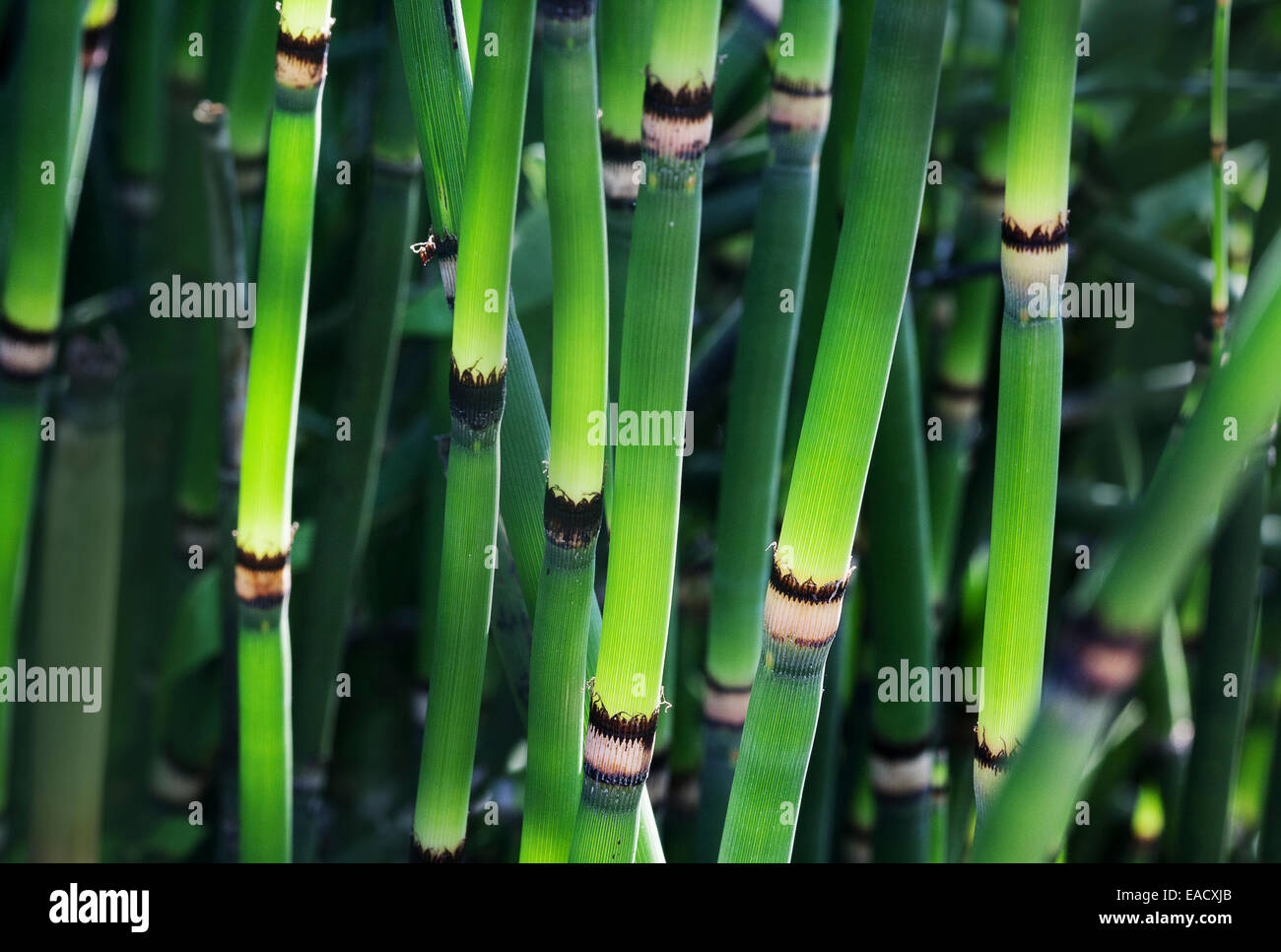 Horsetail (Equisetum sp.) Stock Photohttps://www.alamy.com/image-license-details/?v=1https://www.alamy.com/stock-photo-horsetail-equisetum-sp-75272355.html
Horsetail (Equisetum sp.) Stock Photohttps://www.alamy.com/image-license-details/?v=1https://www.alamy.com/stock-photo-horsetail-equisetum-sp-75272355.htmlRMEACXJB–Horsetail (Equisetum sp.)
 Horsetail (Equisetum sp.) grows next to the river Cambridgeshire England UK July Stock Photohttps://www.alamy.com/image-license-details/?v=1https://www.alamy.com/stock-photo-horsetail-equisetum-sp-grows-next-to-the-river-cambridgeshire-england-24962562.html
Horsetail (Equisetum sp.) grows next to the river Cambridgeshire England UK July Stock Photohttps://www.alamy.com/image-license-details/?v=1https://www.alamy.com/stock-photo-horsetail-equisetum-sp-grows-next-to-the-river-cambridgeshire-england-24962562.htmlRMBCH402–Horsetail (Equisetum sp.) grows next to the river Cambridgeshire England UK July
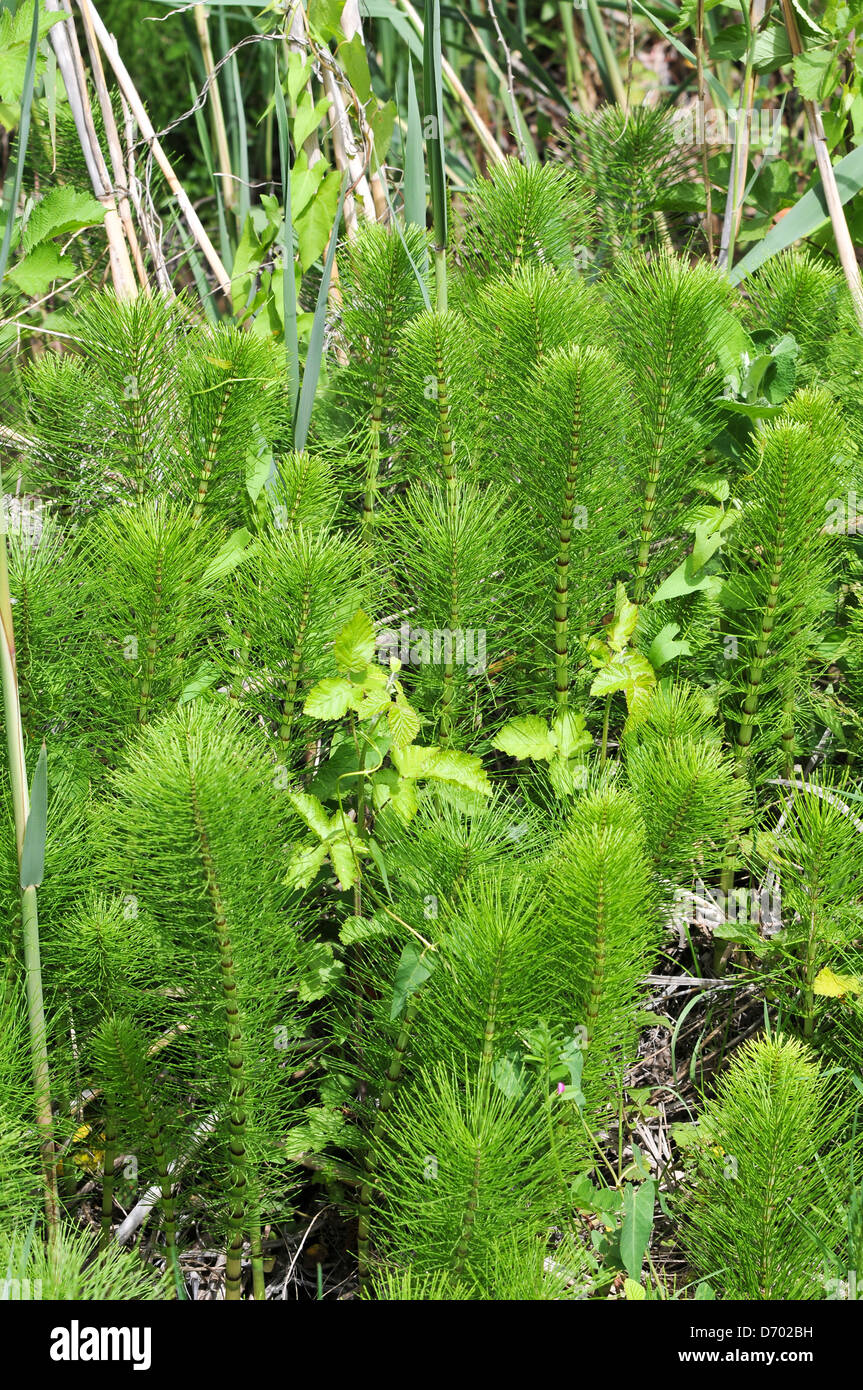 Horsetail plants (Equisetum sp.). Photographed in Israel, Upper Galilee, Hazbani River in April Stock Photohttps://www.alamy.com/image-license-details/?v=1https://www.alamy.com/stock-photo-horsetail-plants-equisetum-sp-photographed-in-israel-upper-galilee-55935589.html
Horsetail plants (Equisetum sp.). Photographed in Israel, Upper Galilee, Hazbani River in April Stock Photohttps://www.alamy.com/image-license-details/?v=1https://www.alamy.com/stock-photo-horsetail-plants-equisetum-sp-photographed-in-israel-upper-galilee-55935589.htmlRMD702BH–Horsetail plants (Equisetum sp.). Photographed in Israel, Upper Galilee, Hazbani River in April
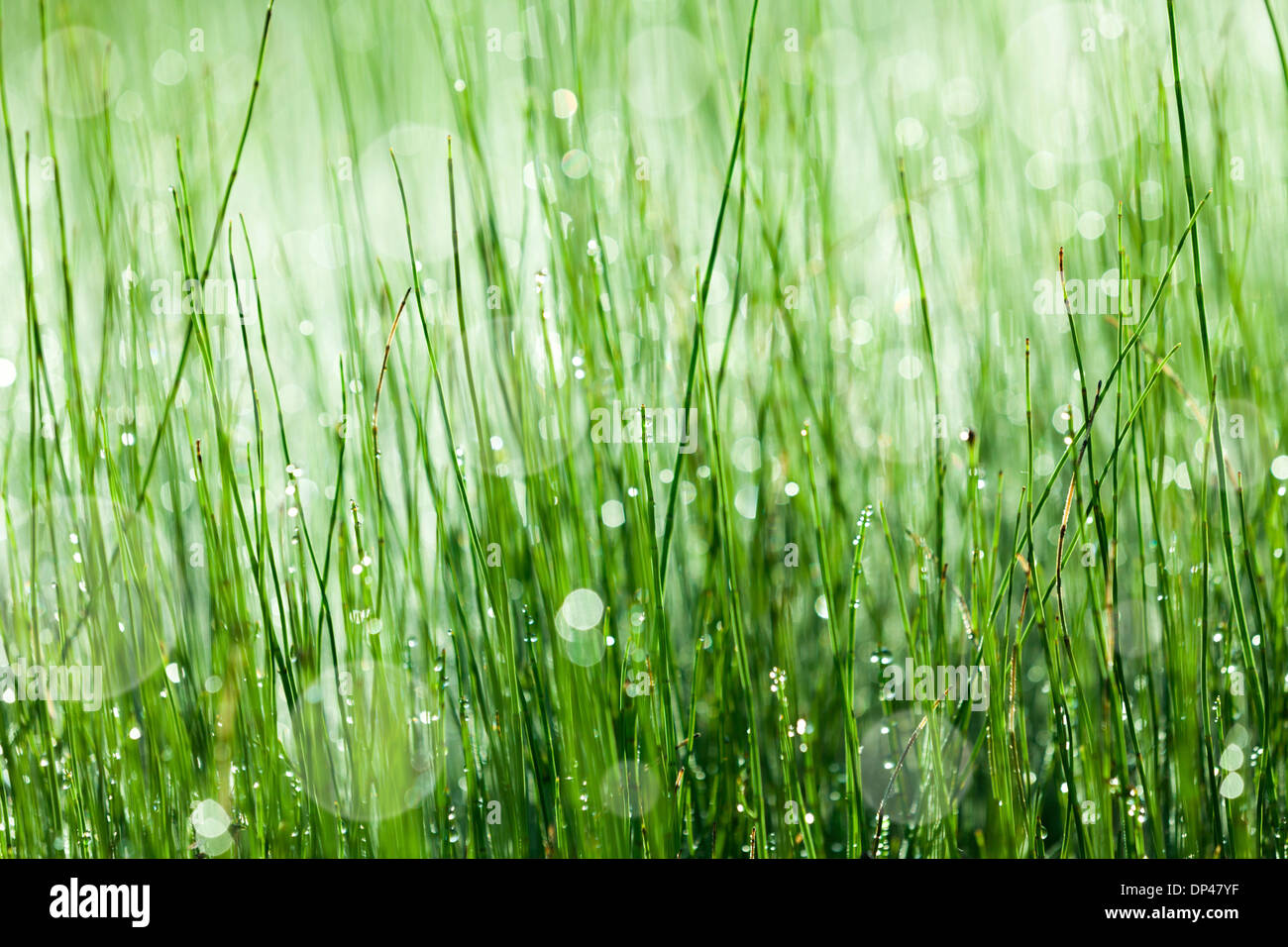 Horsetail Equisetum sp plant Stock Photohttps://www.alamy.com/image-license-details/?v=1https://www.alamy.com/horsetail-equisetum-sp-plant-image65247603.html
Horsetail Equisetum sp plant Stock Photohttps://www.alamy.com/image-license-details/?v=1https://www.alamy.com/horsetail-equisetum-sp-plant-image65247603.htmlRFDP47YF–Horsetail Equisetum sp plant
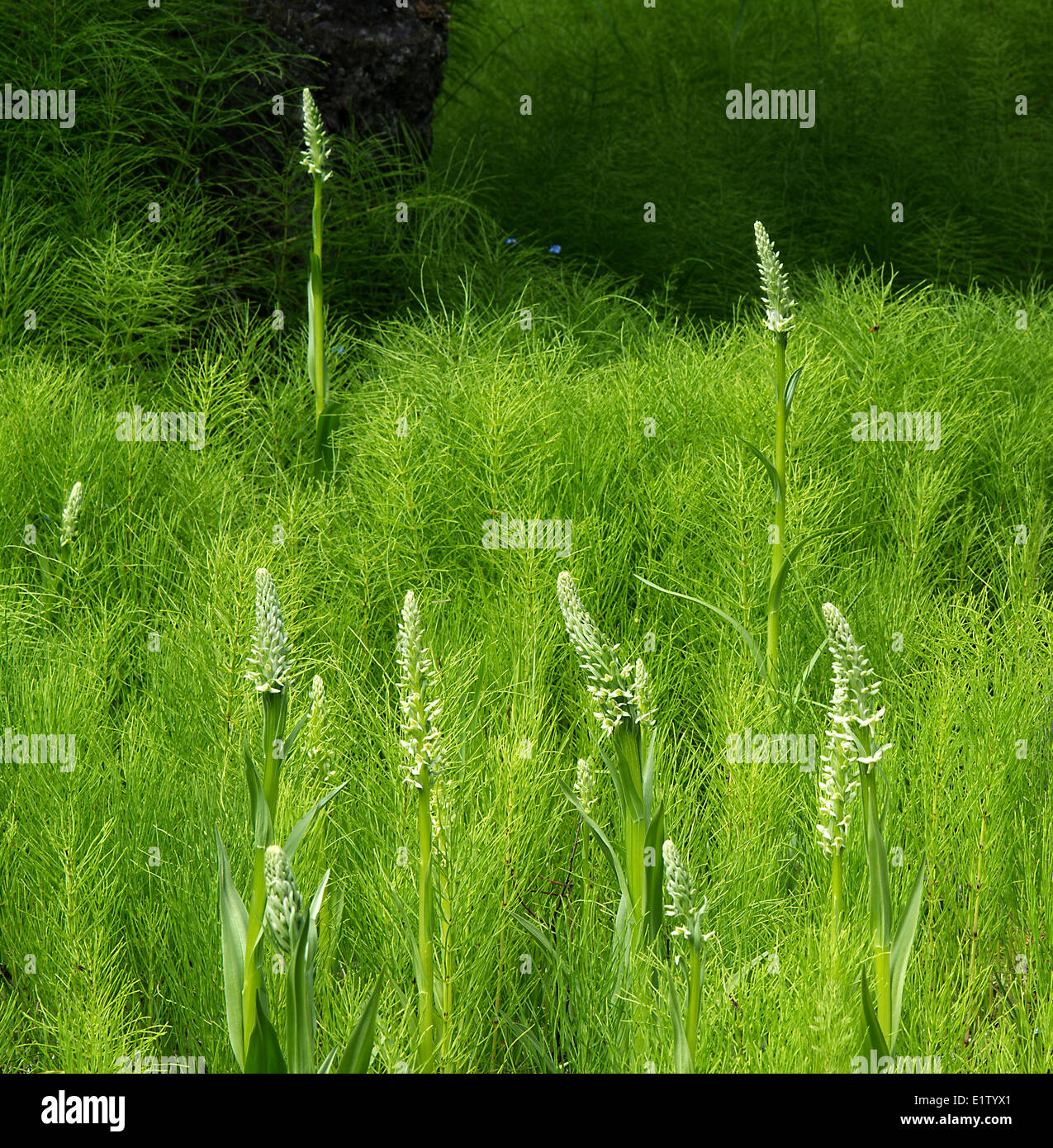 frog orchid Coeloglossum viride in horsetail Equisetum sp. cover western red cedar Thuja plicata western hemlock Tsuga Stock Photohttps://www.alamy.com/image-license-details/?v=1https://www.alamy.com/stock-photo-frog-orchid-coeloglossum-viride-in-horsetail-equisetum-sp-cover-western-70004873.html
frog orchid Coeloglossum viride in horsetail Equisetum sp. cover western red cedar Thuja plicata western hemlock Tsuga Stock Photohttps://www.alamy.com/image-license-details/?v=1https://www.alamy.com/stock-photo-frog-orchid-coeloglossum-viride-in-horsetail-equisetum-sp-cover-western-70004873.htmlRME1TYX1–frog orchid Coeloglossum viride in horsetail Equisetum sp. cover western red cedar Thuja plicata western hemlock Tsuga
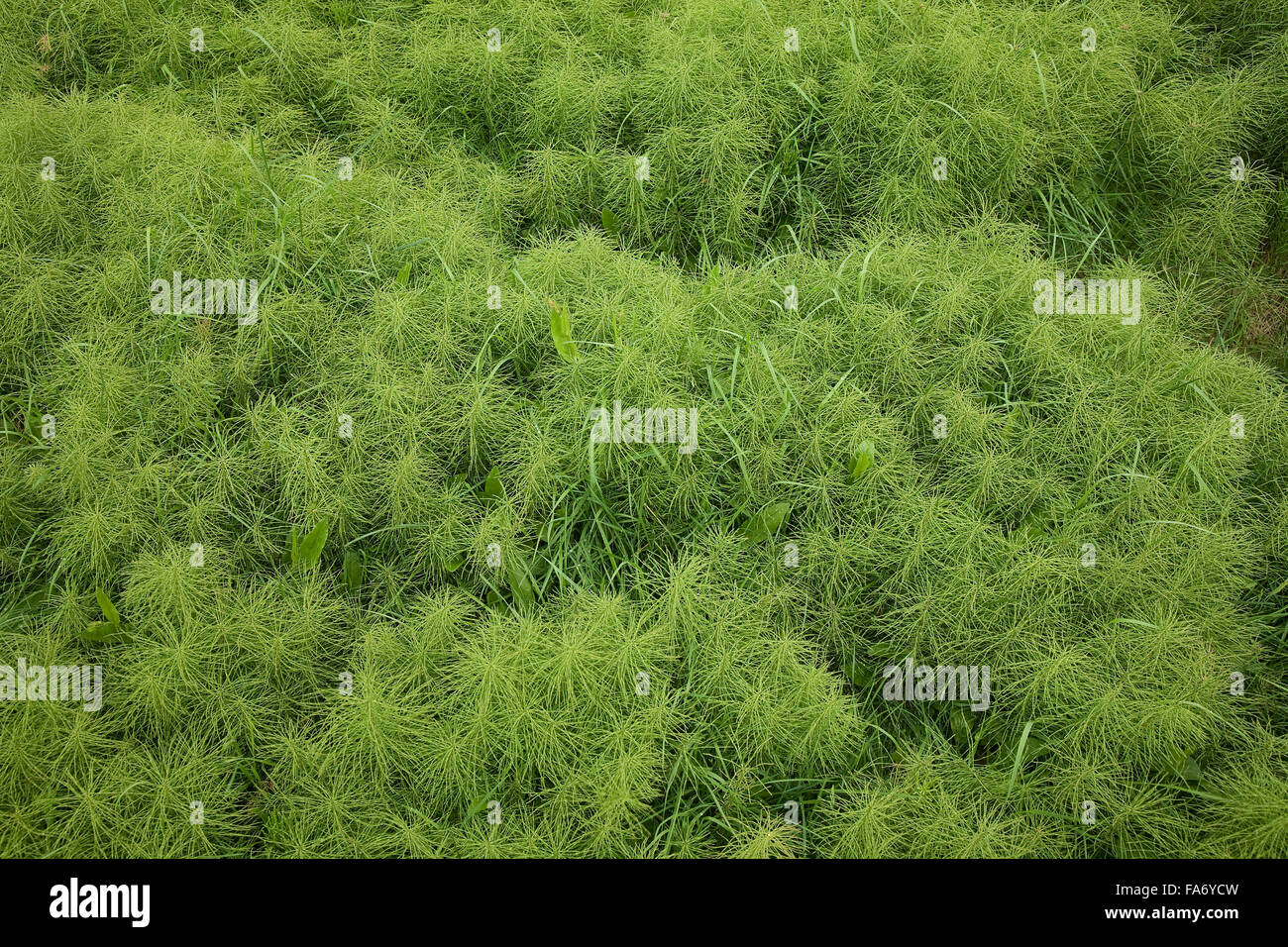 Horsetail, also snakegrass or puzzlegrass (Equisetum sp.), Iceland Stock Photohttps://www.alamy.com/image-license-details/?v=1https://www.alamy.com/stock-photo-horsetail-also-snakegrass-or-puzzlegrass-equisetum-sp-iceland-92351641.html
Horsetail, also snakegrass or puzzlegrass (Equisetum sp.), Iceland Stock Photohttps://www.alamy.com/image-license-details/?v=1https://www.alamy.com/stock-photo-horsetail-also-snakegrass-or-puzzlegrass-equisetum-sp-iceland-92351641.htmlRMFA6YCW–Horsetail, also snakegrass or puzzlegrass (Equisetum sp.), Iceland
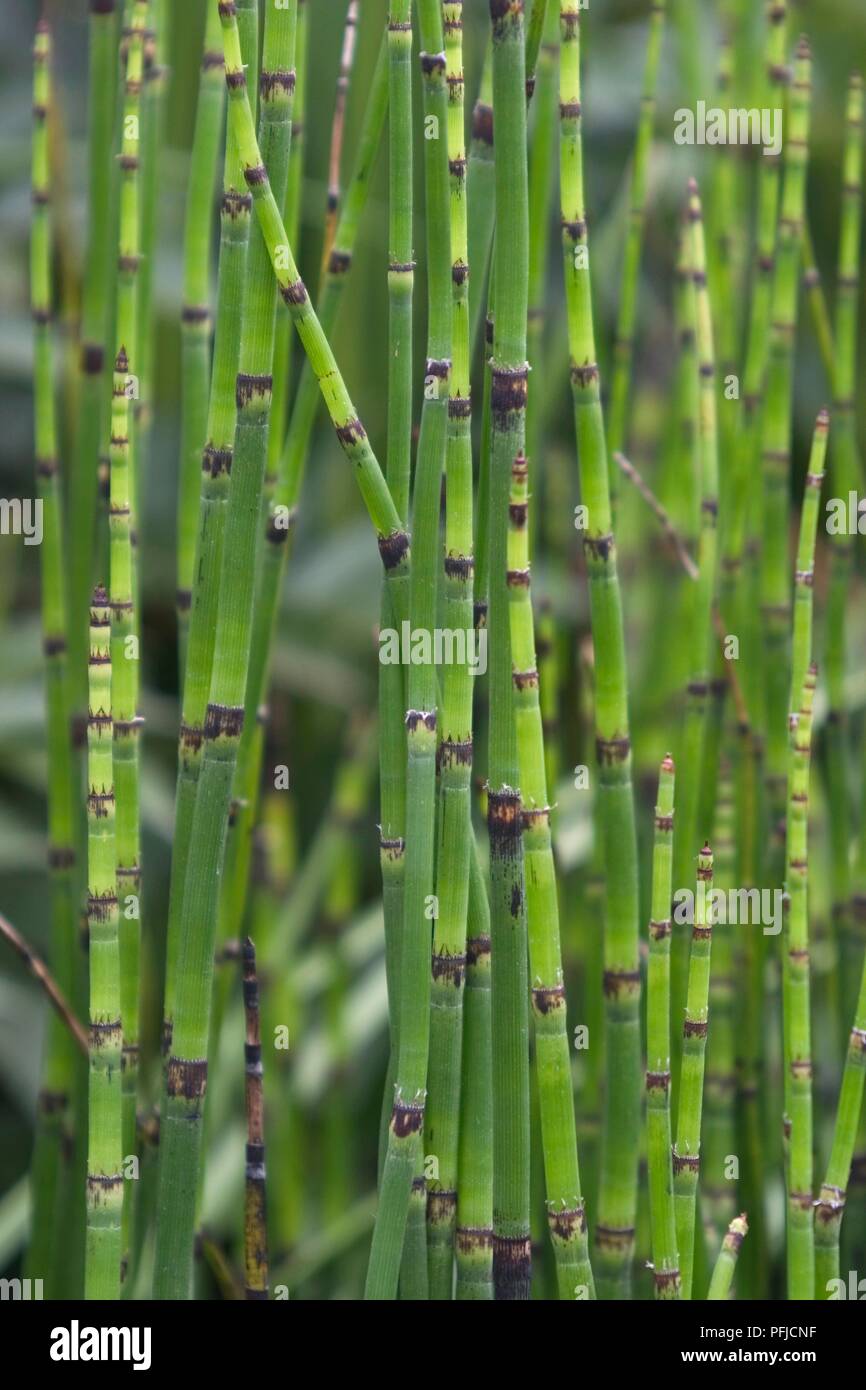 Equisetum sp. (Horsetail), green stems Stock Photohttps://www.alamy.com/image-license-details/?v=1https://www.alamy.com/equisetum-sp-horsetail-green-stems-image216149403.html
Equisetum sp. (Horsetail), green stems Stock Photohttps://www.alamy.com/image-license-details/?v=1https://www.alamy.com/equisetum-sp-horsetail-green-stems-image216149403.htmlRMPFJCNF–Equisetum sp. (Horsetail), green stems
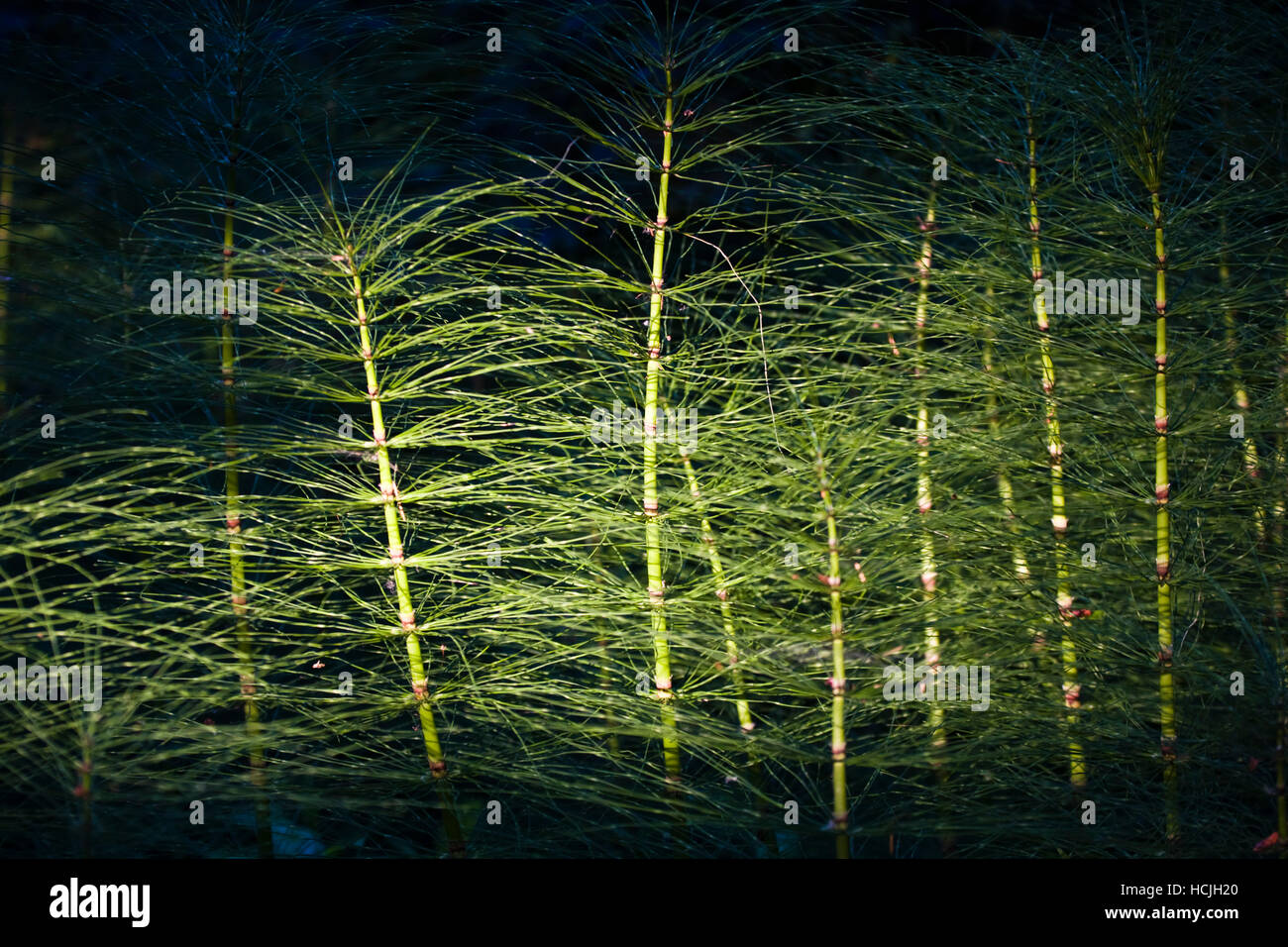 A shaft of light strikes horsetails (Equisetum sp) in the Washington Park Arboretum in Seattle, Washington. The city park, a living museum home to over 20,000 plant species from around the world, celebrates its 75th anniversary this year. Stock Photohttps://www.alamy.com/image-license-details/?v=1https://www.alamy.com/stock-photo-a-shaft-of-light-strikes-horsetails-equisetum-sp-in-the-washington-128256968.html
A shaft of light strikes horsetails (Equisetum sp) in the Washington Park Arboretum in Seattle, Washington. The city park, a living museum home to over 20,000 plant species from around the world, celebrates its 75th anniversary this year. Stock Photohttps://www.alamy.com/image-license-details/?v=1https://www.alamy.com/stock-photo-a-shaft-of-light-strikes-horsetails-equisetum-sp-in-the-washington-128256968.htmlRFHCJH20–A shaft of light strikes horsetails (Equisetum sp) in the Washington Park Arboretum in Seattle, Washington. The city park, a living museum home to over 20,000 plant species from around the world, celebrates its 75th anniversary this year.
 Rocky garden with a planting of Hebe, Equisetum sp, Picea and Eichhornia crassipes Stock Photohttps://www.alamy.com/image-license-details/?v=1https://www.alamy.com/rocky-garden-with-a-planting-of-hebe-equisetum-sp-picea-and-eichhornia-crassipes-image181873038.html
Rocky garden with a planting of Hebe, Equisetum sp, Picea and Eichhornia crassipes Stock Photohttps://www.alamy.com/image-license-details/?v=1https://www.alamy.com/rocky-garden-with-a-planting-of-hebe-equisetum-sp-picea-and-eichhornia-crassipes-image181873038.htmlRMMFW0WJ–Rocky garden with a planting of Hebe, Equisetum sp, Picea and Eichhornia crassipes
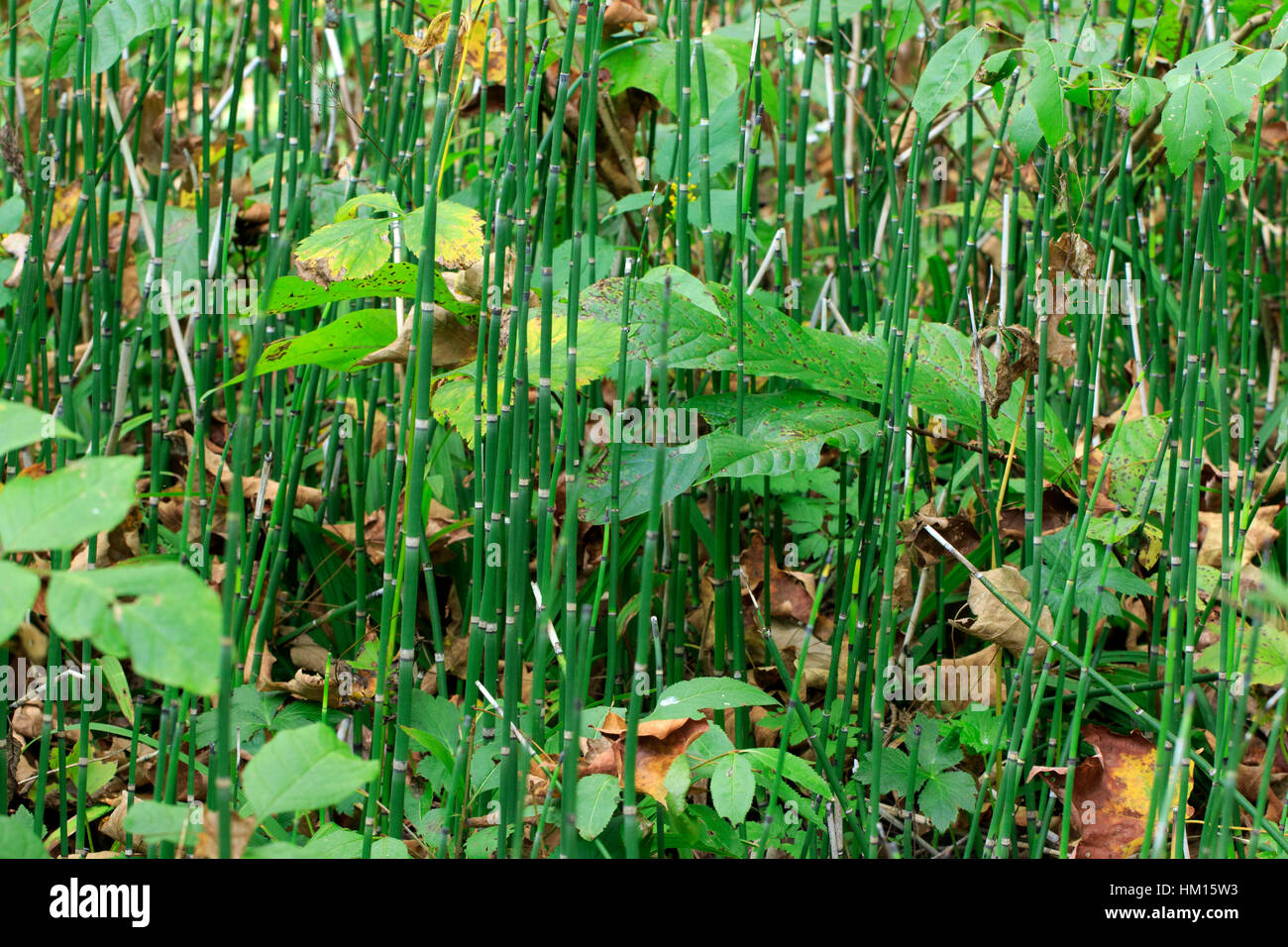 Old horsetail (Equisetum sp.) growing along river bank. Stock Photohttps://www.alamy.com/image-license-details/?v=1https://www.alamy.com/stock-photo-old-horsetail-equisetum-sp-growing-along-river-bank-132792271.html
Old horsetail (Equisetum sp.) growing along river bank. Stock Photohttps://www.alamy.com/image-license-details/?v=1https://www.alamy.com/stock-photo-old-horsetail-equisetum-sp-growing-along-river-bank-132792271.htmlRMHM15W3–Old horsetail (Equisetum sp.) growing along river bank.
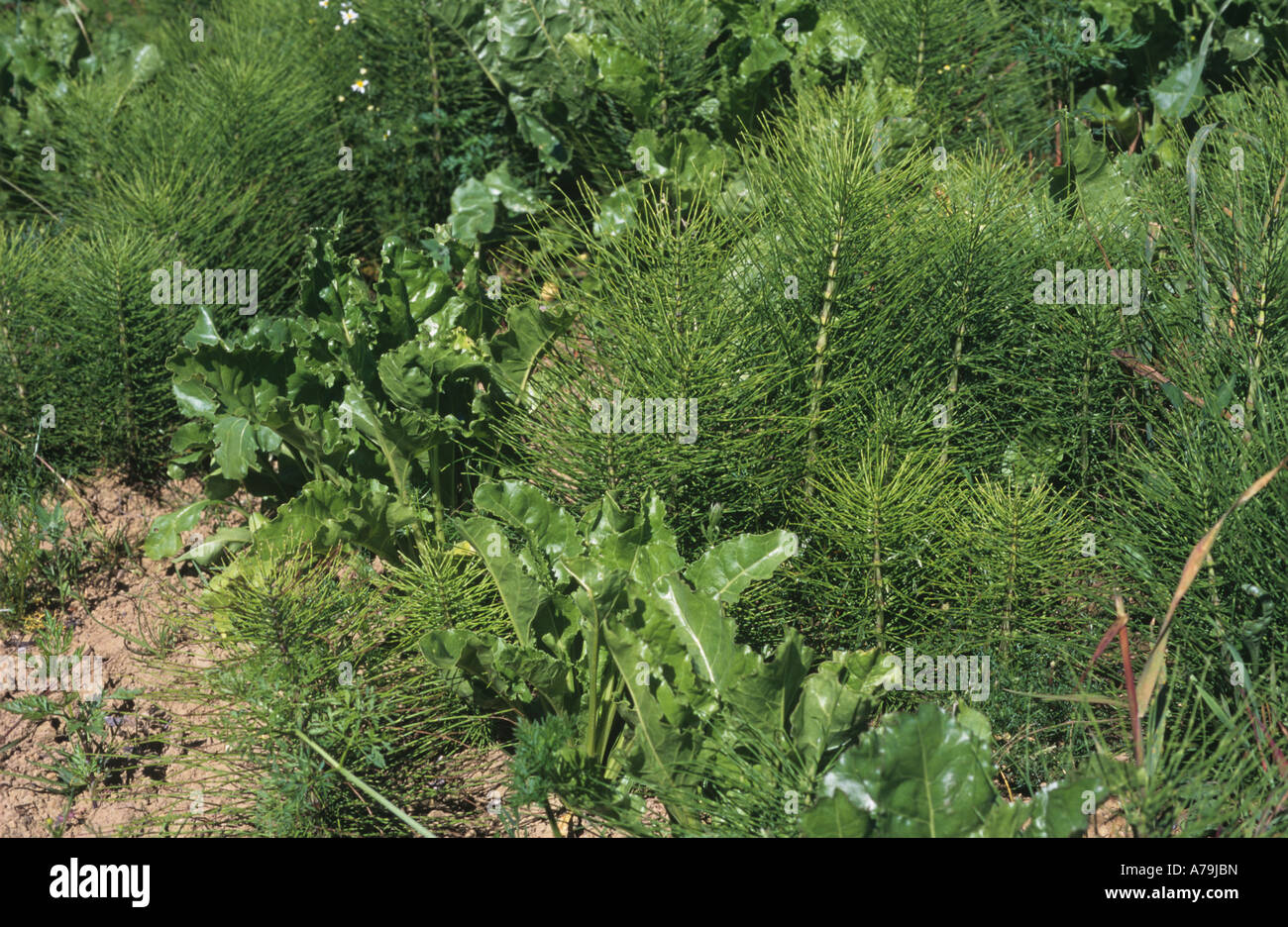 Horsetail Equisetum sp weeds in a young sugar beet crop Stock Photohttps://www.alamy.com/image-license-details/?v=1https://www.alamy.com/stock-photo-horsetail-equisetum-sp-weeds-in-a-young-sugar-beet-crop-11769320.html
Horsetail Equisetum sp weeds in a young sugar beet crop Stock Photohttps://www.alamy.com/image-license-details/?v=1https://www.alamy.com/stock-photo-horsetail-equisetum-sp-weeds-in-a-young-sugar-beet-crop-11769320.htmlRMA79JBN–Horsetail Equisetum sp weeds in a young sugar beet crop
 Light Micrograph (LM) of a transverse section of a stem of a Horsetail Fern (Equisetum sp.) Stock Photohttps://www.alamy.com/image-license-details/?v=1https://www.alamy.com/stock-photo-light-micrograph-lm-of-a-transverse-section-of-a-stem-of-a-horsetail-31612102.html
Light Micrograph (LM) of a transverse section of a stem of a Horsetail Fern (Equisetum sp.) Stock Photohttps://www.alamy.com/image-license-details/?v=1https://www.alamy.com/stock-photo-light-micrograph-lm-of-a-transverse-section-of-a-stem-of-a-horsetail-31612102.htmlRMBRC1FJ–Light Micrograph (LM) of a transverse section of a stem of a Horsetail Fern (Equisetum sp.)
 Raft Spider (Dolomedes fimbriatus) female resting on the surface of a moorland pool among stems of Horsetail (Equisetum sp.). Nordtirol, Austrian Alps, June. Stock Photohttps://www.alamy.com/image-license-details/?v=1https://www.alamy.com/raft-spider-dolomedes-fimbriatus-female-resting-on-the-surface-of-a-moorland-pool-among-stems-of-horsetail-equisetum-sp-nordtirol-austrian-alps-june-image213518049.html
Raft Spider (Dolomedes fimbriatus) female resting on the surface of a moorland pool among stems of Horsetail (Equisetum sp.). Nordtirol, Austrian Alps, June. Stock Photohttps://www.alamy.com/image-license-details/?v=1https://www.alamy.com/raft-spider-dolomedes-fimbriatus-female-resting-on-the-surface-of-a-moorland-pool-among-stems-of-horsetail-equisetum-sp-nordtirol-austrian-alps-june-image213518049.htmlRMPBAGCH–Raft Spider (Dolomedes fimbriatus) female resting on the surface of a moorland pool among stems of Horsetail (Equisetum sp.). Nordtirol, Austrian Alps, June.
 'Box stalk in the moor lake, Norway; Norway; Kval ? ?ya; Storvatnet; lake; brine; moor; bent; plants; plants; box stalk; equisetum sp., horse tail, ta Stock Photohttps://www.alamy.com/image-license-details/?v=1https://www.alamy.com/stock-photo-box-stalk-in-the-moor-lake-norway-norway-kval-ya-storvatnet-lake-brine-136218031.html
'Box stalk in the moor lake, Norway; Norway; Kval ? ?ya; Storvatnet; lake; brine; moor; bent; plants; plants; box stalk; equisetum sp., horse tail, ta Stock Photohttps://www.alamy.com/image-license-details/?v=1https://www.alamy.com/stock-photo-box-stalk-in-the-moor-lake-norway-norway-kval-ya-storvatnet-lake-brine-136218031.htmlRMHWH7DK–'Box stalk in the moor lake, Norway; Norway; Kval ? ?ya; Storvatnet; lake; brine; moor; bent; plants; plants; box stalk; equisetum sp., horse tail, ta
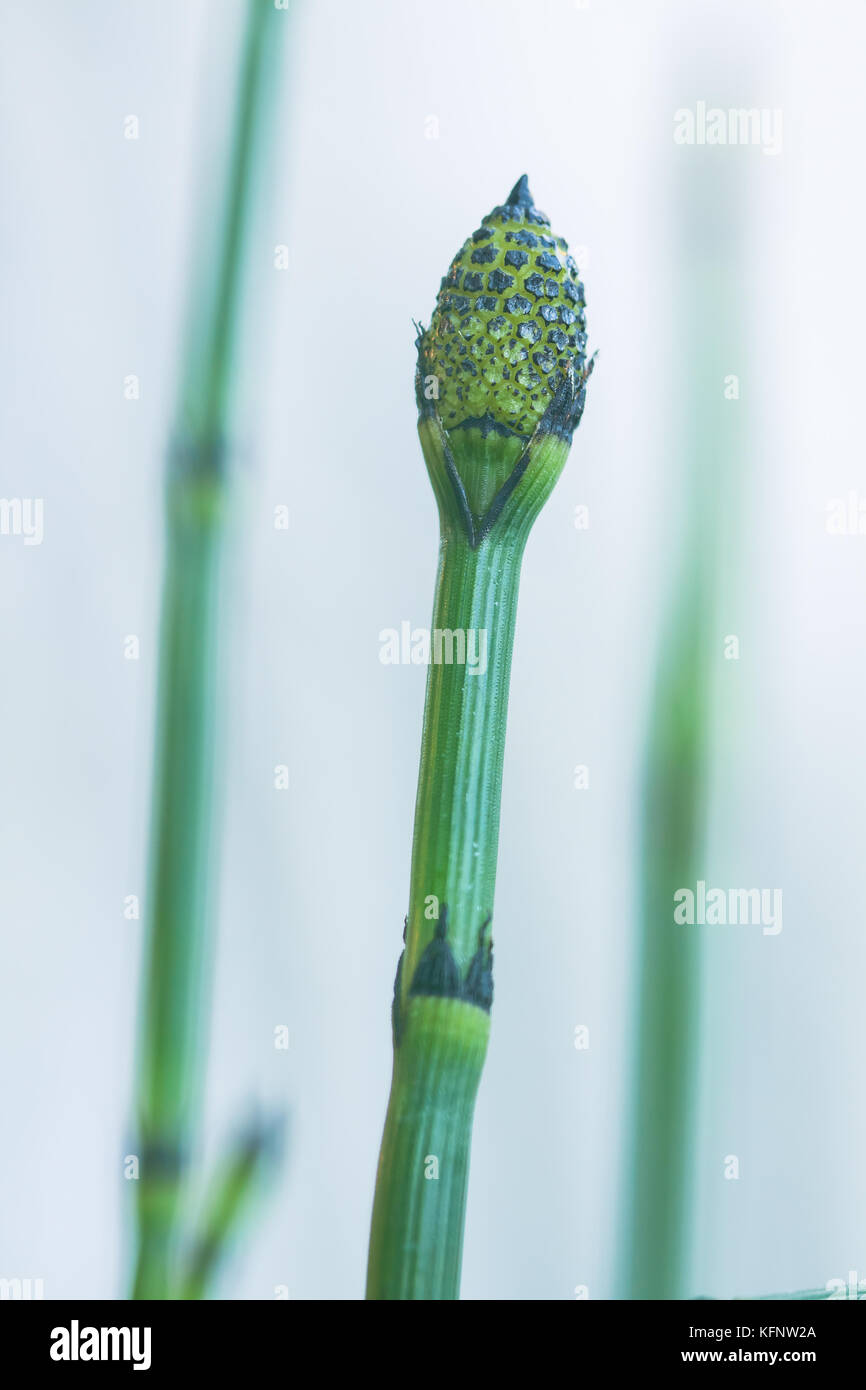 close up of the strobilus, a reproductive organ of the snake grass (Equisetum sp.) Stock Photohttps://www.alamy.com/image-license-details/?v=1https://www.alamy.com/stock-image-close-up-of-the-strobilus-a-reproductive-organ-of-the-snake-grass-164593810.html
close up of the strobilus, a reproductive organ of the snake grass (Equisetum sp.) Stock Photohttps://www.alamy.com/image-license-details/?v=1https://www.alamy.com/stock-image-close-up-of-the-strobilus-a-reproductive-organ-of-the-snake-grass-164593810.htmlRFKFNW2A–close up of the strobilus, a reproductive organ of the snake grass (Equisetum sp.)
 Horsetail spores (Equisetum sp.). Optical microscope X400. Stock Photohttps://www.alamy.com/image-license-details/?v=1https://www.alamy.com/horsetail-spores-equisetum-sp-optical-microscope-x400-image575103359.html
Horsetail spores (Equisetum sp.). Optical microscope X400. Stock Photohttps://www.alamy.com/image-license-details/?v=1https://www.alamy.com/horsetail-spores-equisetum-sp-optical-microscope-x400-image575103359.htmlRF2TBJ65K–Horsetail spores (Equisetum sp.). Optical microscope X400.
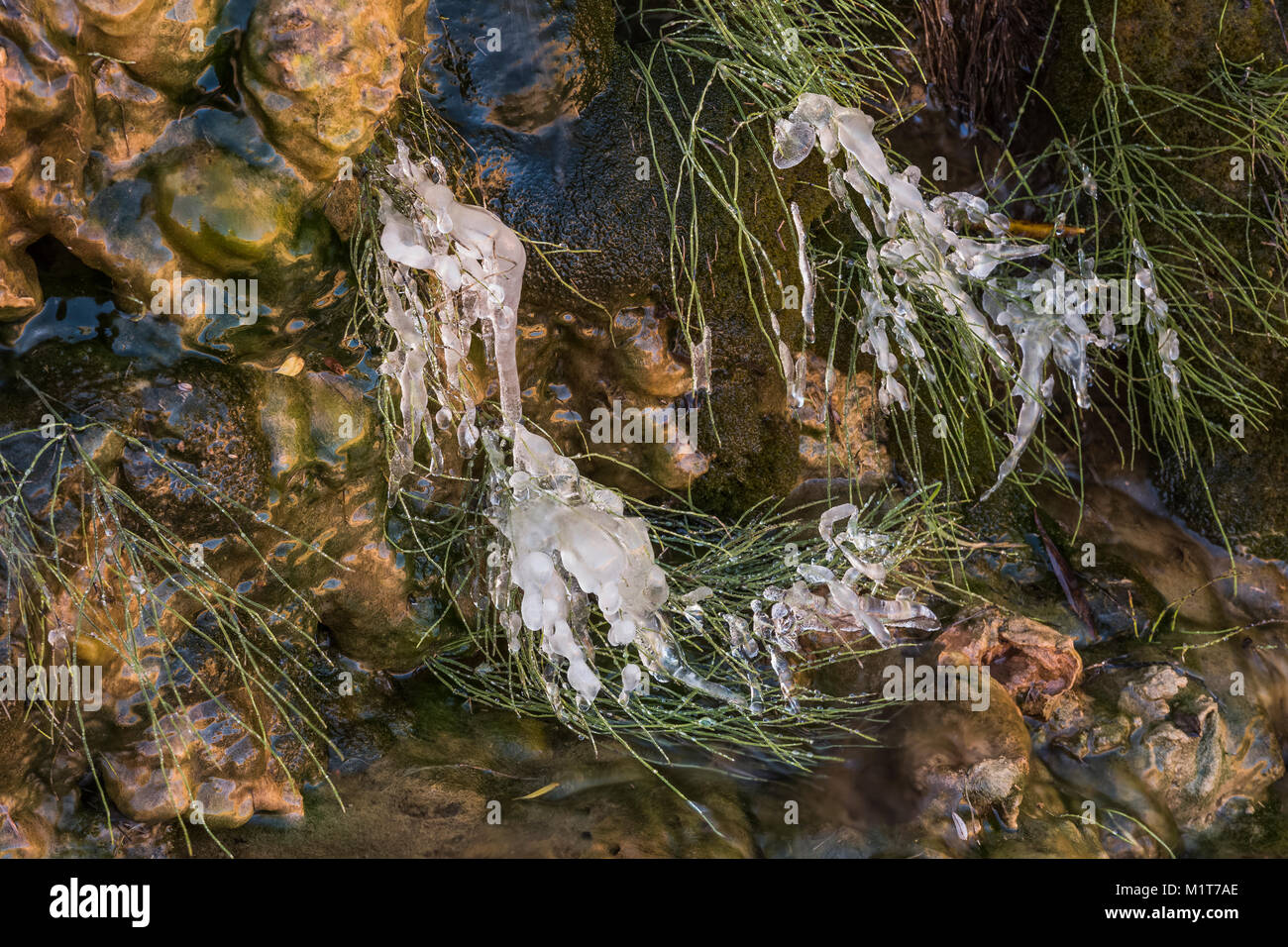 Icy morning at a spring within Salt Creek Canyon in The Needles District of Canyonlands National Park, Utah, USA Stock Photohttps://www.alamy.com/image-license-details/?v=1https://www.alamy.com/stock-photo-icy-morning-at-a-spring-within-salt-creek-canyon-in-the-needles-district-173250966.html
Icy morning at a spring within Salt Creek Canyon in The Needles District of Canyonlands National Park, Utah, USA Stock Photohttps://www.alamy.com/image-license-details/?v=1https://www.alamy.com/stock-photo-icy-morning-at-a-spring-within-salt-creek-canyon-in-the-needles-district-173250966.htmlRFM1T7AE–Icy morning at a spring within Salt Creek Canyon in The Needles District of Canyonlands National Park, Utah, USA
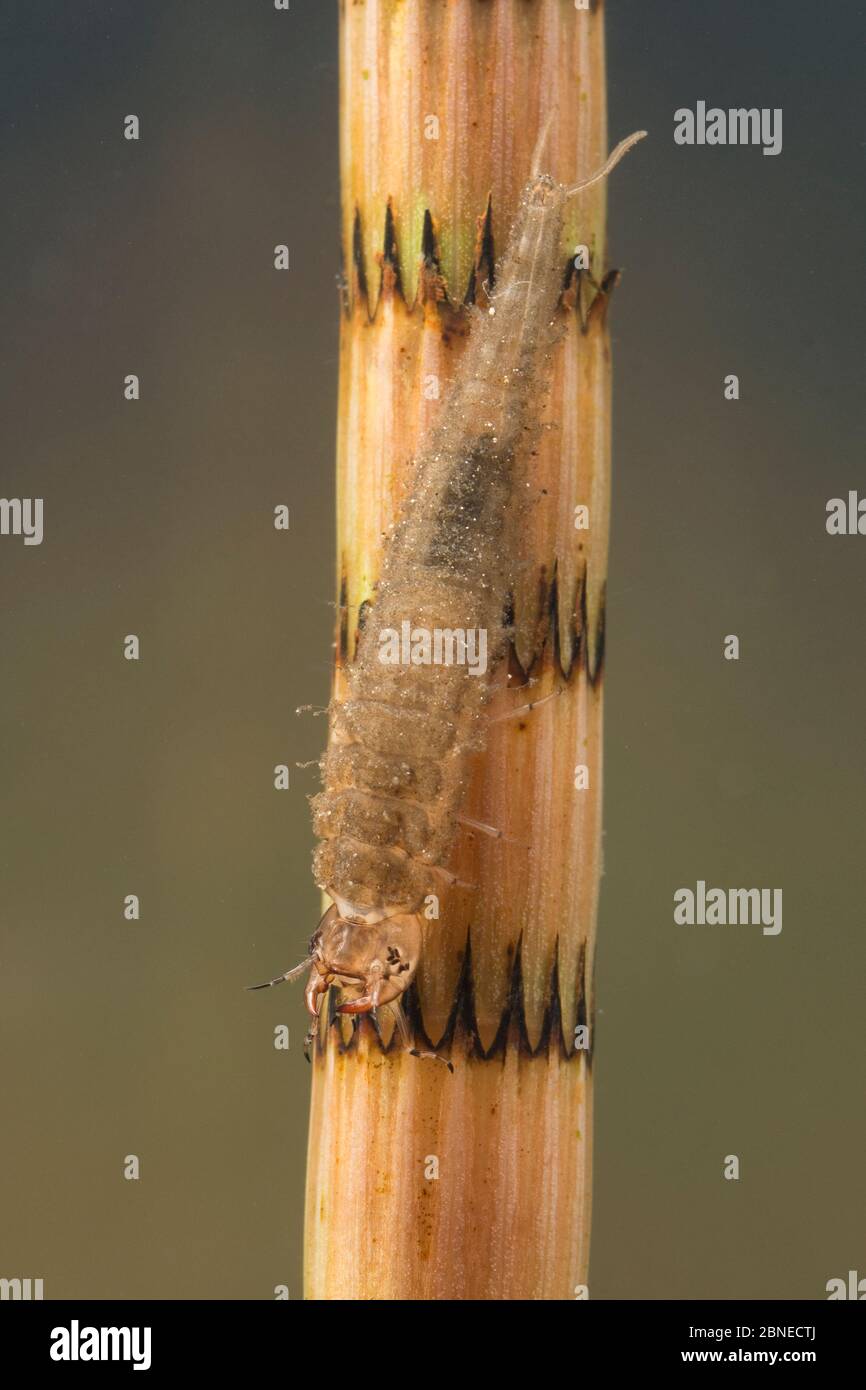 Water scavenger beetle larva (Hydrophilidae) on Horsetail (Equisetum sp) Europe, May. Controlled conditions. Stock Photohttps://www.alamy.com/image-license-details/?v=1https://www.alamy.com/water-scavenger-beetle-larva-hydrophilidae-on-horsetail-equisetum-sp-europe-may-controlled-conditions-image357432562.html
Water scavenger beetle larva (Hydrophilidae) on Horsetail (Equisetum sp) Europe, May. Controlled conditions. Stock Photohttps://www.alamy.com/image-license-details/?v=1https://www.alamy.com/water-scavenger-beetle-larva-hydrophilidae-on-horsetail-equisetum-sp-europe-may-controlled-conditions-image357432562.htmlRM2BNECTJ–Water scavenger beetle larva (Hydrophilidae) on Horsetail (Equisetum sp) Europe, May. Controlled conditions.
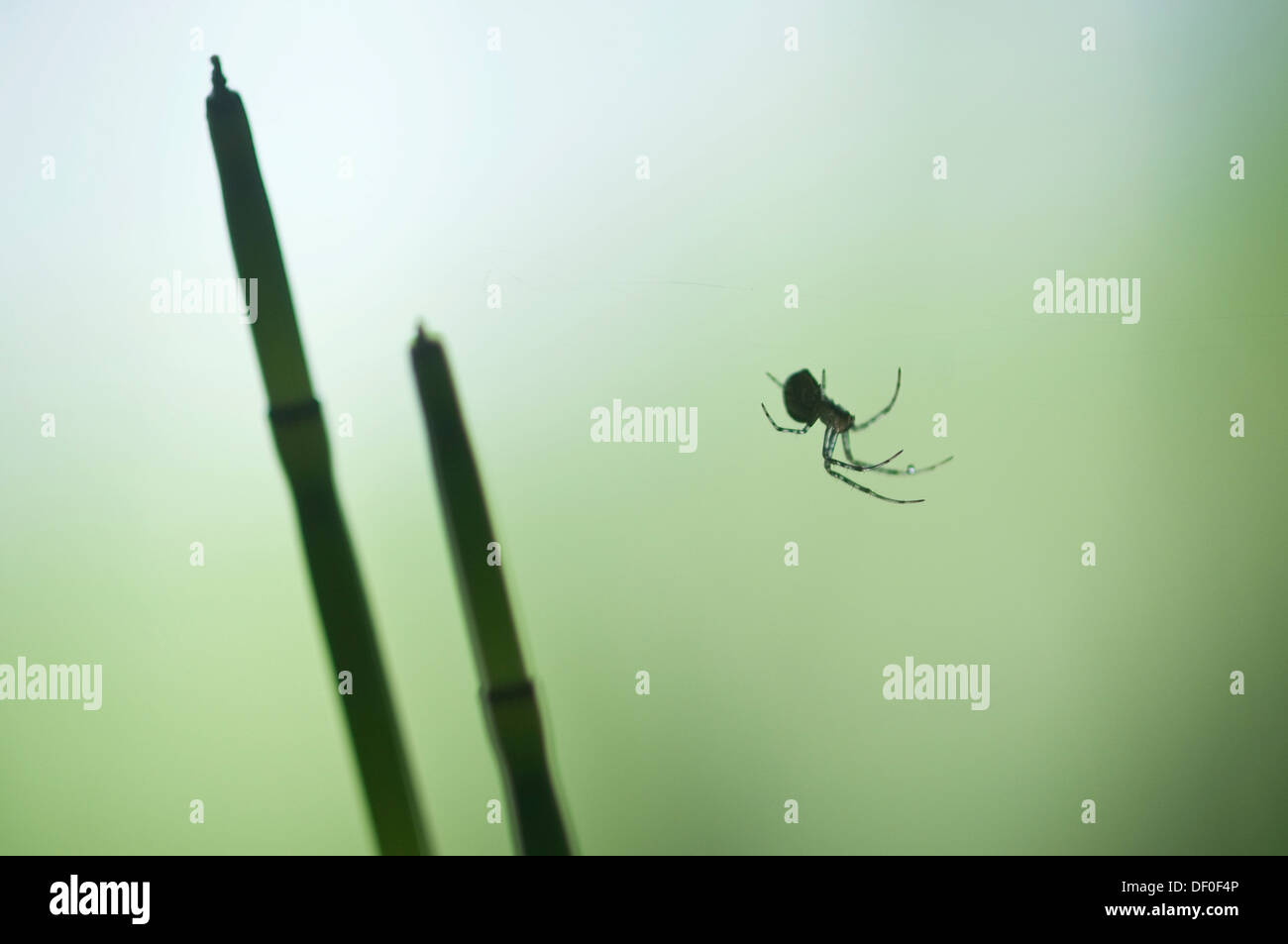 Sheat weaver or Money spider (Linyphiidae sp.) and Water Horsetail (Equisetum fluviatile), Biener Busch, Emsland region Stock Photohttps://www.alamy.com/image-license-details/?v=1https://www.alamy.com/sheat-weaver-or-money-spider-linyphiidae-sp-and-water-horsetail-equisetum-image60862838.html
Sheat weaver or Money spider (Linyphiidae sp.) and Water Horsetail (Equisetum fluviatile), Biener Busch, Emsland region Stock Photohttps://www.alamy.com/image-license-details/?v=1https://www.alamy.com/sheat-weaver-or-money-spider-linyphiidae-sp-and-water-horsetail-equisetum-image60862838.htmlRMDF0F4P–Sheat weaver or Money spider (Linyphiidae sp.) and Water Horsetail (Equisetum fluviatile), Biener Busch, Emsland region
 Silver sedge caddisfly larva (Odontocerum albicorne) on Horsetail (Equisetum sp) Europe, May. Controlled conditions. Stock Photohttps://www.alamy.com/image-license-details/?v=1https://www.alamy.com/silver-sedge-caddisfly-larva-odontocerum-albicorne-on-horsetail-equisetum-sp-europe-may-controlled-conditions-image357432530.html
Silver sedge caddisfly larva (Odontocerum albicorne) on Horsetail (Equisetum sp) Europe, May. Controlled conditions. Stock Photohttps://www.alamy.com/image-license-details/?v=1https://www.alamy.com/silver-sedge-caddisfly-larva-odontocerum-albicorne-on-horsetail-equisetum-sp-europe-may-controlled-conditions-image357432530.htmlRM2BNECRE–Silver sedge caddisfly larva (Odontocerum albicorne) on Horsetail (Equisetum sp) Europe, May. Controlled conditions.
 Horsetail (Equisetum sp.) grows next to the river Cambridgeshire England UK July Stock Photohttps://www.alamy.com/image-license-details/?v=1https://www.alamy.com/stock-photo-horsetail-equisetum-sp-grows-next-to-the-river-cambridgeshire-england-24962572.html
Horsetail (Equisetum sp.) grows next to the river Cambridgeshire England UK July Stock Photohttps://www.alamy.com/image-license-details/?v=1https://www.alamy.com/stock-photo-horsetail-equisetum-sp-grows-next-to-the-river-cambridgeshire-england-24962572.htmlRMBCH40C–Horsetail (Equisetum sp.) grows next to the river Cambridgeshire England UK July
 Horsetail plants (Equisetum sp.). Photographed in Israel, Upper Galilee, Hazbani River in April Stock Photohttps://www.alamy.com/image-license-details/?v=1https://www.alamy.com/stock-photo-horsetail-plants-equisetum-sp-photographed-in-israel-upper-galilee-55935632.html
Horsetail plants (Equisetum sp.). Photographed in Israel, Upper Galilee, Hazbani River in April Stock Photohttps://www.alamy.com/image-license-details/?v=1https://www.alamy.com/stock-photo-horsetail-plants-equisetum-sp-photographed-in-israel-upper-galilee-55935632.htmlRMD702D4–Horsetail plants (Equisetum sp.). Photographed in Israel, Upper Galilee, Hazbani River in April
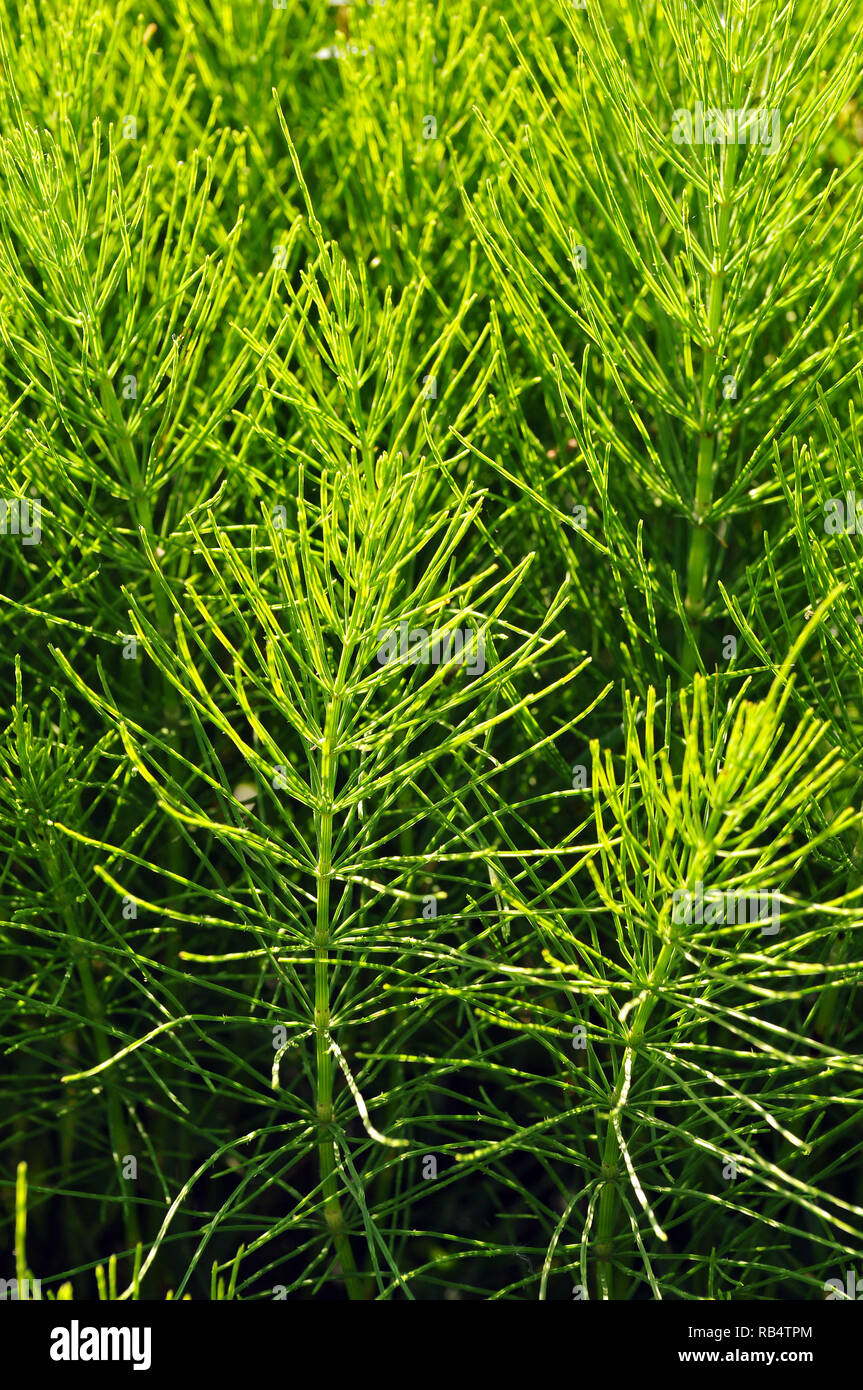 horsetail, Zinnkraut, zsurló, Equisetum sp. Stock Photohttps://www.alamy.com/image-license-details/?v=1https://www.alamy.com/horsetail-zinnkraut-zsurl-equisetum-sp-image230603260.html
horsetail, Zinnkraut, zsurló, Equisetum sp. Stock Photohttps://www.alamy.com/image-license-details/?v=1https://www.alamy.com/horsetail-zinnkraut-zsurl-equisetum-sp-image230603260.htmlRFRB4TPM–horsetail, Zinnkraut, zsurló, Equisetum sp.
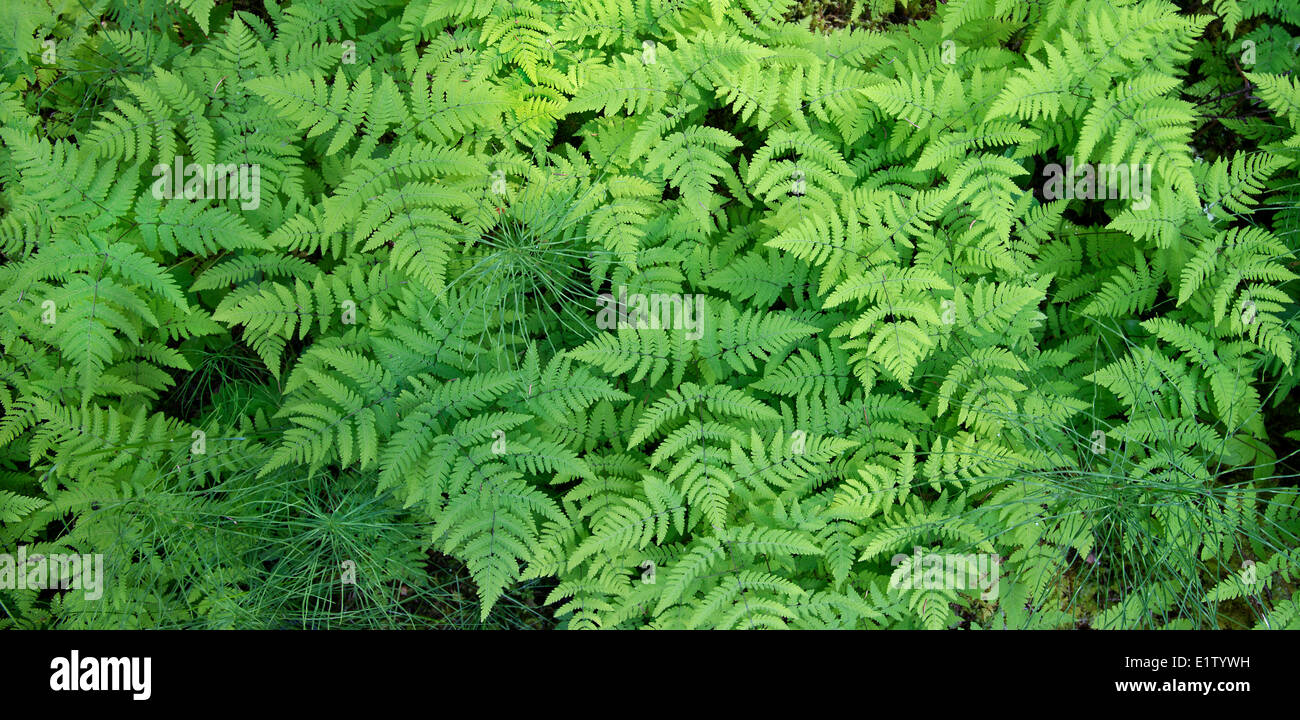 panoramic horizontal forest floor oak fern Gymnocarpium dryopteris horsetail Equisitum sp. in white spruce Picea glauca - Stock Photohttps://www.alamy.com/image-license-details/?v=1https://www.alamy.com/stock-photo-panoramic-horizontal-forest-floor-oak-fern-gymnocarpium-dryopteris-70004861.html
panoramic horizontal forest floor oak fern Gymnocarpium dryopteris horsetail Equisitum sp. in white spruce Picea glauca - Stock Photohttps://www.alamy.com/image-license-details/?v=1https://www.alamy.com/stock-photo-panoramic-horizontal-forest-floor-oak-fern-gymnocarpium-dryopteris-70004861.htmlRME1TYWH–panoramic horizontal forest floor oak fern Gymnocarpium dryopteris horsetail Equisitum sp. in white spruce Picea glauca -
 Horsetail (Equisetum sp), Equisetaceae. Stock Photohttps://www.alamy.com/image-license-details/?v=1https://www.alamy.com/stock-photo-horsetail-equisetum-sp-equisetaceae-133205219.html
Horsetail (Equisetum sp), Equisetaceae. Stock Photohttps://www.alamy.com/image-license-details/?v=1https://www.alamy.com/stock-photo-horsetail-equisetum-sp-equisetaceae-133205219.htmlRMHMM0H7–Horsetail (Equisetum sp), Equisetaceae.
 Equisetum sp horsetail Germany Stock Photohttps://www.alamy.com/image-license-details/?v=1https://www.alamy.com/equisetum-sp-horsetail-germany-image2778178.html
Equisetum sp horsetail Germany Stock Photohttps://www.alamy.com/image-license-details/?v=1https://www.alamy.com/equisetum-sp-horsetail-germany-image2778178.htmlRFAKJ443–Equisetum sp horsetail Germany
 Horsetail Equisetum sp Stock Photohttps://www.alamy.com/image-license-details/?v=1https://www.alamy.com/horsetail-equisetum-sp-image5090915.html
Horsetail Equisetum sp Stock Photohttps://www.alamy.com/image-license-details/?v=1https://www.alamy.com/horsetail-equisetum-sp-image5090915.htmlRFANRX64–Horsetail Equisetum sp
 Equisetum telmateia sp., the Great Horsetail or Northern Giant Horsetail leaves overhead picture Stock Photohttps://www.alamy.com/image-license-details/?v=1https://www.alamy.com/equisetum-telmateia-sp-the-great-horsetail-or-northern-giant-horsetail-leaves-overhead-picture-image476119955.html
Equisetum telmateia sp., the Great Horsetail or Northern Giant Horsetail leaves overhead picture Stock Photohttps://www.alamy.com/image-license-details/?v=1https://www.alamy.com/equisetum-telmateia-sp-the-great-horsetail-or-northern-giant-horsetail-leaves-overhead-picture-image476119955.htmlRF2JJH3T3–Equisetum telmateia sp., the Great Horsetail or Northern Giant Horsetail leaves overhead picture
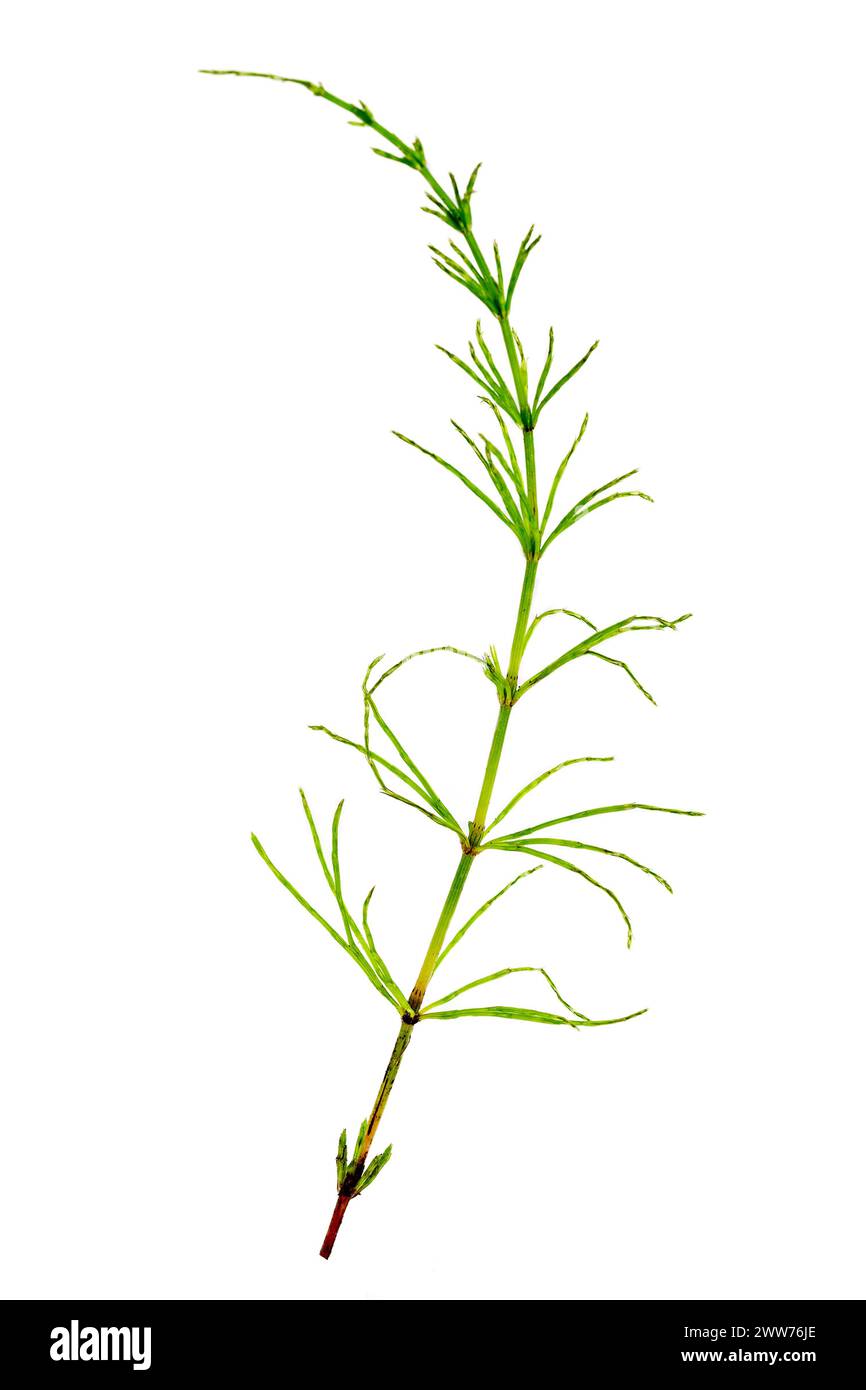 The field horsetail, Equisetum arvense, is a herbaceous perennial fern belonging to the Equisetaceae family. Stock Photohttps://www.alamy.com/image-license-details/?v=1https://www.alamy.com/the-field-horsetail-equisetum-arvense-is-a-herbaceous-perennial-fern-belonging-to-the-equisetaceae-family-image600677798.html
The field horsetail, Equisetum arvense, is a herbaceous perennial fern belonging to the Equisetaceae family. Stock Photohttps://www.alamy.com/image-license-details/?v=1https://www.alamy.com/the-field-horsetail-equisetum-arvense-is-a-herbaceous-perennial-fern-belonging-to-the-equisetaceae-family-image600677798.htmlRF2WW76JE–The field horsetail, Equisetum arvense, is a herbaceous perennial fern belonging to the Equisetaceae family.
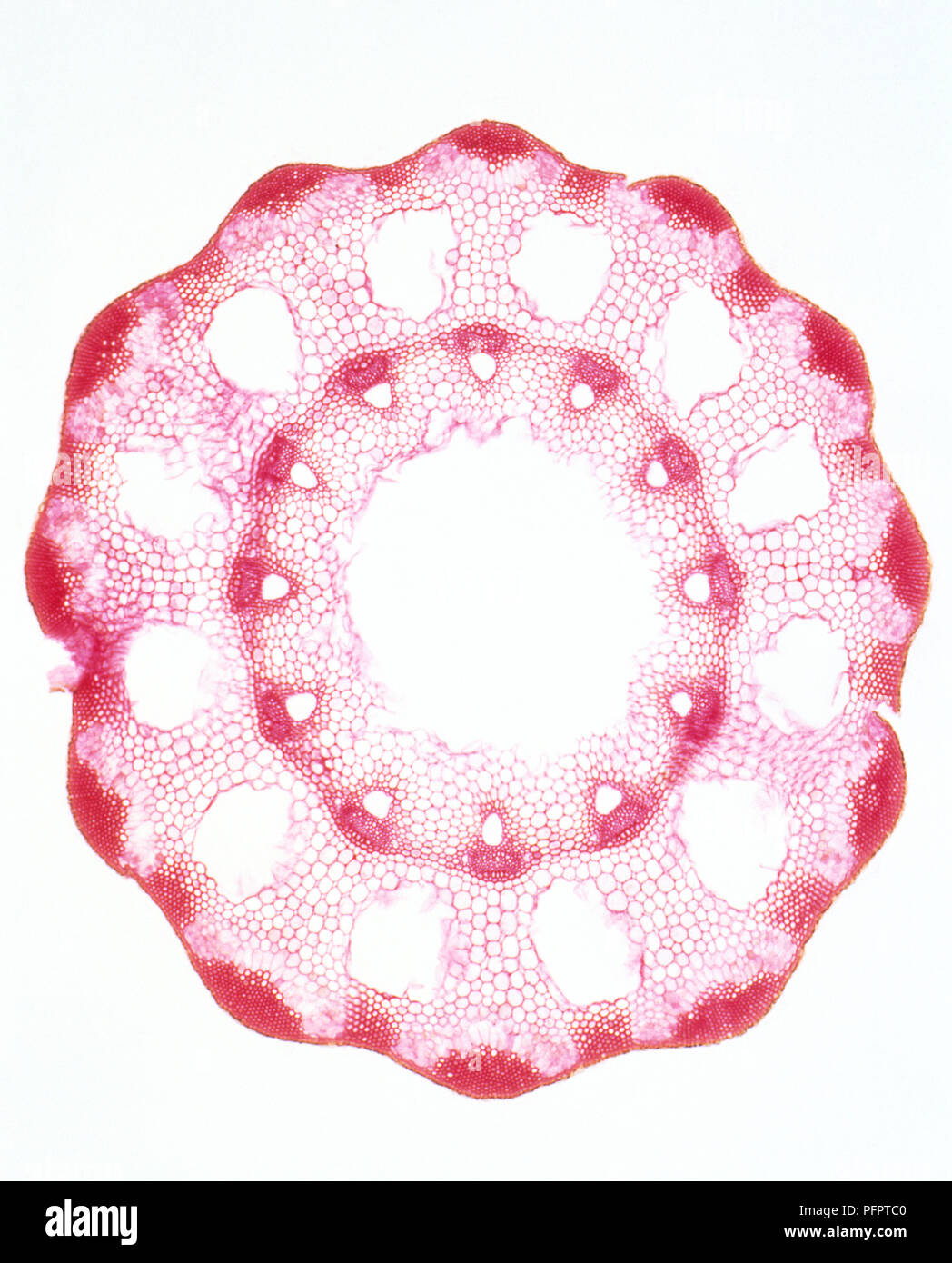 Micrograph of stem of Equisetum sp. (Horsetail), cross-section Stock Photohttps://www.alamy.com/image-license-details/?v=1https://www.alamy.com/micrograph-of-stem-of-equisetum-sp-horsetail-cross-section-image216246352.html
Micrograph of stem of Equisetum sp. (Horsetail), cross-section Stock Photohttps://www.alamy.com/image-license-details/?v=1https://www.alamy.com/micrograph-of-stem-of-equisetum-sp-horsetail-cross-section-image216246352.htmlRMPFPTC0–Micrograph of stem of Equisetum sp. (Horsetail), cross-section
 Field Horsetail (Equisetum arvense) fertile cones, with Cranefly (Tipula sp.), Sheffield, South Yorkshire, England, United Kingdom Stock Photohttps://www.alamy.com/image-license-details/?v=1https://www.alamy.com/field-horsetail-equisetum-arvense-fertile-cones-with-cranefly-tipula-sp-sheffield-south-yorkshire-england-united-kingdom-image543161384.html
Field Horsetail (Equisetum arvense) fertile cones, with Cranefly (Tipula sp.), Sheffield, South Yorkshire, England, United Kingdom Stock Photohttps://www.alamy.com/image-license-details/?v=1https://www.alamy.com/field-horsetail-equisetum-arvense-fertile-cones-with-cranefly-tipula-sp-sheffield-south-yorkshire-england-united-kingdom-image543161384.htmlRM2PFK3TT–Field Horsetail (Equisetum arvense) fertile cones, with Cranefly (Tipula sp.), Sheffield, South Yorkshire, England, United Kingdom
 Fossil Asterophyllites, branch of a Calamites sp. tree from the Carboniferous Period Stock Photohttps://www.alamy.com/image-license-details/?v=1https://www.alamy.com/stock-photo-fossil-asterophyllites-branch-of-a-calamites-sp-tree-from-the-carboniferous-92948508.html
Fossil Asterophyllites, branch of a Calamites sp. tree from the Carboniferous Period Stock Photohttps://www.alamy.com/image-license-details/?v=1https://www.alamy.com/stock-photo-fossil-asterophyllites-branch-of-a-calamites-sp-tree-from-the-carboniferous-92948508.htmlRMFB64NG–Fossil Asterophyllites, branch of a Calamites sp. tree from the Carboniferous Period
 Equisetum sp Equisetum sp. Stock Photohttps://www.alamy.com/image-license-details/?v=1https://www.alamy.com/equisetum-sp-equisetum-sp-image360476958.html
Equisetum sp Equisetum sp. Stock Photohttps://www.alamy.com/image-license-details/?v=1https://www.alamy.com/equisetum-sp-equisetum-sp-image360476958.htmlRM2BXD412–Equisetum sp Equisetum sp.
 RAINDROPS on Horsetail Equisetum sp. California, USA Stock Photohttps://www.alamy.com/image-license-details/?v=1https://www.alamy.com/raindrops-on-horsetail-equisetum-sp-california-usa-image181636044.html
RAINDROPS on Horsetail Equisetum sp. California, USA Stock Photohttps://www.alamy.com/image-license-details/?v=1https://www.alamy.com/raindrops-on-horsetail-equisetum-sp-california-usa-image181636044.htmlRMMFE6HG–RAINDROPS on Horsetail Equisetum sp. California, USA
 Horsetail spores (Equisetum sp.). Optical microscope X200. Stock Photohttps://www.alamy.com/image-license-details/?v=1https://www.alamy.com/horsetail-spores-equisetum-sp-optical-microscope-x200-image575102566.html
Horsetail spores (Equisetum sp.). Optical microscope X200. Stock Photohttps://www.alamy.com/image-license-details/?v=1https://www.alamy.com/horsetail-spores-equisetum-sp-optical-microscope-x200-image575102566.htmlRF2TBJ55A–Horsetail spores (Equisetum sp.). Optical microscope X200.
 The field horsetail, Equisetum arvense, is a herbaceous perennial fern belonging to the Equisetaceae family, a group of plants that proliferated several hundred million years ago. It belongs to the group of Pteridophytes. Field horsetail 016818 008 Stock Photohttps://www.alamy.com/image-license-details/?v=1https://www.alamy.com/the-field-horsetail-equisetum-arvense-is-a-herbaceous-perennial-fern-belonging-to-the-equisetaceae-family-a-group-of-plants-that-proliferated-several-hundred-million-years-ago-it-belongs-to-the-group-of-pteridophytes-field-horsetail-016818-008-image607944634.html
The field horsetail, Equisetum arvense, is a herbaceous perennial fern belonging to the Equisetaceae family, a group of plants that proliferated several hundred million years ago. It belongs to the group of Pteridophytes. Field horsetail 016818 008 Stock Photohttps://www.alamy.com/image-license-details/?v=1https://www.alamy.com/the-field-horsetail-equisetum-arvense-is-a-herbaceous-perennial-fern-belonging-to-the-equisetaceae-family-a-group-of-plants-that-proliferated-several-hundred-million-years-ago-it-belongs-to-the-group-of-pteridophytes-field-horsetail-016818-008-image607944634.htmlRM2X927GA–The field horsetail, Equisetum arvense, is a herbaceous perennial fern belonging to the Equisetaceae family, a group of plants that proliferated several hundred million years ago. It belongs to the group of Pteridophytes. Field horsetail 016818 008
 King cup / Marsh marigold (Caltha palustris) among horsetails (Equisetum sp.) in swamp, Iceland Stock Photohttps://www.alamy.com/image-license-details/?v=1https://www.alamy.com/stock-photo-king-cup-marsh-marigold-caltha-palustris-among-horsetails-equisetum-27490478.html
King cup / Marsh marigold (Caltha palustris) among horsetails (Equisetum sp.) in swamp, Iceland Stock Photohttps://www.alamy.com/image-license-details/?v=1https://www.alamy.com/stock-photo-king-cup-marsh-marigold-caltha-palustris-among-horsetails-equisetum-27490478.htmlRMBGM8AP–King cup / Marsh marigold (Caltha palustris) among horsetails (Equisetum sp.) in swamp, Iceland
 Field Horsetail (Equisetum arvense) fertile cones, with Cranefly (Tipula sp.), Sheffield, South Yorkshire, England, may Stock Photohttps://www.alamy.com/image-license-details/?v=1https://www.alamy.com/stock-photo-field-horsetail-equisetum-arvense-fertile-cones-with-cranefly-tipula-47808671.html
Field Horsetail (Equisetum arvense) fertile cones, with Cranefly (Tipula sp.), Sheffield, South Yorkshire, England, may Stock Photohttps://www.alamy.com/image-license-details/?v=1https://www.alamy.com/stock-photo-field-horsetail-equisetum-arvense-fertile-cones-with-cranefly-tipula-47808671.htmlRMCNNTCF–Field Horsetail (Equisetum arvense) fertile cones, with Cranefly (Tipula sp.), Sheffield, South Yorkshire, England, may
 Silver sedge caddisfly larva (Odontocerum albicorne) on Horsetail (Equisetum sp) Europe, May. Controlled conditions. Stock Photohttps://www.alamy.com/image-license-details/?v=1https://www.alamy.com/silver-sedge-caddisfly-larva-odontocerum-albicorne-on-horsetail-equisetum-sp-europe-may-controlled-conditions-image357432544.html
Silver sedge caddisfly larva (Odontocerum albicorne) on Horsetail (Equisetum sp) Europe, May. Controlled conditions. Stock Photohttps://www.alamy.com/image-license-details/?v=1https://www.alamy.com/silver-sedge-caddisfly-larva-odontocerum-albicorne-on-horsetail-equisetum-sp-europe-may-controlled-conditions-image357432544.htmlRM2BNECT0–Silver sedge caddisfly larva (Odontocerum albicorne) on Horsetail (Equisetum sp) Europe, May. Controlled conditions.
 Mountain creek with Horsetail Equisetum sp growing on base of tree Cazorla Natural Park Jaen province Andalusia Spain Stock Photohttps://www.alamy.com/image-license-details/?v=1https://www.alamy.com/mountain-creek-with-horsetail-equisetum-sp-growing-on-base-of-tree-image7104338.html
Mountain creek with Horsetail Equisetum sp growing on base of tree Cazorla Natural Park Jaen province Andalusia Spain Stock Photohttps://www.alamy.com/image-license-details/?v=1https://www.alamy.com/mountain-creek-with-horsetail-equisetum-sp-growing-on-base-of-tree-image7104338.htmlRMA9T4N3–Mountain creek with Horsetail Equisetum sp growing on base of tree Cazorla Natural Park Jaen province Andalusia Spain
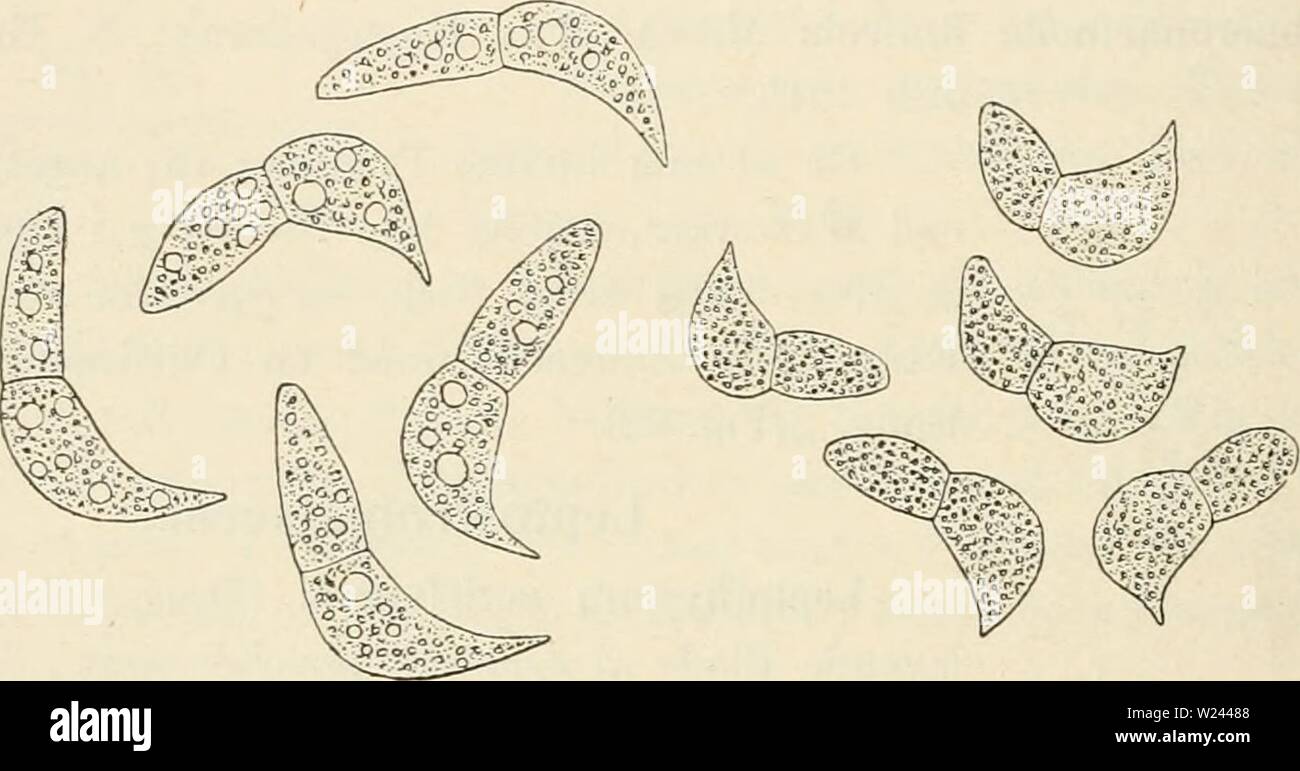 Archive image from page 203 of Dansk botanisk arkiv (1913-1981). Dansk botanisk arkiv danskbotaniskark02dans Year: 1913-1981 34 Dansk Botanisk Arkiv, Bd. 2. Nr. 5. Dinemasporium graininnm Lév. Paa visne Blade af Luzula pilosa. S. Gelsskov, Aug. 1914. Melanconiales. Gloeosporium gallaruni Ch. Rich. Paa Galler, frembragt af Dryophanta sp., paa Blade af Quercus robur. S. Hareskov, Aug. 1915. Gloeosporium equiseti Ell. et Ev. Paa Equisetum fluviatile. S. Eske- mosegaard, Aug. 1913. Gloeosporium mnsarnm Cooke et Mass. var. importatum Laubert. Paa importerede Frugter af Musa. København, Aug. 1912. Stock Photohttps://www.alamy.com/image-license-details/?v=1https://www.alamy.com/archive-image-from-page-203-of-dansk-botanisk-arkiv-1913-1981-dansk-botanisk-arkiv-danskbotaniskark02dans-year-1913-1981-34-dansk-botanisk-arkiv-bd-2-nr-5-dinemasporium-graininnm-lv-paa-visne-blade-af-luzula-pilosa-s-gelsskov-aug-1914-melanconiales-gloeosporium-gallaruni-ch-rich-paa-galler-frembragt-af-dryophanta-sp-paa-blade-af-quercus-robur-s-hareskov-aug-1915-gloeosporium-equiseti-ell-et-ev-paa-equisetum-fluviatile-s-eske-mosegaard-aug-1913-gloeosporium-mnsarnm-cooke-et-mass-var-importatum-laubert-paa-importerede-frugter-af-musa-kbenhavn-aug-1912-image259476008.html
Archive image from page 203 of Dansk botanisk arkiv (1913-1981). Dansk botanisk arkiv danskbotaniskark02dans Year: 1913-1981 34 Dansk Botanisk Arkiv, Bd. 2. Nr. 5. Dinemasporium graininnm Lév. Paa visne Blade af Luzula pilosa. S. Gelsskov, Aug. 1914. Melanconiales. Gloeosporium gallaruni Ch. Rich. Paa Galler, frembragt af Dryophanta sp., paa Blade af Quercus robur. S. Hareskov, Aug. 1915. Gloeosporium equiseti Ell. et Ev. Paa Equisetum fluviatile. S. Eske- mosegaard, Aug. 1913. Gloeosporium mnsarnm Cooke et Mass. var. importatum Laubert. Paa importerede Frugter af Musa. København, Aug. 1912. Stock Photohttps://www.alamy.com/image-license-details/?v=1https://www.alamy.com/archive-image-from-page-203-of-dansk-botanisk-arkiv-1913-1981-dansk-botanisk-arkiv-danskbotaniskark02dans-year-1913-1981-34-dansk-botanisk-arkiv-bd-2-nr-5-dinemasporium-graininnm-lv-paa-visne-blade-af-luzula-pilosa-s-gelsskov-aug-1914-melanconiales-gloeosporium-gallaruni-ch-rich-paa-galler-frembragt-af-dryophanta-sp-paa-blade-af-quercus-robur-s-hareskov-aug-1915-gloeosporium-equiseti-ell-et-ev-paa-equisetum-fluviatile-s-eske-mosegaard-aug-1913-gloeosporium-mnsarnm-cooke-et-mass-var-importatum-laubert-paa-importerede-frugter-af-musa-kbenhavn-aug-1912-image259476008.htmlRMW24488–Archive image from page 203 of Dansk botanisk arkiv (1913-1981). Dansk botanisk arkiv danskbotaniskark02dans Year: 1913-1981 34 Dansk Botanisk Arkiv, Bd. 2. Nr. 5. Dinemasporium graininnm Lév. Paa visne Blade af Luzula pilosa. S. Gelsskov, Aug. 1914. Melanconiales. Gloeosporium gallaruni Ch. Rich. Paa Galler, frembragt af Dryophanta sp., paa Blade af Quercus robur. S. Hareskov, Aug. 1915. Gloeosporium equiseti Ell. et Ev. Paa Equisetum fluviatile. S. Eske- mosegaard, Aug. 1913. Gloeosporium mnsarnm Cooke et Mass. var. importatum Laubert. Paa importerede Frugter af Musa. København, Aug. 1912.
 . Common edible and useful plants of the West. Plants, Edible -- West (U. S. ); Botany, Economic; Botany -- West (U. S. ). HERBS 33 H-1. HORSETAIL, page 3 under W-2. Equisetum sp. See. H-2. WILD ONIONS, Allium sp. The long, slender leaves and the onion-smelling foliage are typical. It was mainly the larger species with large bulbs that Indians used. Aztecs chewed the bulbs to relieve flatu- lency and as food. California Indians ate the bulbs raw and cooked them also over hot ash- es. The whole plant was used as an insect repellant by rubbing on the body. , It is re- puted to be useful as a diu Stock Photohttps://www.alamy.com/image-license-details/?v=1https://www.alamy.com/common-edible-and-useful-plants-of-the-west-plants-edible-west-u-s-botany-economic-botany-west-u-s-herbs-33-h-1-horsetail-page-3-under-w-2-equisetum-sp-see-h-2-wild-onions-allium-sp-the-long-slender-leaves-and-the-onion-smelling-foliage-are-typical-it-was-mainly-the-larger-species-with-large-bulbs-that-indians-used-aztecs-chewed-the-bulbs-to-relieve-flatu-lency-and-as-food-california-indians-ate-the-bulbs-raw-and-cooked-them-also-over-hot-ash-es-the-whole-plant-was-used-as-an-insect-repellant-by-rubbing-on-the-body-it-is-re-puted-to-be-useful-as-a-diu-image232685412.html
. Common edible and useful plants of the West. Plants, Edible -- West (U. S. ); Botany, Economic; Botany -- West (U. S. ). HERBS 33 H-1. HORSETAIL, page 3 under W-2. Equisetum sp. See. H-2. WILD ONIONS, Allium sp. The long, slender leaves and the onion-smelling foliage are typical. It was mainly the larger species with large bulbs that Indians used. Aztecs chewed the bulbs to relieve flatu- lency and as food. California Indians ate the bulbs raw and cooked them also over hot ash- es. The whole plant was used as an insect repellant by rubbing on the body. , It is re- puted to be useful as a diu Stock Photohttps://www.alamy.com/image-license-details/?v=1https://www.alamy.com/common-edible-and-useful-plants-of-the-west-plants-edible-west-u-s-botany-economic-botany-west-u-s-herbs-33-h-1-horsetail-page-3-under-w-2-equisetum-sp-see-h-2-wild-onions-allium-sp-the-long-slender-leaves-and-the-onion-smelling-foliage-are-typical-it-was-mainly-the-larger-species-with-large-bulbs-that-indians-used-aztecs-chewed-the-bulbs-to-relieve-flatu-lency-and-as-food-california-indians-ate-the-bulbs-raw-and-cooked-them-also-over-hot-ash-es-the-whole-plant-was-used-as-an-insect-repellant-by-rubbing-on-the-body-it-is-re-puted-to-be-useful-as-a-diu-image232685412.htmlRMREFMH8–. Common edible and useful plants of the West. Plants, Edible -- West (U. S. ); Botany, Economic; Botany -- West (U. S. ). HERBS 33 H-1. HORSETAIL, page 3 under W-2. Equisetum sp. See. H-2. WILD ONIONS, Allium sp. The long, slender leaves and the onion-smelling foliage are typical. It was mainly the larger species with large bulbs that Indians used. Aztecs chewed the bulbs to relieve flatu- lency and as food. California Indians ate the bulbs raw and cooked them also over hot ash- es. The whole plant was used as an insect repellant by rubbing on the body. , It is re- puted to be useful as a diu
 . Studies in fossil botany . Paleobotany. FRUCTIFICATIONS OF CALAMARIEAE 51 have a type which is essentially the same as that of Equisetum, e.g. Archaeocalamites, for here the sporangio- phores are present alone, without any bracts at all, or only at long intervals (Fig. 24, B). In other cases cones have been found which even more exactly resemble those of recent Equisetaceae. 2. Calamostachys.—I will now shortly describe the. 8m Fig. 18.—Calamostachys Binneyana. Transverse section of cone, passing through a whorl of six peltate sporangiophores, sp. sm. sporangia attached to the peltate lamina Stock Photohttps://www.alamy.com/image-license-details/?v=1https://www.alamy.com/studies-in-fossil-botany-paleobotany-fructifications-of-calamarieae-51-have-a-type-which-is-essentially-the-same-as-that-of-equisetum-eg-archaeocalamites-for-here-the-sporangio-phores-are-present-alone-without-any-bracts-at-all-or-only-at-long-intervals-fig-24-b-in-other-cases-cones-have-been-found-which-even-more-exactly-resemble-those-of-recent-equisetaceae-2-calamostachysi-will-now-shortly-describe-the-8m-fig-18calamostachys-binneyana-transverse-section-of-cone-passing-through-a-whorl-of-six-peltate-sporangiophores-sp-sm-sporangia-attached-to-the-peltate-lamina-image216386605.html
. Studies in fossil botany . Paleobotany. FRUCTIFICATIONS OF CALAMARIEAE 51 have a type which is essentially the same as that of Equisetum, e.g. Archaeocalamites, for here the sporangio- phores are present alone, without any bracts at all, or only at long intervals (Fig. 24, B). In other cases cones have been found which even more exactly resemble those of recent Equisetaceae. 2. Calamostachys.—I will now shortly describe the. 8m Fig. 18.—Calamostachys Binneyana. Transverse section of cone, passing through a whorl of six peltate sporangiophores, sp. sm. sporangia attached to the peltate lamina Stock Photohttps://www.alamy.com/image-license-details/?v=1https://www.alamy.com/studies-in-fossil-botany-paleobotany-fructifications-of-calamarieae-51-have-a-type-which-is-essentially-the-same-as-that-of-equisetum-eg-archaeocalamites-for-here-the-sporangio-phores-are-present-alone-without-any-bracts-at-all-or-only-at-long-intervals-fig-24-b-in-other-cases-cones-have-been-found-which-even-more-exactly-resemble-those-of-recent-equisetaceae-2-calamostachysi-will-now-shortly-describe-the-8m-fig-18calamostachys-binneyana-transverse-section-of-cone-passing-through-a-whorl-of-six-peltate-sporangiophores-sp-sm-sporangia-attached-to-the-peltate-lamina-image216386605.htmlRMPG1791–. Studies in fossil botany . Paleobotany. FRUCTIFICATIONS OF CALAMARIEAE 51 have a type which is essentially the same as that of Equisetum, e.g. Archaeocalamites, for here the sporangio- phores are present alone, without any bracts at all, or only at long intervals (Fig. 24, B). In other cases cones have been found which even more exactly resemble those of recent Equisetaceae. 2. Calamostachys.—I will now shortly describe the. 8m Fig. 18.—Calamostachys Binneyana. Transverse section of cone, passing through a whorl of six peltate sporangiophores, sp. sm. sporangia attached to the peltate lamina
 Great Horsetail (Equisetum sp), Park of the Huts of Marcarolo (Parco Naturale delle Capanne di Marcarolo), Ligurian Apennines, Piedmont, Italy. Stock Photohttps://www.alamy.com/image-license-details/?v=1https://www.alamy.com/stock-photo-great-horsetail-equisetum-sp-park-of-the-huts-of-marcarolo-parco-naturale-86102481.html
Great Horsetail (Equisetum sp), Park of the Huts of Marcarolo (Parco Naturale delle Capanne di Marcarolo), Ligurian Apennines, Piedmont, Italy. Stock Photohttps://www.alamy.com/image-license-details/?v=1https://www.alamy.com/stock-photo-great-horsetail-equisetum-sp-park-of-the-huts-of-marcarolo-parco-naturale-86102481.htmlRMF028GH–Great Horsetail (Equisetum sp), Park of the Huts of Marcarolo (Parco Naturale delle Capanne di Marcarolo), Ligurian Apennines, Piedmont, Italy.
![. è±³7éè Equisetum arvonse L. 1. æ¤&çä¸é¨(示ftå-åffiåç1?ã 0ï¼ 2. æ±å-Kæ¤ï¼3.(a)æ±å-åå¼µéçå½çµ²ï¼ (b)»絲港ç¹å¨æ±å- hã ç»8æ¨è³ Equisetnm hyemale L. ]â¢è¢«ç©çä¸é¨ï¼2.^çä¸é¨ï¼ç¤ºæ±å-èçï¼; 3.è^é¢æ¾å¤§(示11ä¸çå°çªèµ·ï¼ï¼ 4.èç«|åã æ¨è³(åç¥æ¬èï¼glj稱:å§è(æ±åï¼,ç¯éª¨è(æ±åï¼ï¼æ¨[1«è(é稱ï¼å8 Equisetum hyemale L. Sp. PI. (1753) 1062; Kom. Fl. Mansh. I (1901) 156ï¼ Kom. et Alis. Key. PI. Far East. Reg. USSR I (1931)100, tab. 21, fig. 4; Iljin in Kom. Fl. URSS I (1934) 110, tab. V, fig. 8aâb; Kitag. Lineam. Fl. Mansh. (1939) 41; 4>Jopa wypMancKoft Stock Photo . è±³7éè Equisetum arvonse L. 1. æ¤&çä¸é¨(示ftå-åffiåç1?ã 0ï¼ 2. æ±å-Kæ¤ï¼3.(a)æ±å-åå¼µéçå½çµ²ï¼ (b)»絲港ç¹å¨æ±å- hã ç»8æ¨è³ Equisetnm hyemale L. ]â¢è¢«ç©çä¸é¨ï¼2.^çä¸é¨ï¼ç¤ºæ±å-èçï¼; 3.è^é¢æ¾å¤§(示11ä¸çå°çªèµ·ï¼ï¼ 4.èç«|åã æ¨è³(åç¥æ¬èï¼glj稱:å§è(æ±åï¼,ç¯éª¨è(æ±åï¼ï¼æ¨[1«è(é稱ï¼å8 Equisetum hyemale L. Sp. PI. (1753) 1062; Kom. Fl. Mansh. I (1901) 156ï¼ Kom. et Alis. Key. PI. Far East. Reg. USSR I (1931)100, tab. 21, fig. 4; Iljin in Kom. Fl. URSS I (1934) 110, tab. V, fig. 8aâb; Kitag. Lineam. Fl. Mansh. (1939) 41; 4>Jopa wypMancKoft Stock Photo](https://c8.alamy.com/comp/MCJ1TY/7-equisetum-arvonse-l-1-ampft-ffi1-0-2-k3a-b-h-8-equisetnm-hyemale-l-2-311-4-glj-18-equisetum-hyemale-l-sp-pi-1753-1062-kom-fl-mansh-i-1901-156-kom-et-alis-key-pi-far-east-reg-ussr-i-1931100-tab-21-fig-4-iljin-in-kom-fl-urss-i-1934-110-tab-v-fig-8ab-kitag-lineam-fl-mansh-1939-41-4gtjopa-wypmanckoft-MCJ1TY.jpg) . è±³7éè Equisetum arvonse L. 1. æ¤&çä¸é¨(示ftå-åffiåç1?ã 0ï¼ 2. æ±å-Kæ¤ï¼3.(a)æ±å-åå¼µéçå½çµ²ï¼ (b)»絲港ç¹å¨æ±å- hã ç»8æ¨è³ Equisetnm hyemale L. ]â¢è¢«ç©çä¸é¨ï¼2.^çä¸é¨ï¼ç¤ºæ±å-èçï¼; 3.è^é¢æ¾å¤§(示11ä¸çå°çªèµ·ï¼ï¼ 4.èç«|åã æ¨è³(åç¥æ¬èï¼glj稱:å§è(æ±åï¼,ç¯éª¨è(æ±åï¼ï¼æ¨[1«è(é稱ï¼å8 Equisetum hyemale L. Sp. PI. (1753) 1062; Kom. Fl. Mansh. I (1901) 156ï¼ Kom. et Alis. Key. PI. Far East. Reg. USSR I (1931)100, tab. 21, fig. 4; Iljin in Kom. Fl. URSS I (1934) 110, tab. V, fig. 8aâb; Kitag. Lineam. Fl. Mansh. (1939) 41; 4>Jopa wypMancKoft Stock Photohttps://www.alamy.com/image-license-details/?v=1https://www.alamy.com/7-equisetum-arvonse-l-1-ampft-ffi1-0-2-k3a-b-h-8-equisetnm-hyemale-l-2-311-4-glj-18-equisetum-hyemale-l-sp-pi-1753-1062-kom-fl-mansh-i-1901-156-kom-et-alis-key-pi-far-east-reg-ussr-i-1931100-tab-21-fig-4-iljin-in-kom-fl-urss-i-1934-110-tab-v-fig-8ab-kitag-lineam-fl-mansh-1939-41-4gtjopa-wypmanckoft-image179876171.html
. è±³7éè Equisetum arvonse L. 1. æ¤&çä¸é¨(示ftå-åffiåç1?ã 0ï¼ 2. æ±å-Kæ¤ï¼3.(a)æ±å-åå¼µéçå½çµ²ï¼ (b)»絲港ç¹å¨æ±å- hã ç»8æ¨è³ Equisetnm hyemale L. ]â¢è¢«ç©çä¸é¨ï¼2.^çä¸é¨ï¼ç¤ºæ±å-èçï¼; 3.è^é¢æ¾å¤§(示11ä¸çå°çªèµ·ï¼ï¼ 4.èç«|åã æ¨è³(åç¥æ¬èï¼glj稱:å§è(æ±åï¼,ç¯éª¨è(æ±åï¼ï¼æ¨[1«è(é稱ï¼å8 Equisetum hyemale L. Sp. PI. (1753) 1062; Kom. Fl. Mansh. I (1901) 156ï¼ Kom. et Alis. Key. PI. Far East. Reg. USSR I (1931)100, tab. 21, fig. 4; Iljin in Kom. Fl. URSS I (1934) 110, tab. V, fig. 8aâb; Kitag. Lineam. Fl. Mansh. (1939) 41; 4>Jopa wypMancKoft Stock Photohttps://www.alamy.com/image-license-details/?v=1https://www.alamy.com/7-equisetum-arvonse-l-1-ampft-ffi1-0-2-k3a-b-h-8-equisetnm-hyemale-l-2-311-4-glj-18-equisetum-hyemale-l-sp-pi-1753-1062-kom-fl-mansh-i-1901-156-kom-et-alis-key-pi-far-east-reg-ussr-i-1931100-tab-21-fig-4-iljin-in-kom-fl-urss-i-1934-110-tab-v-fig-8ab-kitag-lineam-fl-mansh-1939-41-4gtjopa-wypmanckoft-image179876171.htmlRMMCJ1TY–. è±³7éè Equisetum arvonse L. 1. æ¤&çä¸é¨(示ftå-åffiåç1?ã 0ï¼ 2. æ±å-Kæ¤ï¼3.(a)æ±å-åå¼µéçå½çµ²ï¼ (b)»絲港ç¹å¨æ±å- hã ç»8æ¨è³ Equisetnm hyemale L. ]â¢è¢«ç©çä¸é¨ï¼2.^çä¸é¨ï¼ç¤ºæ±å-èçï¼; 3.è^é¢æ¾å¤§(示11ä¸çå°çªèµ·ï¼ï¼ 4.èç«|åã æ¨è³(åç¥æ¬èï¼glj稱:å§è(æ±åï¼,ç¯éª¨è(æ±åï¼ï¼æ¨[1«è(é稱ï¼å8 Equisetum hyemale L. Sp. PI. (1753) 1062; Kom. Fl. Mansh. I (1901) 156ï¼ Kom. et Alis. Key. PI. Far East. Reg. USSR I (1931)100, tab. 21, fig. 4; Iljin in Kom. Fl. URSS I (1934) 110, tab. V, fig. 8aâb; Kitag. Lineam. Fl. Mansh. (1939) 41; 4>Jopa wypMancKoft
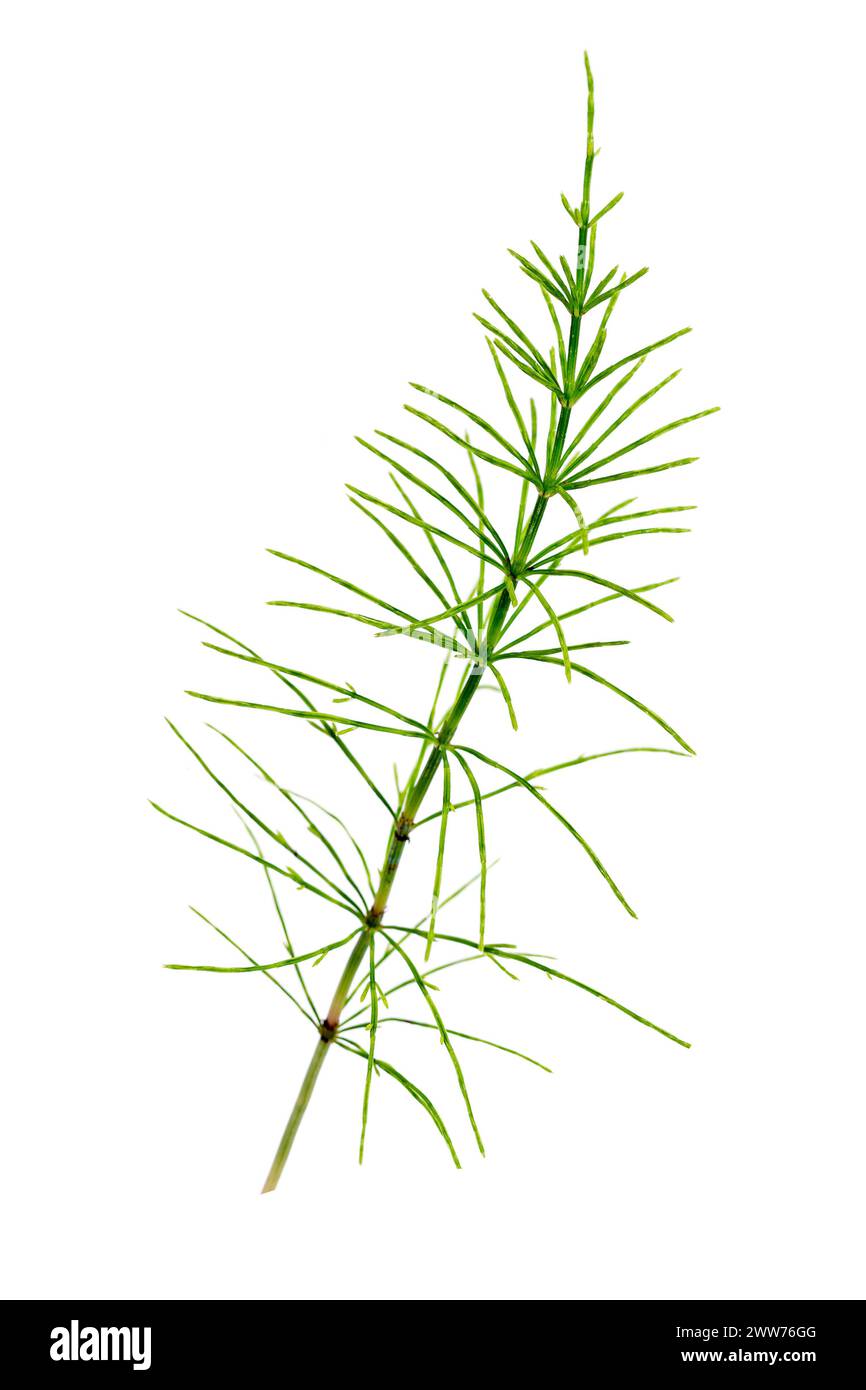 The field horsetail, Equisetum arvense, is a herbaceous perennial fern belonging to the Equisetaceae family. Stock Photohttps://www.alamy.com/image-license-details/?v=1https://www.alamy.com/the-field-horsetail-equisetum-arvense-is-a-herbaceous-perennial-fern-belonging-to-the-equisetaceae-family-image600677744.html
The field horsetail, Equisetum arvense, is a herbaceous perennial fern belonging to the Equisetaceae family. Stock Photohttps://www.alamy.com/image-license-details/?v=1https://www.alamy.com/the-field-horsetail-equisetum-arvense-is-a-herbaceous-perennial-fern-belonging-to-the-equisetaceae-family-image600677744.htmlRF2WW76GG–The field horsetail, Equisetum arvense, is a herbaceous perennial fern belonging to the Equisetaceae family.
 HERBAL MEDICINE Stock Photohttps://www.alamy.com/image-license-details/?v=1https://www.alamy.com/stock-photo-herbal-medicine-130787166.html
HERBAL MEDICINE Stock Photohttps://www.alamy.com/image-license-details/?v=1https://www.alamy.com/stock-photo-herbal-medicine-130787166.htmlRFHGNTA6–HERBAL MEDICINE
 Equisetum sp Equisetum sp. Stock Photohttps://www.alamy.com/image-license-details/?v=1https://www.alamy.com/equisetum-sp-equisetum-sp-image360476985.html
Equisetum sp Equisetum sp. Stock Photohttps://www.alamy.com/image-license-details/?v=1https://www.alamy.com/equisetum-sp-equisetum-sp-image360476985.htmlRM2BXD421–Equisetum sp Equisetum sp.
 HORSETAIL stem detail Equisetum sp. Seattle, Washington, USA Also called 'Scouring Rush' Stock Photohttps://www.alamy.com/image-license-details/?v=1https://www.alamy.com/horsetail-stem-detail-equisetum-sp-seattle-washington-usa-also-called-scouring-rush-image181639044.html
HORSETAIL stem detail Equisetum sp. Seattle, Washington, USA Also called 'Scouring Rush' Stock Photohttps://www.alamy.com/image-license-details/?v=1https://www.alamy.com/horsetail-stem-detail-equisetum-sp-seattle-washington-usa-also-called-scouring-rush-image181639044.htmlRMMFEACM–HORSETAIL stem detail Equisetum sp. Seattle, Washington, USA Also called 'Scouring Rush'
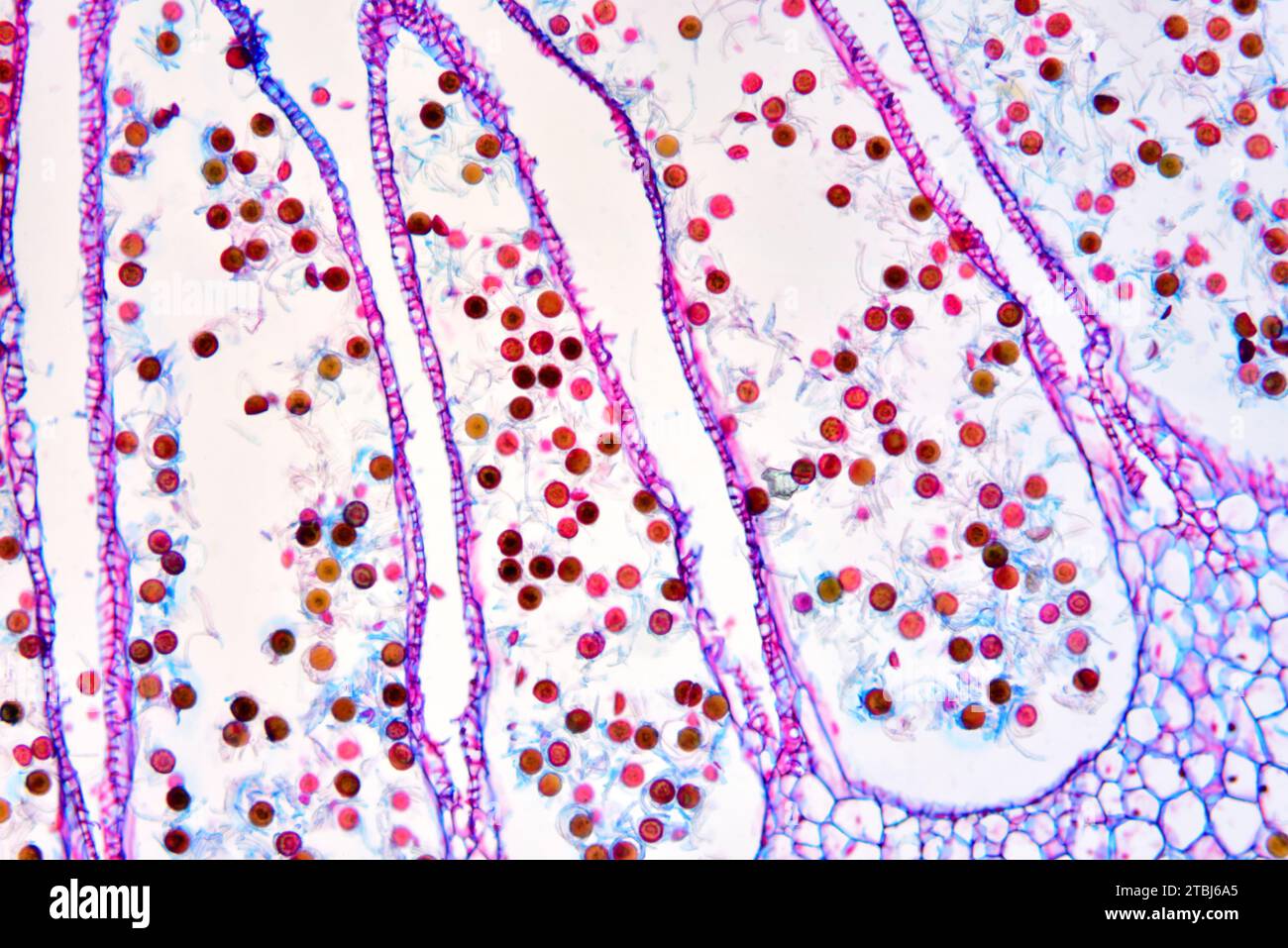 Strobilus of Equisetum sp. with spores. Optical microscope X100. Stock Photohttps://www.alamy.com/image-license-details/?v=1https://www.alamy.com/strobilus-of-equisetum-sp-with-spores-optical-microscope-x100-image575103485.html
Strobilus of Equisetum sp. with spores. Optical microscope X100. Stock Photohttps://www.alamy.com/image-license-details/?v=1https://www.alamy.com/strobilus-of-equisetum-sp-with-spores-optical-microscope-x100-image575103485.htmlRF2TBJ6A5–Strobilus of Equisetum sp. with spores. Optical microscope X100.
 The field horsetail, Equisetum arvense, is a herbaceous perennial fern belonging to the Equisetaceae family, a group of plants that proliferated several hundred million years ago. It belongs to the group of Pteridophytes. Field horsetail 016818 013 Stock Photohttps://www.alamy.com/image-license-details/?v=1https://www.alamy.com/the-field-horsetail-equisetum-arvense-is-a-herbaceous-perennial-fern-belonging-to-the-equisetaceae-family-a-group-of-plants-that-proliferated-several-hundred-million-years-ago-it-belongs-to-the-group-of-pteridophytes-field-horsetail-016818-013-image607946690.html
The field horsetail, Equisetum arvense, is a herbaceous perennial fern belonging to the Equisetaceae family, a group of plants that proliferated several hundred million years ago. It belongs to the group of Pteridophytes. Field horsetail 016818 013 Stock Photohttps://www.alamy.com/image-license-details/?v=1https://www.alamy.com/the-field-horsetail-equisetum-arvense-is-a-herbaceous-perennial-fern-belonging-to-the-equisetaceae-family-a-group-of-plants-that-proliferated-several-hundred-million-years-ago-it-belongs-to-the-group-of-pteridophytes-field-horsetail-016818-013-image607946690.htmlRM2X92A5P–The field horsetail, Equisetum arvense, is a herbaceous perennial fern belonging to the Equisetaceae family, a group of plants that proliferated several hundred million years ago. It belongs to the group of Pteridophytes. Field horsetail 016818 013
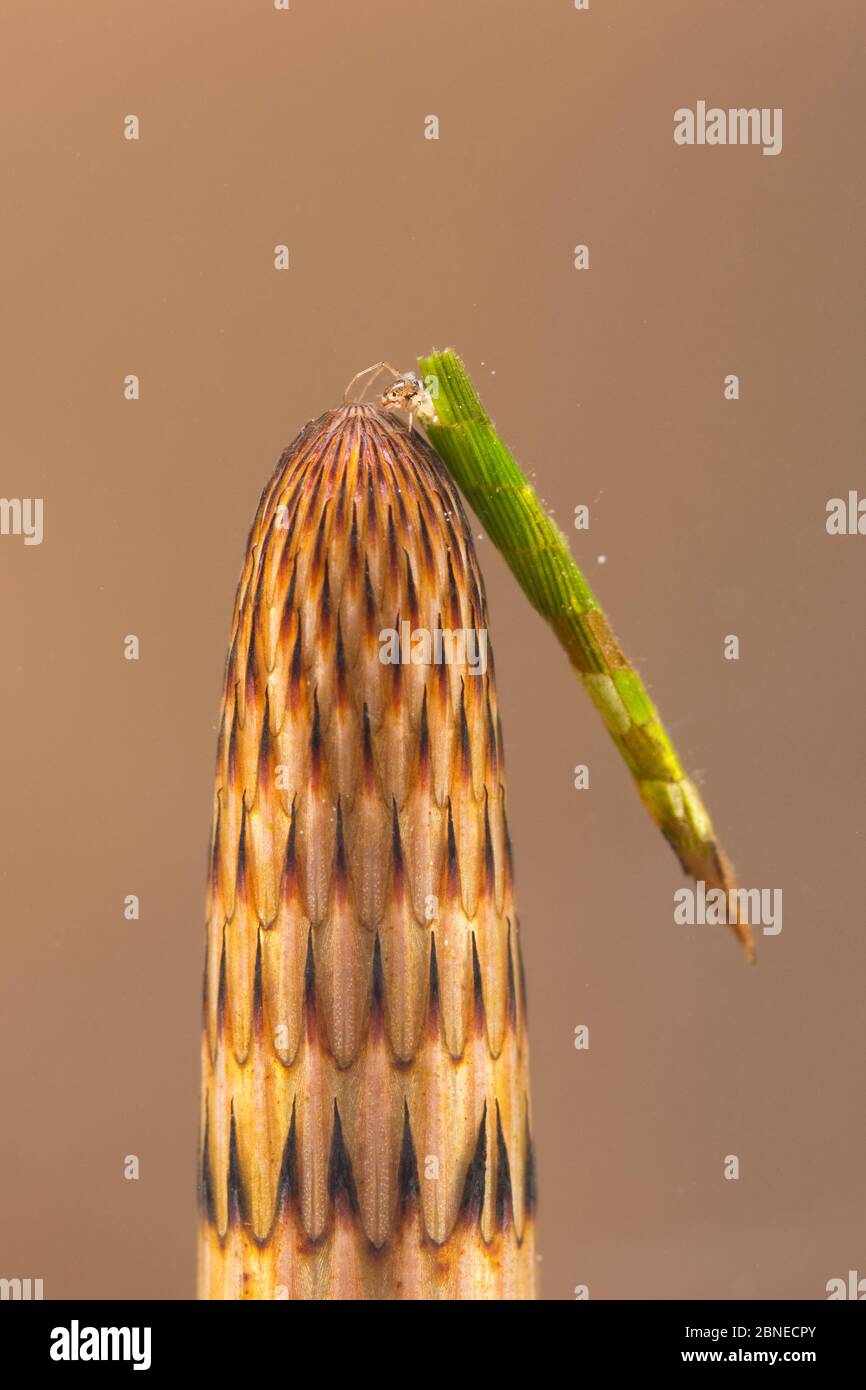 Case-building caddisfly larva (Triaenodes bicolor) on Horsetail (Equisetum sp), Europe, May. Controlled conditions. Stock Photohttps://www.alamy.com/image-license-details/?v=1https://www.alamy.com/case-building-caddisfly-larva-triaenodes-bicolor-on-horsetail-equisetum-sp-europe-may-controlled-conditions-image357432515.html
Case-building caddisfly larva (Triaenodes bicolor) on Horsetail (Equisetum sp), Europe, May. Controlled conditions. Stock Photohttps://www.alamy.com/image-license-details/?v=1https://www.alamy.com/case-building-caddisfly-larva-triaenodes-bicolor-on-horsetail-equisetum-sp-europe-may-controlled-conditions-image357432515.htmlRM2BNECPY–Case-building caddisfly larva (Triaenodes bicolor) on Horsetail (Equisetum sp), Europe, May. Controlled conditions.
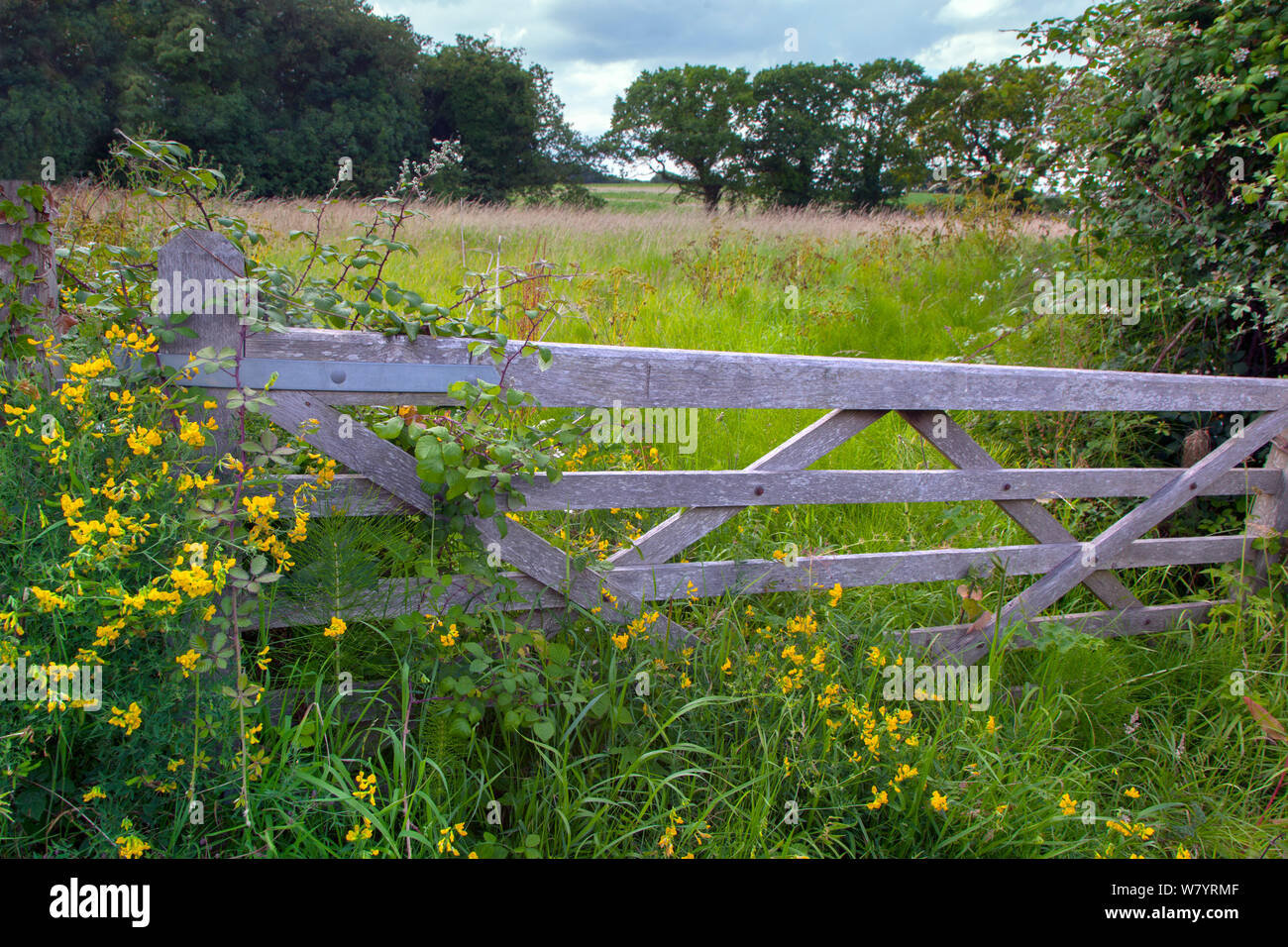 Five bar farm gate with Bird foot trefoil (Lotus corniculatus), Bramble (Rubus sp) and Horsetails (Equisetum) Norfolk, England, UK. July. Stock Photohttps://www.alamy.com/image-license-details/?v=1https://www.alamy.com/five-bar-farm-gate-with-bird-foot-trefoil-lotus-corniculatus-bramble-rubus-sp-and-horsetails-equisetum-norfolk-england-uk-july-image263069423.html
Five bar farm gate with Bird foot trefoil (Lotus corniculatus), Bramble (Rubus sp) and Horsetails (Equisetum) Norfolk, England, UK. July. Stock Photohttps://www.alamy.com/image-license-details/?v=1https://www.alamy.com/five-bar-farm-gate-with-bird-foot-trefoil-lotus-corniculatus-bramble-rubus-sp-and-horsetails-equisetum-norfolk-england-uk-july-image263069423.htmlRMW7YRMF–Five bar farm gate with Bird foot trefoil (Lotus corniculatus), Bramble (Rubus sp) and Horsetails (Equisetum) Norfolk, England, UK. July.
 . Fundamentals of botany. Botany. CALAMITES AND LYCOPODS 373 gametophytes may ultimately produce antheridia, and the male ones, archegonia. It is of interest to note that some of the fossil relatives of the modern horsetails were heterosporus. The structure of the spores is unusual in that they bear four ribbon-like appendages {elaters), formed from the outer wall, and closely coiled around the spores (Fig. 267).. Fig. 269.—Equisetum palustre. Portion of a male prothallus, bearing antherida; a, b, c, three antheridia in successive stages of development; a, empty; sp, escaping sperms and sperm- Stock Photohttps://www.alamy.com/image-license-details/?v=1https://www.alamy.com/fundamentals-of-botany-botany-calamites-and-lycopods-373-gametophytes-may-ultimately-produce-antheridia-and-the-male-ones-archegonia-it-is-of-interest-to-note-that-some-of-the-fossil-relatives-of-the-modern-horsetails-were-heterosporus-the-structure-of-the-spores-is-unusual-in-that-they-bear-four-ribbon-like-appendages-elaters-formed-from-the-outer-wall-and-closely-coiled-around-the-spores-fig-267-fig-269equisetum-palustre-portion-of-a-male-prothallus-bearing-antherida-a-b-c-three-antheridia-in-successive-stages-of-development-a-empty-sp-escaping-sperms-and-sperm-image232395950.html
. Fundamentals of botany. Botany. CALAMITES AND LYCOPODS 373 gametophytes may ultimately produce antheridia, and the male ones, archegonia. It is of interest to note that some of the fossil relatives of the modern horsetails were heterosporus. The structure of the spores is unusual in that they bear four ribbon-like appendages {elaters), formed from the outer wall, and closely coiled around the spores (Fig. 267).. Fig. 269.—Equisetum palustre. Portion of a male prothallus, bearing antherida; a, b, c, three antheridia in successive stages of development; a, empty; sp, escaping sperms and sperm- Stock Photohttps://www.alamy.com/image-license-details/?v=1https://www.alamy.com/fundamentals-of-botany-botany-calamites-and-lycopods-373-gametophytes-may-ultimately-produce-antheridia-and-the-male-ones-archegonia-it-is-of-interest-to-note-that-some-of-the-fossil-relatives-of-the-modern-horsetails-were-heterosporus-the-structure-of-the-spores-is-unusual-in-that-they-bear-four-ribbon-like-appendages-elaters-formed-from-the-outer-wall-and-closely-coiled-around-the-spores-fig-267-fig-269equisetum-palustre-portion-of-a-male-prothallus-bearing-antherida-a-b-c-three-antheridia-in-successive-stages-of-development-a-empty-sp-escaping-sperms-and-sperm-image232395950.htmlRMRE2FBA–. Fundamentals of botany. Botany. CALAMITES AND LYCOPODS 373 gametophytes may ultimately produce antheridia, and the male ones, archegonia. It is of interest to note that some of the fossil relatives of the modern horsetails were heterosporus. The structure of the spores is unusual in that they bear four ribbon-like appendages {elaters), formed from the outer wall, and closely coiled around the spores (Fig. 267).. Fig. 269.—Equisetum palustre. Portion of a male prothallus, bearing antherida; a, b, c, three antheridia in successive stages of development; a, empty; sp, escaping sperms and sperm-
 . Studies in fossil botany . Paleobotany. THE STEM OF CALAMITES 25 far as anatomy goes, is simply an Equisetum with secondary thickening. In order to carry the comparison further, we must settle one or two points, especially the course of the vascular bundles. In Equisetum itself their course is exceedingly simple: a single vascular bundle enters the stem from each leaf, and. Fig. 7.—Calamitcs, sp. Radial section of a decorticated stem, with fairly thick wood, showing the fistular pith, crossed by diaphragms at the nodes. X 9. From a photo- graph. Phil. Trans., W. and S. Will. Coll. 1937. pass Stock Photohttps://www.alamy.com/image-license-details/?v=1https://www.alamy.com/studies-in-fossil-botany-paleobotany-the-stem-of-calamites-25-far-as-anatomy-goes-is-simply-an-equisetum-with-secondary-thickening-in-order-to-carry-the-comparison-further-we-must-settle-one-or-two-points-especially-the-course-of-the-vascular-bundles-in-equisetum-itself-their-course-is-exceedingly-simple-a-single-vascular-bundle-enters-the-stem-from-each-leaf-and-fig-7calamitcs-sp-radial-section-of-a-decorticated-stem-with-fairly-thick-wood-showing-the-fistular-pith-crossed-by-diaphragms-at-the-nodes-x-9-from-a-photo-graph-phil-trans-w-and-s-will-coll-1937-pass-image216386626.html
. Studies in fossil botany . Paleobotany. THE STEM OF CALAMITES 25 far as anatomy goes, is simply an Equisetum with secondary thickening. In order to carry the comparison further, we must settle one or two points, especially the course of the vascular bundles. In Equisetum itself their course is exceedingly simple: a single vascular bundle enters the stem from each leaf, and. Fig. 7.—Calamitcs, sp. Radial section of a decorticated stem, with fairly thick wood, showing the fistular pith, crossed by diaphragms at the nodes. X 9. From a photo- graph. Phil. Trans., W. and S. Will. Coll. 1937. pass Stock Photohttps://www.alamy.com/image-license-details/?v=1https://www.alamy.com/studies-in-fossil-botany-paleobotany-the-stem-of-calamites-25-far-as-anatomy-goes-is-simply-an-equisetum-with-secondary-thickening-in-order-to-carry-the-comparison-further-we-must-settle-one-or-two-points-especially-the-course-of-the-vascular-bundles-in-equisetum-itself-their-course-is-exceedingly-simple-a-single-vascular-bundle-enters-the-stem-from-each-leaf-and-fig-7calamitcs-sp-radial-section-of-a-decorticated-stem-with-fairly-thick-wood-showing-the-fistular-pith-crossed-by-diaphragms-at-the-nodes-x-9-from-a-photo-graph-phil-trans-w-and-s-will-coll-1937-pass-image216386626.htmlRMPG179P–. Studies in fossil botany . Paleobotany. THE STEM OF CALAMITES 25 far as anatomy goes, is simply an Equisetum with secondary thickening. In order to carry the comparison further, we must settle one or two points, especially the course of the vascular bundles. In Equisetum itself their course is exceedingly simple: a single vascular bundle enters the stem from each leaf, and. Fig. 7.—Calamitcs, sp. Radial section of a decorticated stem, with fairly thick wood, showing the fistular pith, crossed by diaphragms at the nodes. X 9. From a photo- graph. Phil. Trans., W. and S. Will. Coll. 1937. pass
 Archive image from page 46 of Die Liasmulde von Markeldendorf bei. Die Liasmulde von Markeldendorf bei Einbeck . dieliasmuldevonm00emer Year: 1870 45 1. ? Equisetum Gümbeli Schenk sp. 1867. Calamites GiimbeH Schenk. Flora d. Grenzschichten. S. 10. t. 1. f. 8-10. 1869. Equisetum Gümbeli ScHiiiPKit. Traite de Pal. ve'g. S. '269. No. 28. Der Stengel gegliedert, erhaben gerippt. Die Rippen 1 Mm. breit, einfach. Die bedeutende Grösse unterscheidet diese Species von E. Gmnbeli, sonst stimmt sie sehr gut mit den Abbildungen bei Schenk. Mit dieser kommt eine ungerippte Form vor, deren Ober- fläche mi Stock Photohttps://www.alamy.com/image-license-details/?v=1https://www.alamy.com/archive-image-from-page-46-of-die-liasmulde-von-markeldendorf-bei-die-liasmulde-von-markeldendorf-bei-einbeck-dieliasmuldevonm00emer-year-1870-45-1-equisetum-gmbeli-schenk-sp-1867-calamites-giimbeh-schenk-flora-d-grenzschichten-s-10-t-1-f-8-10-1869-equisetum-gmbeli-schiiipkit-traite-de-pal-veg-s-269-no-28-der-stengel-gegliedert-erhaben-gerippt-die-rippen-1-mm-breit-einfach-die-bedeutende-grsse-unterscheidet-diese-species-von-e-gmnbeli-sonst-stimmt-sie-sehr-gut-mit-den-abbildungen-bei-schenk-mit-dieser-kommt-eine-ungerippte-form-vor-deren-ober-flche-mi-image259031546.html
Archive image from page 46 of Die Liasmulde von Markeldendorf bei. Die Liasmulde von Markeldendorf bei Einbeck . dieliasmuldevonm00emer Year: 1870 45 1. ? Equisetum Gümbeli Schenk sp. 1867. Calamites GiimbeH Schenk. Flora d. Grenzschichten. S. 10. t. 1. f. 8-10. 1869. Equisetum Gümbeli ScHiiiPKit. Traite de Pal. ve'g. S. '269. No. 28. Der Stengel gegliedert, erhaben gerippt. Die Rippen 1 Mm. breit, einfach. Die bedeutende Grösse unterscheidet diese Species von E. Gmnbeli, sonst stimmt sie sehr gut mit den Abbildungen bei Schenk. Mit dieser kommt eine ungerippte Form vor, deren Ober- fläche mi Stock Photohttps://www.alamy.com/image-license-details/?v=1https://www.alamy.com/archive-image-from-page-46-of-die-liasmulde-von-markeldendorf-bei-die-liasmulde-von-markeldendorf-bei-einbeck-dieliasmuldevonm00emer-year-1870-45-1-equisetum-gmbeli-schenk-sp-1867-calamites-giimbeh-schenk-flora-d-grenzschichten-s-10-t-1-f-8-10-1869-equisetum-gmbeli-schiiipkit-traite-de-pal-veg-s-269-no-28-der-stengel-gegliedert-erhaben-gerippt-die-rippen-1-mm-breit-einfach-die-bedeutende-grsse-unterscheidet-diese-species-von-e-gmnbeli-sonst-stimmt-sie-sehr-gut-mit-den-abbildungen-bei-schenk-mit-dieser-kommt-eine-ungerippte-form-vor-deren-ober-flche-mi-image259031546.htmlRMW1BWAJ–Archive image from page 46 of Die Liasmulde von Markeldendorf bei. Die Liasmulde von Markeldendorf bei Einbeck . dieliasmuldevonm00emer Year: 1870 45 1. ? Equisetum Gümbeli Schenk sp. 1867. Calamites GiimbeH Schenk. Flora d. Grenzschichten. S. 10. t. 1. f. 8-10. 1869. Equisetum Gümbeli ScHiiiPKit. Traite de Pal. ve'g. S. '269. No. 28. Der Stengel gegliedert, erhaben gerippt. Die Rippen 1 Mm. breit, einfach. Die bedeutende Grösse unterscheidet diese Species von E. Gmnbeli, sonst stimmt sie sehr gut mit den Abbildungen bei Schenk. Mit dieser kommt eine ungerippte Form vor, deren Ober- fläche mi
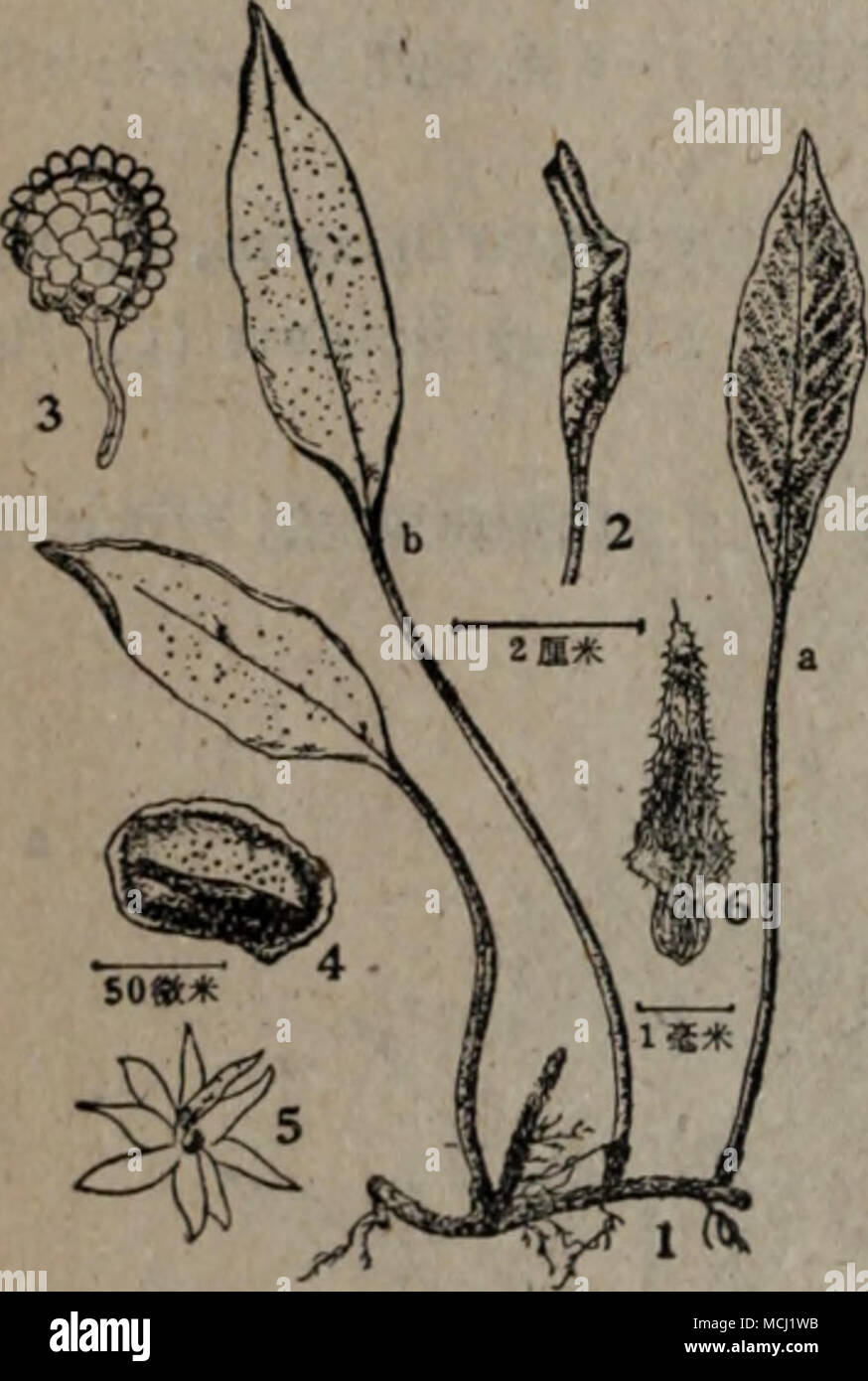 . å6ç³é Pyrrosia petiolosa Ching 1.å¤å½¢ï¼2.åæçèçä¸é¨åï¼3.æ± å-»; 4.æ±å-ï¼5.èçä¸ç足çæ¯ï¼ 6.æèä¸ç«!^æ¯ã åè(æ¬è綱ç®ï¼ (é·å å±±ï¼å7 Equisetum arvense L. Sp. PI.(1753)1061 ï¼ Maxim. Prim. Fl. Amur. (1858) 333; Kom. Fl. Mansh. I (1901) 152; Kom. et Alis. Key PI. Far East. Reg. USSR I (1931) 105, tab. 21, fig. 2, 7,10; Iljin in Kom. Fl. URSS I (1934) 103, tab. V. fig. 2aâb; Schaffner et Li in Bull. Fan Mem. Inst. Biol. (Bot.)(1939) 132; Kitag. Lineam. Fl. Mansh. (1939) 40. å¤å¹´çèæ¬,æèé·.横走ï¼è¡åçæ ¹,é»è²æåè¤è²,mm.mr,å ·æé»è²çèãçé¤èèå-¢å-è¥å®¤ ä¸åï¼æ±å-åèæ¥å-£ç±æ ¹èçé·ï¼immm,æ·¡è¤è²ï¼èèµ,ä¸åæ Stock Photohttps://www.alamy.com/image-license-details/?v=1https://www.alamy.com/6-pyrrosia-petiolosa-ching-123-4-5-6!-7-equisetum-arvense-l-sp-pi17531061-maxim-prim-fl-amur-1858-333-kom-fl-mansh-i-1901-152-kom-et-alis-key-pi-far-east-reg-ussr-i-1931-105-tab-21-fig-2-710-iljin-in-kom-fl-urss-i-1934-103-tab-v-fig-2ab-schaffner-et-li-in-bull-fan-mem-inst-biol-bot1939-132-kitag-lineam-fl-mansh-1939-40-mmmr-immm-image179876183.html
. å6ç³é Pyrrosia petiolosa Ching 1.å¤å½¢ï¼2.åæçèçä¸é¨åï¼3.æ± å-»; 4.æ±å-ï¼5.èçä¸ç足çæ¯ï¼ 6.æèä¸ç«!^æ¯ã åè(æ¬è綱ç®ï¼ (é·å å±±ï¼å7 Equisetum arvense L. Sp. PI.(1753)1061 ï¼ Maxim. Prim. Fl. Amur. (1858) 333; Kom. Fl. Mansh. I (1901) 152; Kom. et Alis. Key PI. Far East. Reg. USSR I (1931) 105, tab. 21, fig. 2, 7,10; Iljin in Kom. Fl. URSS I (1934) 103, tab. V. fig. 2aâb; Schaffner et Li in Bull. Fan Mem. Inst. Biol. (Bot.)(1939) 132; Kitag. Lineam. Fl. Mansh. (1939) 40. å¤å¹´çèæ¬,æèé·.横走ï¼è¡åçæ ¹,é»è²æåè¤è²,mm.mr,å ·æé»è²çèãçé¤èèå-¢å-è¥å®¤ ä¸åï¼æ±å-åèæ¥å-£ç±æ ¹èçé·ï¼immm,æ·¡è¤è²ï¼èèµ,ä¸åæ Stock Photohttps://www.alamy.com/image-license-details/?v=1https://www.alamy.com/6-pyrrosia-petiolosa-ching-123-4-5-6!-7-equisetum-arvense-l-sp-pi17531061-maxim-prim-fl-amur-1858-333-kom-fl-mansh-i-1901-152-kom-et-alis-key-pi-far-east-reg-ussr-i-1931-105-tab-21-fig-2-710-iljin-in-kom-fl-urss-i-1934-103-tab-v-fig-2ab-schaffner-et-li-in-bull-fan-mem-inst-biol-bot1939-132-kitag-lineam-fl-mansh-1939-40-mmmr-immm-image179876183.htmlRMMCJ1WB–. å6ç³é Pyrrosia petiolosa Ching 1.å¤å½¢ï¼2.åæçèçä¸é¨åï¼3.æ± å-»; 4.æ±å-ï¼5.èçä¸ç足çæ¯ï¼ 6.æèä¸ç«!^æ¯ã åè(æ¬è綱ç®ï¼ (é·å å±±ï¼å7 Equisetum arvense L. Sp. PI.(1753)1061 ï¼ Maxim. Prim. Fl. Amur. (1858) 333; Kom. Fl. Mansh. I (1901) 152; Kom. et Alis. Key PI. Far East. Reg. USSR I (1931) 105, tab. 21, fig. 2, 7,10; Iljin in Kom. Fl. URSS I (1934) 103, tab. V. fig. 2aâb; Schaffner et Li in Bull. Fan Mem. Inst. Biol. (Bot.)(1939) 132; Kitag. Lineam. Fl. Mansh. (1939) 40. å¤å¹´çèæ¬,æèé·.横走ï¼è¡åçæ ¹,é»è²æåè¤è²,mm.mr,å ·æé»è²çèãçé¤èèå-¢å-è¥å®¤ ä¸åï¼æ±å-åèæ¥å-£ç±æ ¹èçé·ï¼immm,æ·¡è¤è²ï¼èèµ,ä¸åæ
 HERBAL MEDICINE Stock Photohttps://www.alamy.com/image-license-details/?v=1https://www.alamy.com/stock-photo-herbal-medicine-130787167.html
HERBAL MEDICINE Stock Photohttps://www.alamy.com/image-license-details/?v=1https://www.alamy.com/stock-photo-herbal-medicine-130787167.htmlRFHGNTA7–HERBAL MEDICINE
 Equisetum sp Equisetum sp. Stock Photohttps://www.alamy.com/image-license-details/?v=1https://www.alamy.com/equisetum-sp-equisetum-sp-image360476979.html
Equisetum sp Equisetum sp. Stock Photohttps://www.alamy.com/image-license-details/?v=1https://www.alamy.com/equisetum-sp-equisetum-sp-image360476979.htmlRM2BXD41R–Equisetum sp Equisetum sp.
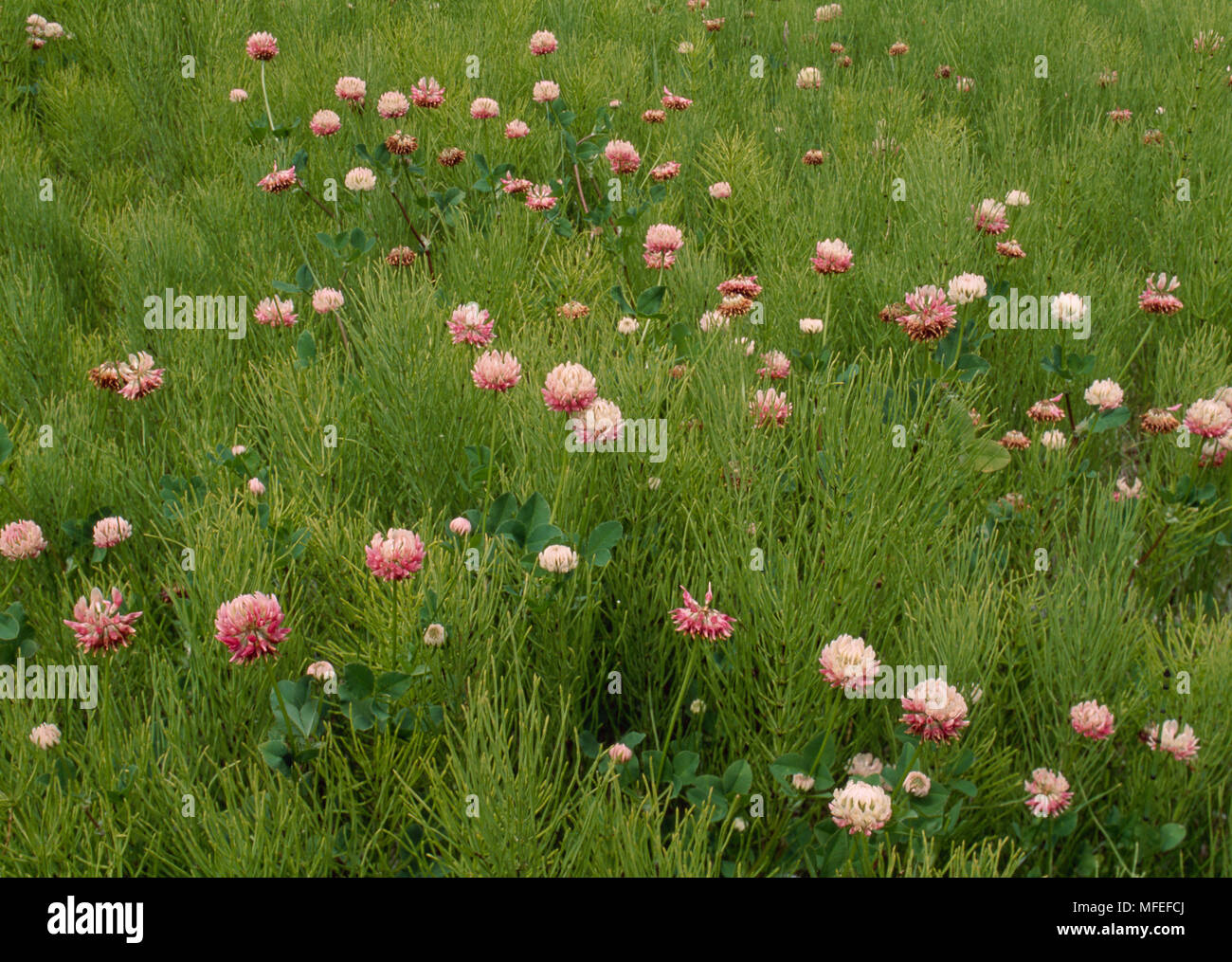 CLOVER Trifolium sp. growing admist Horsetail Equisetum sp. Alberta, Canada. Stock Photohttps://www.alamy.com/image-license-details/?v=1https://www.alamy.com/clover-trifolium-sp-growing-admist-horsetail-equisetum-sp-alberta-canada-image181642962.html
CLOVER Trifolium sp. growing admist Horsetail Equisetum sp. Alberta, Canada. Stock Photohttps://www.alamy.com/image-license-details/?v=1https://www.alamy.com/clover-trifolium-sp-growing-admist-horsetail-equisetum-sp-alberta-canada-image181642962.htmlRMMFEFCJ–CLOVER Trifolium sp. growing admist Horsetail Equisetum sp. Alberta, Canada.
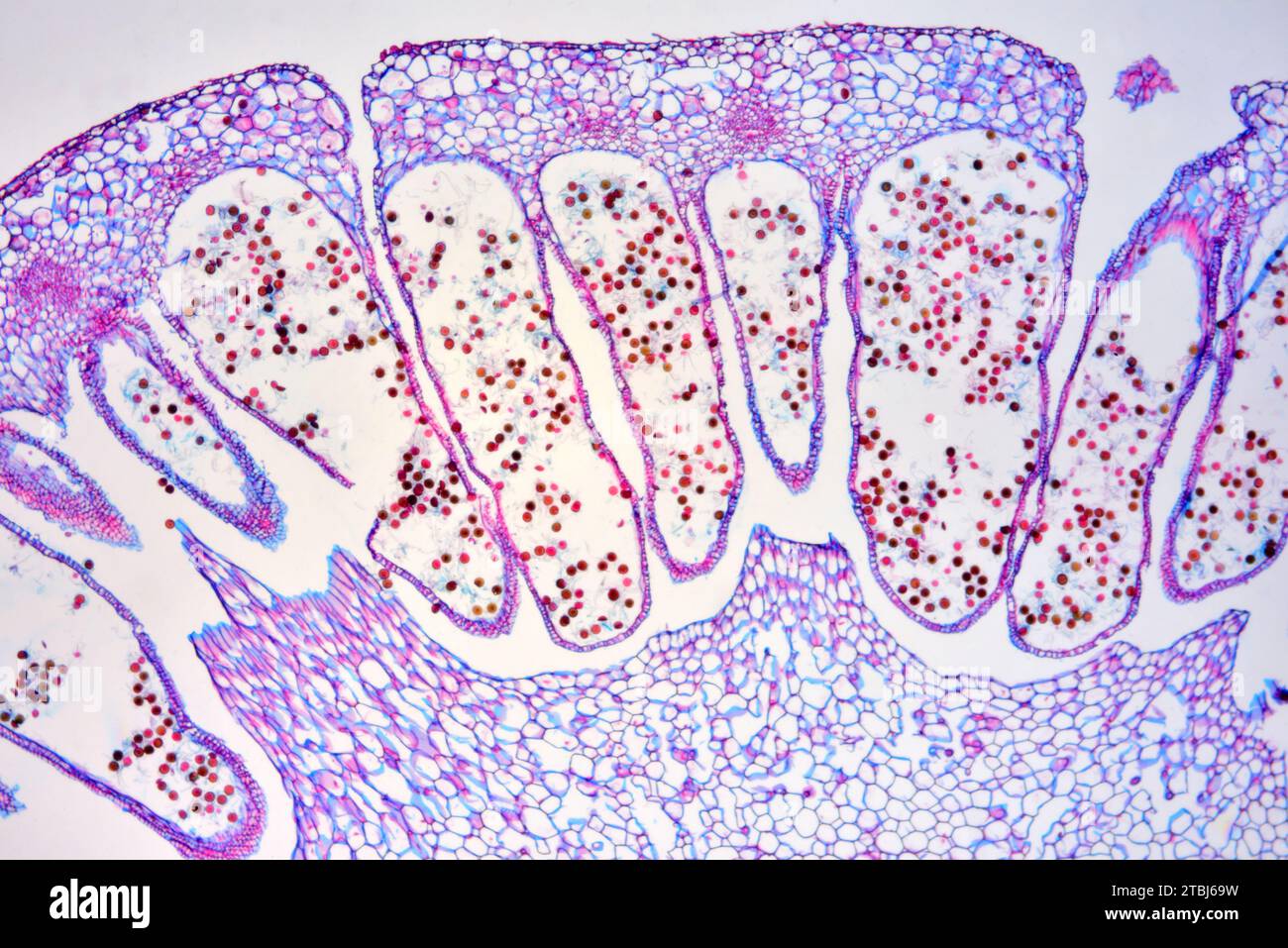 Strobilus of Equisetum sp. with spores. Optical microscope X40. Stock Photohttps://www.alamy.com/image-license-details/?v=1https://www.alamy.com/strobilus-of-equisetum-sp-with-spores-optical-microscope-x40-image575103477.html
Strobilus of Equisetum sp. with spores. Optical microscope X40. Stock Photohttps://www.alamy.com/image-license-details/?v=1https://www.alamy.com/strobilus-of-equisetum-sp-with-spores-optical-microscope-x40-image575103477.htmlRF2TBJ69W–Strobilus of Equisetum sp. with spores. Optical microscope X40.
 . Studies in fossil botany . Paleobotany. FRUCTIFICATIONS OF CALAMARIEAE 51 have a type which is essentially the same as that of Equisetum, e.g. Archaeocalamites, for here the sporangio- phores are present alone, without any bracts at all, or only at long intervals (Fig. 24, B). In other cases cones have been found which even more exactly resemble those of recent Equisetaceae. 2. Calamostachys.—I will now shortly describe the. 8m Fig. 18.—Calamostachys Binneyana. Transverse section of cone, passing through a whorl of six peltate sporangiophores, sp. sm. sporangia attached to the peltate lamina Stock Photohttps://www.alamy.com/image-license-details/?v=1https://www.alamy.com/studies-in-fossil-botany-paleobotany-fructifications-of-calamarieae-51-have-a-type-which-is-essentially-the-same-as-that-of-equisetum-eg-archaeocalamites-for-here-the-sporangio-phores-are-present-alone-without-any-bracts-at-all-or-only-at-long-intervals-fig-24-b-in-other-cases-cones-have-been-found-which-even-more-exactly-resemble-those-of-recent-equisetaceae-2-calamostachysi-will-now-shortly-describe-the-8m-fig-18calamostachys-binneyana-transverse-section-of-cone-passing-through-a-whorl-of-six-peltate-sporangiophores-sp-sm-sporangia-attached-to-the-peltate-lamina-image231994971.html
. Studies in fossil botany . Paleobotany. FRUCTIFICATIONS OF CALAMARIEAE 51 have a type which is essentially the same as that of Equisetum, e.g. Archaeocalamites, for here the sporangio- phores are present alone, without any bracts at all, or only at long intervals (Fig. 24, B). In other cases cones have been found which even more exactly resemble those of recent Equisetaceae. 2. Calamostachys.—I will now shortly describe the. 8m Fig. 18.—Calamostachys Binneyana. Transverse section of cone, passing through a whorl of six peltate sporangiophores, sp. sm. sporangia attached to the peltate lamina Stock Photohttps://www.alamy.com/image-license-details/?v=1https://www.alamy.com/studies-in-fossil-botany-paleobotany-fructifications-of-calamarieae-51-have-a-type-which-is-essentially-the-same-as-that-of-equisetum-eg-archaeocalamites-for-here-the-sporangio-phores-are-present-alone-without-any-bracts-at-all-or-only-at-long-intervals-fig-24-b-in-other-cases-cones-have-been-found-which-even-more-exactly-resemble-those-of-recent-equisetaceae-2-calamostachysi-will-now-shortly-describe-the-8m-fig-18calamostachys-binneyana-transverse-section-of-cone-passing-through-a-whorl-of-six-peltate-sporangiophores-sp-sm-sporangia-attached-to-the-peltate-lamina-image231994971.htmlRMRDC7XK–. Studies in fossil botany . Paleobotany. FRUCTIFICATIONS OF CALAMARIEAE 51 have a type which is essentially the same as that of Equisetum, e.g. Archaeocalamites, for here the sporangio- phores are present alone, without any bracts at all, or only at long intervals (Fig. 24, B). In other cases cones have been found which even more exactly resemble those of recent Equisetaceae. 2. Calamostachys.—I will now shortly describe the. 8m Fig. 18.—Calamostachys Binneyana. Transverse section of cone, passing through a whorl of six peltate sporangiophores, sp. sm. sporangia attached to the peltate lamina
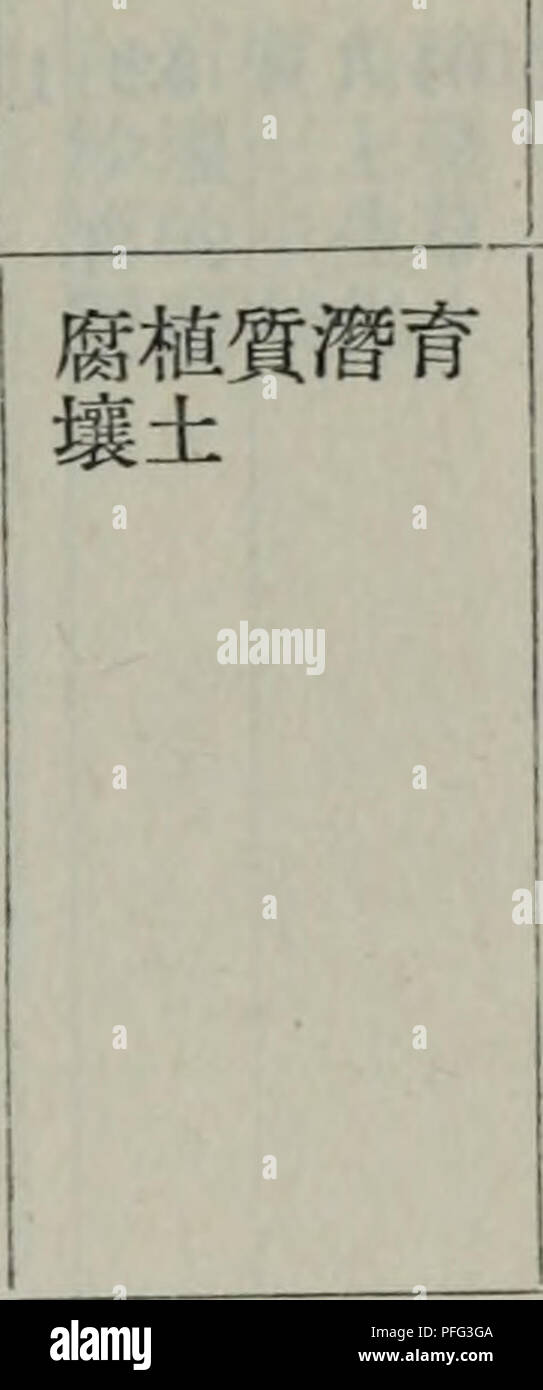 . da xing an ling sen lin zi yuan diao cha bao gao. botany. ????? ????? ????? ???? ???^? ????? ????? ?? ??5?. ????? ????? ????? ??? ?? 2° ????? ????? ????? ???? ???? ????? ?? Adenophora sublata spgr Vicia venosa var baicalensis copr j Anemone sibirica spgr Carex spgr Fragaria orientalis spgr Lathjrrus humilis sp Iris ensata var chinensis cop' gr Convallaria majalis var manshurica Sanquisorba officinalis Calamagrostis Rubus saxatilis Pulsatilla patens salix 15700 Ribes ' 6800 Rosa acicularis HOO Betuia fruticosa 4600 Spiraea sericea Lathyrus humilis Vicia Rubus Equisetum silvaticum Carex Fragar Stock Photohttps://www.alamy.com/image-license-details/?v=1https://www.alamy.com/da-xing-an-ling-sen-lin-zi-yuan-diao-cha-bao-gao-botany-5-2-adenophora-sublata-spgr-vicia-venosa-var-baicalensis-copr-j-anemone-sibirica-spgr-carex-spgr-fragaria-orientalis-spgr-lathjrrus-humilis-sp-iris-ensata-var-chinensis-cop-gr-convallaria-majalis-var-manshurica-sanquisorba-officinalis-calamagrostis-rubus-saxatilis-pulsatilla-patens-salix-15700-ribes-6800-rosa-acicularis-hoo-betuia-fruticosa-4600-spiraea-sericea-lathyrus-humilis-vicia-rubus-equisetum-silvaticum-carex-fragar-image216098298.html
. da xing an ling sen lin zi yuan diao cha bao gao. botany. ????? ????? ????? ???? ???^? ????? ????? ?? ??5?. ????? ????? ????? ??? ?? 2° ????? ????? ????? ???? ???? ????? ?? Adenophora sublata spgr Vicia venosa var baicalensis copr j Anemone sibirica spgr Carex spgr Fragaria orientalis spgr Lathjrrus humilis sp Iris ensata var chinensis cop' gr Convallaria majalis var manshurica Sanquisorba officinalis Calamagrostis Rubus saxatilis Pulsatilla patens salix 15700 Ribes ' 6800 Rosa acicularis HOO Betuia fruticosa 4600 Spiraea sericea Lathyrus humilis Vicia Rubus Equisetum silvaticum Carex Fragar Stock Photohttps://www.alamy.com/image-license-details/?v=1https://www.alamy.com/da-xing-an-ling-sen-lin-zi-yuan-diao-cha-bao-gao-botany-5-2-adenophora-sublata-spgr-vicia-venosa-var-baicalensis-copr-j-anemone-sibirica-spgr-carex-spgr-fragaria-orientalis-spgr-lathjrrus-humilis-sp-iris-ensata-var-chinensis-cop-gr-convallaria-majalis-var-manshurica-sanquisorba-officinalis-calamagrostis-rubus-saxatilis-pulsatilla-patens-salix-15700-ribes-6800-rosa-acicularis-hoo-betuia-fruticosa-4600-spiraea-sericea-lathyrus-humilis-vicia-rubus-equisetum-silvaticum-carex-fragar-image216098298.htmlRMPFG3GA–. da xing an ling sen lin zi yuan diao cha bao gao. botany. ????? ????? ????? ???? ???^? ????? ????? ?? ??5?. ????? ????? ????? ??? ?? 2° ????? ????? ????? ???? ???? ????? ?? Adenophora sublata spgr Vicia venosa var baicalensis copr j Anemone sibirica spgr Carex spgr Fragaria orientalis spgr Lathjrrus humilis sp Iris ensata var chinensis cop' gr Convallaria majalis var manshurica Sanquisorba officinalis Calamagrostis Rubus saxatilis Pulsatilla patens salix 15700 Ribes ' 6800 Rosa acicularis HOO Betuia fruticosa 4600 Spiraea sericea Lathyrus humilis Vicia Rubus Equisetum silvaticum Carex Fragar
![dong bei yao yong zhi dong bei yao yong zhi wu zhi dongbeiyaoyongzh00liuz Year: 1950 è±³7éè Equisetum arvonse L. 1. æ¤&çä¸é¨(示ftå-åffiåç1?ã 0ï¼ 2. æ±å-Kæ¤ï¼3.(a)æ±å-åå¼µéçå½çµ²ï¼ (b)»絲港ç¹å¨æ±å- hã ç»8æ¨è³ Equisetnm hyemale L. ]â¢è¢«ççä¸é¨ï¼2.^çä¸é¨ï¼ç¤ºæ±å-èçï¼; 3.è^é¢æ¾å¤§(示11ä¸çå°çªèµ·ï¼ï¼ 4.èç«|åã æ¨è³(åç¥æ¬èï¼glj稱:å§è(æ±åï¼,ç¯éª¨è(æ±åï¼ï¼æ¨[1«è(é稱ï¼å8 Equisetum hyemale L. Sp. PI. (1753) 1062; Kom. Fl. Mansh. I (1901) 156ï¼ Kom. et Alis. Key. PI. Far East. Reg. USSR I (1931)100, tab. 21, fig. 4; Iljin in Kom. Fl. URSS I (1934) 110, tab. V, fig. 8aâb; Kitag. Lineam. Fl. Mans Stock Photo dong bei yao yong zhi dong bei yao yong zhi wu zhi dongbeiyaoyongzh00liuz Year: 1950 è±³7éè Equisetum arvonse L. 1. æ¤&çä¸é¨(示ftå-åffiåç1?ã 0ï¼ 2. æ±å-Kæ¤ï¼3.(a)æ±å-åå¼µéçå½çµ²ï¼ (b)»絲港ç¹å¨æ±å- hã ç»8æ¨è³ Equisetnm hyemale L. ]â¢è¢«ççä¸é¨ï¼2.^çä¸é¨ï¼ç¤ºæ±å-èçï¼; 3.è^é¢æ¾å¤§(示11ä¸çå°çªèµ·ï¼ï¼ 4.èç«|åã æ¨è³(åç¥æ¬èï¼glj稱:å§è(æ±åï¼,ç¯éª¨è(æ±åï¼ï¼æ¨[1«è(é稱ï¼å8 Equisetum hyemale L. Sp. PI. (1753) 1062; Kom. Fl. Mansh. I (1901) 156ï¼ Kom. et Alis. Key. PI. Far East. Reg. USSR I (1931)100, tab. 21, fig. 4; Iljin in Kom. Fl. URSS I (1934) 110, tab. V, fig. 8aâb; Kitag. Lineam. Fl. Mans Stock Photo](https://c8.alamy.com/comp/T0NKA3/dong-bei-yao-yong-zhi-dong-bei-yao-yong-zhi-wu-zhi-dongbeiyaoyongzh00liuz-year-1950-7-equisetum-arvonse-l-1-ft-ffi1-0-2-k3a-b-h-8-equisetnm-hyemale-l-2-311-4-glj-18-equisetum-hyemale-l-sp-pi-1753-1062-kom-fl-mansh-i-1901-156-kom-et-alis-key-pi-far-east-reg-ussr-i-1931100-tab-21-fig-4-iljin-in-kom-fl-urss-i-1934-110-tab-v-fig-8ab-kitag-lineam-fl-mans-T0NKA3.jpg) dong bei yao yong zhi dong bei yao yong zhi wu zhi dongbeiyaoyongzh00liuz Year: 1950 è±³7éè Equisetum arvonse L. 1. æ¤&çä¸é¨(示ftå-åffiåç1?ã 0ï¼ 2. æ±å-Kæ¤ï¼3.(a)æ±å-åå¼µéçå½çµ²ï¼ (b)»絲港ç¹å¨æ±å- hã ç»8æ¨è³ Equisetnm hyemale L. ]â¢è¢«ççä¸é¨ï¼2.^çä¸é¨ï¼ç¤ºæ±å-èçï¼; 3.è^é¢æ¾å¤§(示11ä¸çå°çªèµ·ï¼ï¼ 4.èç«|åã æ¨è³(åç¥æ¬èï¼glj稱:å§è(æ±åï¼,ç¯éª¨è(æ±åï¼ï¼æ¨[1«è(é稱ï¼å8 Equisetum hyemale L. Sp. PI. (1753) 1062; Kom. Fl. Mansh. I (1901) 156ï¼ Kom. et Alis. Key. PI. Far East. Reg. USSR I (1931)100, tab. 21, fig. 4; Iljin in Kom. Fl. URSS I (1934) 110, tab. V, fig. 8aâb; Kitag. Lineam. Fl. Mans Stock Photohttps://www.alamy.com/image-license-details/?v=1https://www.alamy.com/dong-bei-yao-yong-zhi-dong-bei-yao-yong-zhi-wu-zhi-dongbeiyaoyongzh00liuz-year-1950-7-equisetum-arvonse-l-1-ft-ffi1-0-2-k3a-b-h-8-equisetnm-hyemale-l-2-311-4-glj-18-equisetum-hyemale-l-sp-pi-1753-1062-kom-fl-mansh-i-1901-156-kom-et-alis-key-pi-far-east-reg-ussr-i-1931100-tab-21-fig-4-iljin-in-kom-fl-urss-i-1934-110-tab-v-fig-8ab-kitag-lineam-fl-mans-image241421323.html
dong bei yao yong zhi dong bei yao yong zhi wu zhi dongbeiyaoyongzh00liuz Year: 1950 è±³7éè Equisetum arvonse L. 1. æ¤&çä¸é¨(示ftå-åffiåç1?ã 0ï¼ 2. æ±å-Kæ¤ï¼3.(a)æ±å-åå¼µéçå½çµ²ï¼ (b)»絲港ç¹å¨æ±å- hã ç»8æ¨è³ Equisetnm hyemale L. ]â¢è¢«ççä¸é¨ï¼2.^çä¸é¨ï¼ç¤ºæ±å-èçï¼; 3.è^é¢æ¾å¤§(示11ä¸çå°çªèµ·ï¼ï¼ 4.èç«|åã æ¨è³(åç¥æ¬èï¼glj稱:å§è(æ±åï¼,ç¯éª¨è(æ±åï¼ï¼æ¨[1«è(é稱ï¼å8 Equisetum hyemale L. Sp. PI. (1753) 1062; Kom. Fl. Mansh. I (1901) 156ï¼ Kom. et Alis. Key. PI. Far East. Reg. USSR I (1931)100, tab. 21, fig. 4; Iljin in Kom. Fl. URSS I (1934) 110, tab. V, fig. 8aâb; Kitag. Lineam. Fl. Mans Stock Photohttps://www.alamy.com/image-license-details/?v=1https://www.alamy.com/dong-bei-yao-yong-zhi-dong-bei-yao-yong-zhi-wu-zhi-dongbeiyaoyongzh00liuz-year-1950-7-equisetum-arvonse-l-1-ft-ffi1-0-2-k3a-b-h-8-equisetnm-hyemale-l-2-311-4-glj-18-equisetum-hyemale-l-sp-pi-1753-1062-kom-fl-mansh-i-1901-156-kom-et-alis-key-pi-far-east-reg-ussr-i-1931100-tab-21-fig-4-iljin-in-kom-fl-urss-i-1934-110-tab-v-fig-8ab-kitag-lineam-fl-mans-image241421323.htmlRMT0NKA3–dong bei yao yong zhi dong bei yao yong zhi wu zhi dongbeiyaoyongzh00liuz Year: 1950 è±³7éè Equisetum arvonse L. 1. æ¤&çä¸é¨(示ftå-åffiåç1?ã 0ï¼ 2. æ±å-Kæ¤ï¼3.(a)æ±å-åå¼µéçå½çµ²ï¼ (b)»絲港ç¹å¨æ±å- hã ç»8æ¨è³ Equisetnm hyemale L. ]â¢è¢«ççä¸é¨ï¼2.^çä¸é¨ï¼ç¤ºæ±å-èçï¼; 3.è^é¢æ¾å¤§(示11ä¸çå°çªèµ·ï¼ï¼ 4.èç«|åã æ¨è³(åç¥æ¬èï¼glj稱:å§è(æ±åï¼,ç¯éª¨è(æ±åï¼ï¼æ¨[1«è(é稱ï¼å8 Equisetum hyemale L. Sp. PI. (1753) 1062; Kom. Fl. Mansh. I (1901) 156ï¼ Kom. et Alis. Key. PI. Far East. Reg. USSR I (1931)100, tab. 21, fig. 4; Iljin in Kom. Fl. URSS I (1934) 110, tab. V, fig. 8aâb; Kitag. Lineam. Fl. Mans
 HERBAL MEDICINE Stock Photohttps://www.alamy.com/image-license-details/?v=1https://www.alamy.com/stock-photo-herbal-medicine-130787168.html
HERBAL MEDICINE Stock Photohttps://www.alamy.com/image-license-details/?v=1https://www.alamy.com/stock-photo-herbal-medicine-130787168.htmlRFHGNTA8–HERBAL MEDICINE
 Equisetum sp Equisetum sp. Stock Photohttps://www.alamy.com/image-license-details/?v=1https://www.alamy.com/equisetum-sp-equisetum-sp-image360496147.html
Equisetum sp Equisetum sp. Stock Photohttps://www.alamy.com/image-license-details/?v=1https://www.alamy.com/equisetum-sp-equisetum-sp-image360496147.htmlRM2BXE0EB–Equisetum sp Equisetum sp.
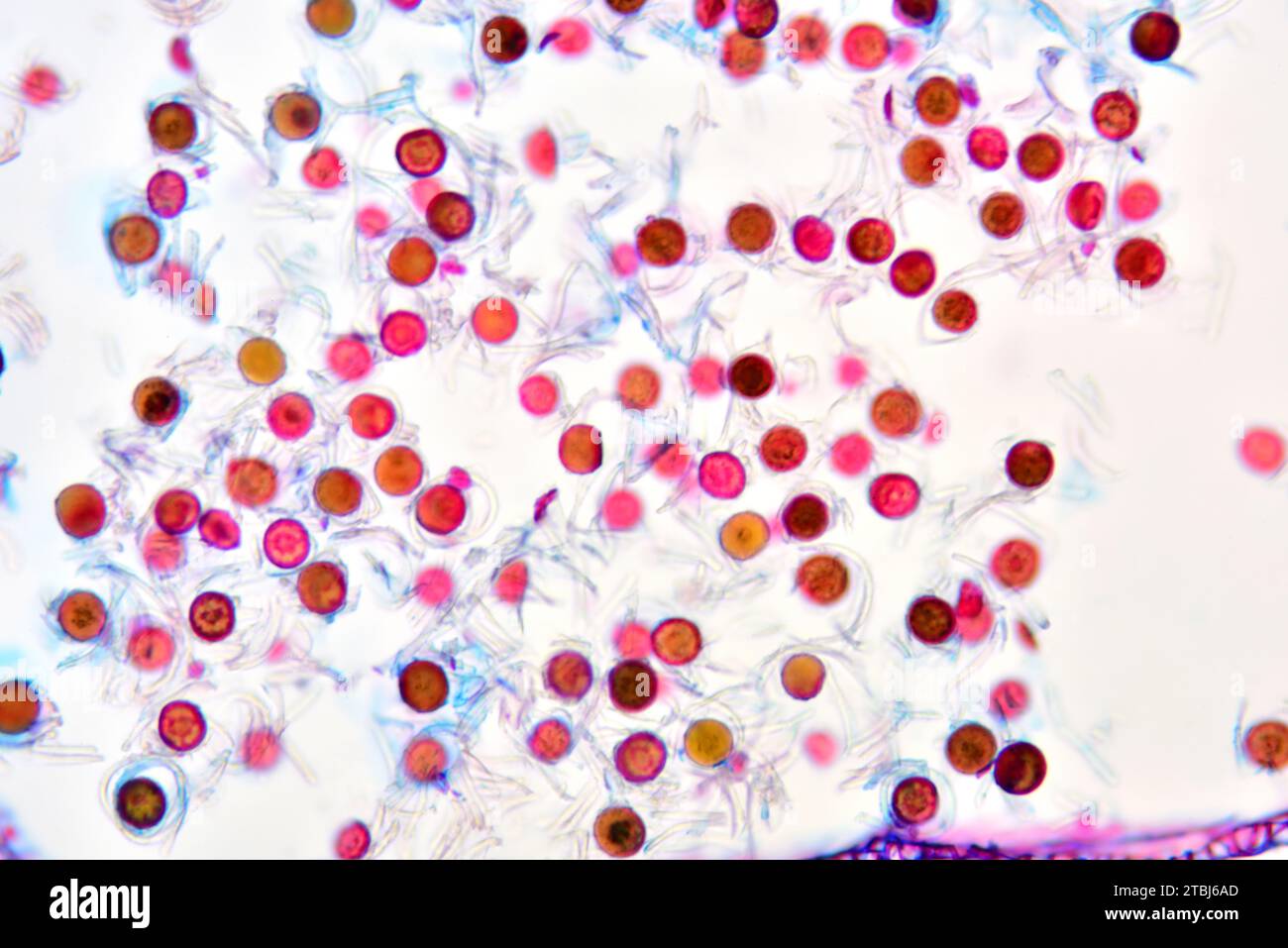 Strobilus of Equisetum sp. with spores. Optical microscope X200. Stock Photohttps://www.alamy.com/image-license-details/?v=1https://www.alamy.com/strobilus-of-equisetum-sp-with-spores-optical-microscope-x200-image575103493.html
Strobilus of Equisetum sp. with spores. Optical microscope X200. Stock Photohttps://www.alamy.com/image-license-details/?v=1https://www.alamy.com/strobilus-of-equisetum-sp-with-spores-optical-microscope-x200-image575103493.htmlRF2TBJ6AD–Strobilus of Equisetum sp. with spores. Optical microscope X200.
![. An illustrated flora of the northern United States, Canada and the British possessions, from Newfoundland to the parallel of the southern boundary of Virginia, and from the Atlantic Ocean westward to the 102d meridian. Botany; Botany. Genus i. HORSETAIL FAMILY. 39 i. EQUISETUM [Tourn.] L. Sp. PI. 1061. 1753. Characters of the family. [Name ancient, signifying horse-tail, in allusion to the copious branching of several species.] Called also Toad-pipe, Tad-pipe. About 25 species, of very wide geographic distribution. Type species : Equiselum fiuviatile L. Stems annual; stomata scattered. Stems Stock Photo . An illustrated flora of the northern United States, Canada and the British possessions, from Newfoundland to the parallel of the southern boundary of Virginia, and from the Atlantic Ocean westward to the 102d meridian. Botany; Botany. Genus i. HORSETAIL FAMILY. 39 i. EQUISETUM [Tourn.] L. Sp. PI. 1061. 1753. Characters of the family. [Name ancient, signifying horse-tail, in allusion to the copious branching of several species.] Called also Toad-pipe, Tad-pipe. About 25 species, of very wide geographic distribution. Type species : Equiselum fiuviatile L. Stems annual; stomata scattered. Stems Stock Photo](https://c8.alamy.com/comp/RDM96E/an-illustrated-flora-of-the-northern-united-states-canada-and-the-british-possessions-from-newfoundland-to-the-parallel-of-the-southern-boundary-of-virginia-and-from-the-atlantic-ocean-westward-to-the-102d-meridian-botany-botany-genus-i-horsetail-family-39-i-equisetum-tourn-l-sp-pi-1061-1753-characters-of-the-family-name-ancient-signifying-horse-tail-in-allusion-to-the-copious-branching-of-several-species-called-also-toad-pipe-tad-pipe-about-25-species-of-very-wide-geographic-distribution-type-species-equiselum-fiuviatile-l-stems-annual-stomata-scattered-stems-RDM96E.jpg) . An illustrated flora of the northern United States, Canada and the British possessions, from Newfoundland to the parallel of the southern boundary of Virginia, and from the Atlantic Ocean westward to the 102d meridian. Botany; Botany. Genus i. HORSETAIL FAMILY. 39 i. EQUISETUM [Tourn.] L. Sp. PI. 1061. 1753. Characters of the family. [Name ancient, signifying horse-tail, in allusion to the copious branching of several species.] Called also Toad-pipe, Tad-pipe. About 25 species, of very wide geographic distribution. Type species : Equiselum fiuviatile L. Stems annual; stomata scattered. Stems Stock Photohttps://www.alamy.com/image-license-details/?v=1https://www.alamy.com/an-illustrated-flora-of-the-northern-united-states-canada-and-the-british-possessions-from-newfoundland-to-the-parallel-of-the-southern-boundary-of-virginia-and-from-the-atlantic-ocean-westward-to-the-102d-meridian-botany-botany-genus-i-horsetail-family-39-i-equisetum-tourn-l-sp-pi-1061-1753-characters-of-the-family-name-ancient-signifying-horse-tail-in-allusion-to-the-copious-branching-of-several-species-called-also-toad-pipe-tad-pipe-about-25-species-of-very-wide-geographic-distribution-type-species-equiselum-fiuviatile-l-stems-annual-stomata-scattered-stems-image232171590.html
. An illustrated flora of the northern United States, Canada and the British possessions, from Newfoundland to the parallel of the southern boundary of Virginia, and from the Atlantic Ocean westward to the 102d meridian. Botany; Botany. Genus i. HORSETAIL FAMILY. 39 i. EQUISETUM [Tourn.] L. Sp. PI. 1061. 1753. Characters of the family. [Name ancient, signifying horse-tail, in allusion to the copious branching of several species.] Called also Toad-pipe, Tad-pipe. About 25 species, of very wide geographic distribution. Type species : Equiselum fiuviatile L. Stems annual; stomata scattered. Stems Stock Photohttps://www.alamy.com/image-license-details/?v=1https://www.alamy.com/an-illustrated-flora-of-the-northern-united-states-canada-and-the-british-possessions-from-newfoundland-to-the-parallel-of-the-southern-boundary-of-virginia-and-from-the-atlantic-ocean-westward-to-the-102d-meridian-botany-botany-genus-i-horsetail-family-39-i-equisetum-tourn-l-sp-pi-1061-1753-characters-of-the-family-name-ancient-signifying-horse-tail-in-allusion-to-the-copious-branching-of-several-species-called-also-toad-pipe-tad-pipe-about-25-species-of-very-wide-geographic-distribution-type-species-equiselum-fiuviatile-l-stems-annual-stomata-scattered-stems-image232171590.htmlRMRDM96E–. An illustrated flora of the northern United States, Canada and the British possessions, from Newfoundland to the parallel of the southern boundary of Virginia, and from the Atlantic Ocean westward to the 102d meridian. Botany; Botany. Genus i. HORSETAIL FAMILY. 39 i. EQUISETUM [Tourn.] L. Sp. PI. 1061. 1753. Characters of the family. [Name ancient, signifying horse-tail, in allusion to the copious branching of several species.] Called also Toad-pipe, Tad-pipe. About 25 species, of very wide geographic distribution. Type species : Equiselum fiuviatile L. Stems annual; stomata scattered. Stems
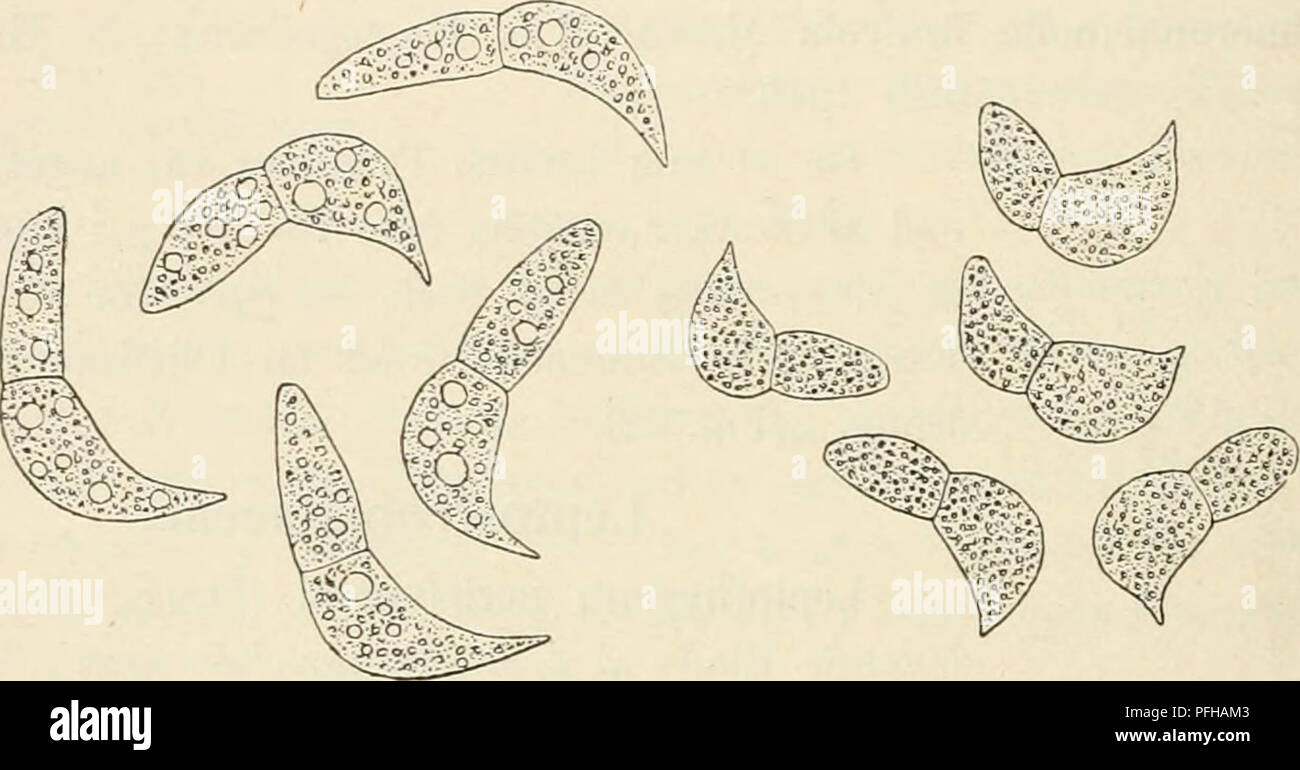 . Dansk botanisk arkiv. Plants; Plants -- Denmark. 34 Dansk Botanisk Arkiv, Bd. 2. Nr. 5. Dinemasporium graininnm Lév. Paa visne Blade af Luzula pilosa. S. Gelsskov, Aug. 1914. Melanconiales. *Gloeosporium gallaruni Ch. Rich. Paa Galler, frembragt af Dryophanta sp., paa Blade af Quercus robur. S. Hareskov, Aug. 1915. Gloeosporium equiseti Ell. et Ev. Paa Equisetum fluviatile. S. Eske- mosegaard, Aug. 1913. *Gloeosporium mnsarnm Cooke et Mass. var. importatum Laubert. Paa importerede Frugter af Musa. København, Aug. 1912. Konidierne 15—20 x 7—8^; Cooke et Massee angiver for Hoved- arten 10—12 x Stock Photohttps://www.alamy.com/image-license-details/?v=1https://www.alamy.com/dansk-botanisk-arkiv-plants-plants-denmark-34-dansk-botanisk-arkiv-bd-2-nr-5-dinemasporium-graininnm-lv-paa-visne-blade-af-luzula-pilosa-s-gelsskov-aug-1914-melanconiales-gloeosporium-gallaruni-ch-rich-paa-galler-frembragt-af-dryophanta-sp-paa-blade-af-quercus-robur-s-hareskov-aug-1915-gloeosporium-equiseti-ell-et-ev-paa-equisetum-fluviatile-s-eske-mosegaard-aug-1913-gloeosporium-mnsarnm-cooke-et-mass-var-importatum-laubert-paa-importerede-frugter-af-musa-kbenhavn-aug-1912-konidierne-1520-x-78-cooke-et-massee-angiver-for-hoved-arten-1012-x-image216125843.html
. Dansk botanisk arkiv. Plants; Plants -- Denmark. 34 Dansk Botanisk Arkiv, Bd. 2. Nr. 5. Dinemasporium graininnm Lév. Paa visne Blade af Luzula pilosa. S. Gelsskov, Aug. 1914. Melanconiales. *Gloeosporium gallaruni Ch. Rich. Paa Galler, frembragt af Dryophanta sp., paa Blade af Quercus robur. S. Hareskov, Aug. 1915. Gloeosporium equiseti Ell. et Ev. Paa Equisetum fluviatile. S. Eske- mosegaard, Aug. 1913. *Gloeosporium mnsarnm Cooke et Mass. var. importatum Laubert. Paa importerede Frugter af Musa. København, Aug. 1912. Konidierne 15—20 x 7—8^; Cooke et Massee angiver for Hoved- arten 10—12 x Stock Photohttps://www.alamy.com/image-license-details/?v=1https://www.alamy.com/dansk-botanisk-arkiv-plants-plants-denmark-34-dansk-botanisk-arkiv-bd-2-nr-5-dinemasporium-graininnm-lv-paa-visne-blade-af-luzula-pilosa-s-gelsskov-aug-1914-melanconiales-gloeosporium-gallaruni-ch-rich-paa-galler-frembragt-af-dryophanta-sp-paa-blade-af-quercus-robur-s-hareskov-aug-1915-gloeosporium-equiseti-ell-et-ev-paa-equisetum-fluviatile-s-eske-mosegaard-aug-1913-gloeosporium-mnsarnm-cooke-et-mass-var-importatum-laubert-paa-importerede-frugter-af-musa-kbenhavn-aug-1912-konidierne-1520-x-78-cooke-et-massee-angiver-for-hoved-arten-1012-x-image216125843.htmlRMPFHAM3–. Dansk botanisk arkiv. Plants; Plants -- Denmark. 34 Dansk Botanisk Arkiv, Bd. 2. Nr. 5. Dinemasporium graininnm Lév. Paa visne Blade af Luzula pilosa. S. Gelsskov, Aug. 1914. Melanconiales. *Gloeosporium gallaruni Ch. Rich. Paa Galler, frembragt af Dryophanta sp., paa Blade af Quercus robur. S. Hareskov, Aug. 1915. Gloeosporium equiseti Ell. et Ev. Paa Equisetum fluviatile. S. Eske- mosegaard, Aug. 1913. *Gloeosporium mnsarnm Cooke et Mass. var. importatum Laubert. Paa importerede Frugter af Musa. København, Aug. 1912. Konidierne 15—20 x 7—8^; Cooke et Massee angiver for Hoved- arten 10—12 x
![dong bei yao yong zhi dong bei yao yong zhi wu zhi dongbeiyaoyongzh00liuz Year: 1950 è±³7éè Equisetum arvonse L. 1. æ¤&çä¸é¨(示ftå-åffiåç1?ã 0ï¼ 2. æ±å-Kæ¤ï¼3.(a)æ±å-åå¼µéçå½çµ²ï¼ (b)»絲港ç¹å¨æ±å- hã ç»8æ¨è³ Equisetnm hyemale L. ]â¢è¢«ççä¸é¨ï¼2.^çä¸é¨ï¼ç¤ºæ±å-èçï¼; 3.è^é¢æ¾å¤§(示11ä¸çå°çªèµ·ï¼ï¼ 4.èç«|åã æ¨è³(åç¥æ¬èï¼glj稱:å§è(æ±åï¼,ç¯éª¨è(æ±åï¼ï¼æ¨[1«è(é稱ï¼å8 Equisetum hyemale L. Sp. PI. (1753) 1062; Kom. Fl. Mansh. I (1901) 156ï¼ Kom. et Alis. Key. PI. Far East. Reg. USSR I (1931)100, tab. 21, fig. 4; Iljin in Kom. Fl. URSS I (1934) 110, tab. V, fig. 8aâb; Kitag. Lineam. Fl. Mans Stock Photo dong bei yao yong zhi dong bei yao yong zhi wu zhi dongbeiyaoyongzh00liuz Year: 1950 è±³7éè Equisetum arvonse L. 1. æ¤&çä¸é¨(示ftå-åffiåç1?ã 0ï¼ 2. æ±å-Kæ¤ï¼3.(a)æ±å-åå¼µéçå½çµ²ï¼ (b)»絲港ç¹å¨æ±å- hã ç»8æ¨è³ Equisetnm hyemale L. ]â¢è¢«ççä¸é¨ï¼2.^çä¸é¨ï¼ç¤ºæ±å-èçï¼; 3.è^é¢æ¾å¤§(示11ä¸çå°çªèµ·ï¼ï¼ 4.èç«|åã æ¨è³(åç¥æ¬èï¼glj稱:å§è(æ±åï¼,ç¯éª¨è(æ±åï¼ï¼æ¨[1«è(é稱ï¼å8 Equisetum hyemale L. Sp. PI. (1753) 1062; Kom. Fl. Mansh. I (1901) 156ï¼ Kom. et Alis. Key. PI. Far East. Reg. USSR I (1931)100, tab. 21, fig. 4; Iljin in Kom. Fl. URSS I (1934) 110, tab. V, fig. 8aâb; Kitag. Lineam. Fl. Mans Stock Photo](https://c8.alamy.com/comp/T0NKA2/dong-bei-yao-yong-zhi-dong-bei-yao-yong-zhi-wu-zhi-dongbeiyaoyongzh00liuz-year-1950-7-equisetum-arvonse-l-1-ft-ffi1-0-2-k3a-b-h-8-equisetnm-hyemale-l-2-311-4-glj-18-equisetum-hyemale-l-sp-pi-1753-1062-kom-fl-mansh-i-1901-156-kom-et-alis-key-pi-far-east-reg-ussr-i-1931100-tab-21-fig-4-iljin-in-kom-fl-urss-i-1934-110-tab-v-fig-8ab-kitag-lineam-fl-mans-T0NKA2.jpg) dong bei yao yong zhi dong bei yao yong zhi wu zhi dongbeiyaoyongzh00liuz Year: 1950 è±³7éè Equisetum arvonse L. 1. æ¤&çä¸é¨(示ftå-åffiåç1?ã 0ï¼ 2. æ±å-Kæ¤ï¼3.(a)æ±å-åå¼µéçå½çµ²ï¼ (b)»絲港ç¹å¨æ±å- hã ç»8æ¨è³ Equisetnm hyemale L. ]â¢è¢«ççä¸é¨ï¼2.^çä¸é¨ï¼ç¤ºæ±å-èçï¼; 3.è^é¢æ¾å¤§(示11ä¸çå°çªèµ·ï¼ï¼ 4.èç«|åã æ¨è³(åç¥æ¬èï¼glj稱:å§è(æ±åï¼,ç¯éª¨è(æ±åï¼ï¼æ¨[1«è(é稱ï¼å8 Equisetum hyemale L. Sp. PI. (1753) 1062; Kom. Fl. Mansh. I (1901) 156ï¼ Kom. et Alis. Key. PI. Far East. Reg. USSR I (1931)100, tab. 21, fig. 4; Iljin in Kom. Fl. URSS I (1934) 110, tab. V, fig. 8aâb; Kitag. Lineam. Fl. Mans Stock Photohttps://www.alamy.com/image-license-details/?v=1https://www.alamy.com/dong-bei-yao-yong-zhi-dong-bei-yao-yong-zhi-wu-zhi-dongbeiyaoyongzh00liuz-year-1950-7-equisetum-arvonse-l-1-ft-ffi1-0-2-k3a-b-h-8-equisetnm-hyemale-l-2-311-4-glj-18-equisetum-hyemale-l-sp-pi-1753-1062-kom-fl-mansh-i-1901-156-kom-et-alis-key-pi-far-east-reg-ussr-i-1931100-tab-21-fig-4-iljin-in-kom-fl-urss-i-1934-110-tab-v-fig-8ab-kitag-lineam-fl-mans-image241421322.html
dong bei yao yong zhi dong bei yao yong zhi wu zhi dongbeiyaoyongzh00liuz Year: 1950 è±³7éè Equisetum arvonse L. 1. æ¤&çä¸é¨(示ftå-åffiåç1?ã 0ï¼ 2. æ±å-Kæ¤ï¼3.(a)æ±å-åå¼µéçå½çµ²ï¼ (b)»絲港ç¹å¨æ±å- hã ç»8æ¨è³ Equisetnm hyemale L. ]â¢è¢«ççä¸é¨ï¼2.^çä¸é¨ï¼ç¤ºæ±å-èçï¼; 3.è^é¢æ¾å¤§(示11ä¸çå°çªèµ·ï¼ï¼ 4.èç«|åã æ¨è³(åç¥æ¬èï¼glj稱:å§è(æ±åï¼,ç¯éª¨è(æ±åï¼ï¼æ¨[1«è(é稱ï¼å8 Equisetum hyemale L. Sp. PI. (1753) 1062; Kom. Fl. Mansh. I (1901) 156ï¼ Kom. et Alis. Key. PI. Far East. Reg. USSR I (1931)100, tab. 21, fig. 4; Iljin in Kom. Fl. URSS I (1934) 110, tab. V, fig. 8aâb; Kitag. Lineam. Fl. Mans Stock Photohttps://www.alamy.com/image-license-details/?v=1https://www.alamy.com/dong-bei-yao-yong-zhi-dong-bei-yao-yong-zhi-wu-zhi-dongbeiyaoyongzh00liuz-year-1950-7-equisetum-arvonse-l-1-ft-ffi1-0-2-k3a-b-h-8-equisetnm-hyemale-l-2-311-4-glj-18-equisetum-hyemale-l-sp-pi-1753-1062-kom-fl-mansh-i-1901-156-kom-et-alis-key-pi-far-east-reg-ussr-i-1931100-tab-21-fig-4-iljin-in-kom-fl-urss-i-1934-110-tab-v-fig-8ab-kitag-lineam-fl-mans-image241421322.htmlRMT0NKA2–dong bei yao yong zhi dong bei yao yong zhi wu zhi dongbeiyaoyongzh00liuz Year: 1950 è±³7éè Equisetum arvonse L. 1. æ¤&çä¸é¨(示ftå-åffiåç1?ã 0ï¼ 2. æ±å-Kæ¤ï¼3.(a)æ±å-åå¼µéçå½çµ²ï¼ (b)»絲港ç¹å¨æ±å- hã ç»8æ¨è³ Equisetnm hyemale L. ]â¢è¢«ççä¸é¨ï¼2.^çä¸é¨ï¼ç¤ºæ±å-èçï¼; 3.è^é¢æ¾å¤§(示11ä¸çå°çªèµ·ï¼ï¼ 4.èç«|åã æ¨è³(åç¥æ¬èï¼glj稱:å§è(æ±åï¼,ç¯éª¨è(æ±åï¼ï¼æ¨[1«è(é稱ï¼å8 Equisetum hyemale L. Sp. PI. (1753) 1062; Kom. Fl. Mansh. I (1901) 156ï¼ Kom. et Alis. Key. PI. Far East. Reg. USSR I (1931)100, tab. 21, fig. 4; Iljin in Kom. Fl. URSS I (1934) 110, tab. V, fig. 8aâb; Kitag. Lineam. Fl. Mans
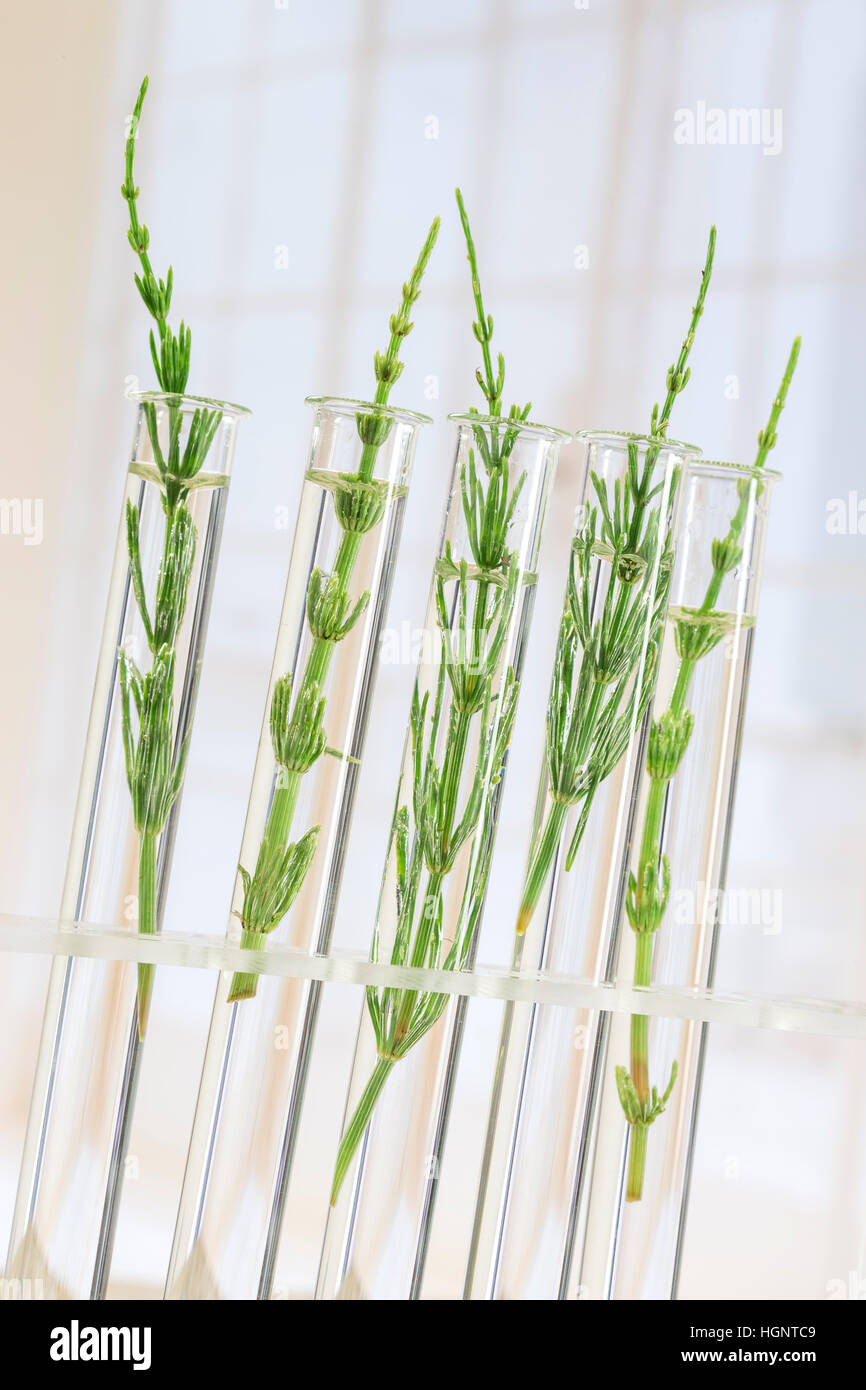 HERBAL MEDICINE Stock Photohttps://www.alamy.com/image-license-details/?v=1https://www.alamy.com/stock-photo-herbal-medicine-130787225.html
HERBAL MEDICINE Stock Photohttps://www.alamy.com/image-license-details/?v=1https://www.alamy.com/stock-photo-herbal-medicine-130787225.htmlRFHGNTC9–HERBAL MEDICINE
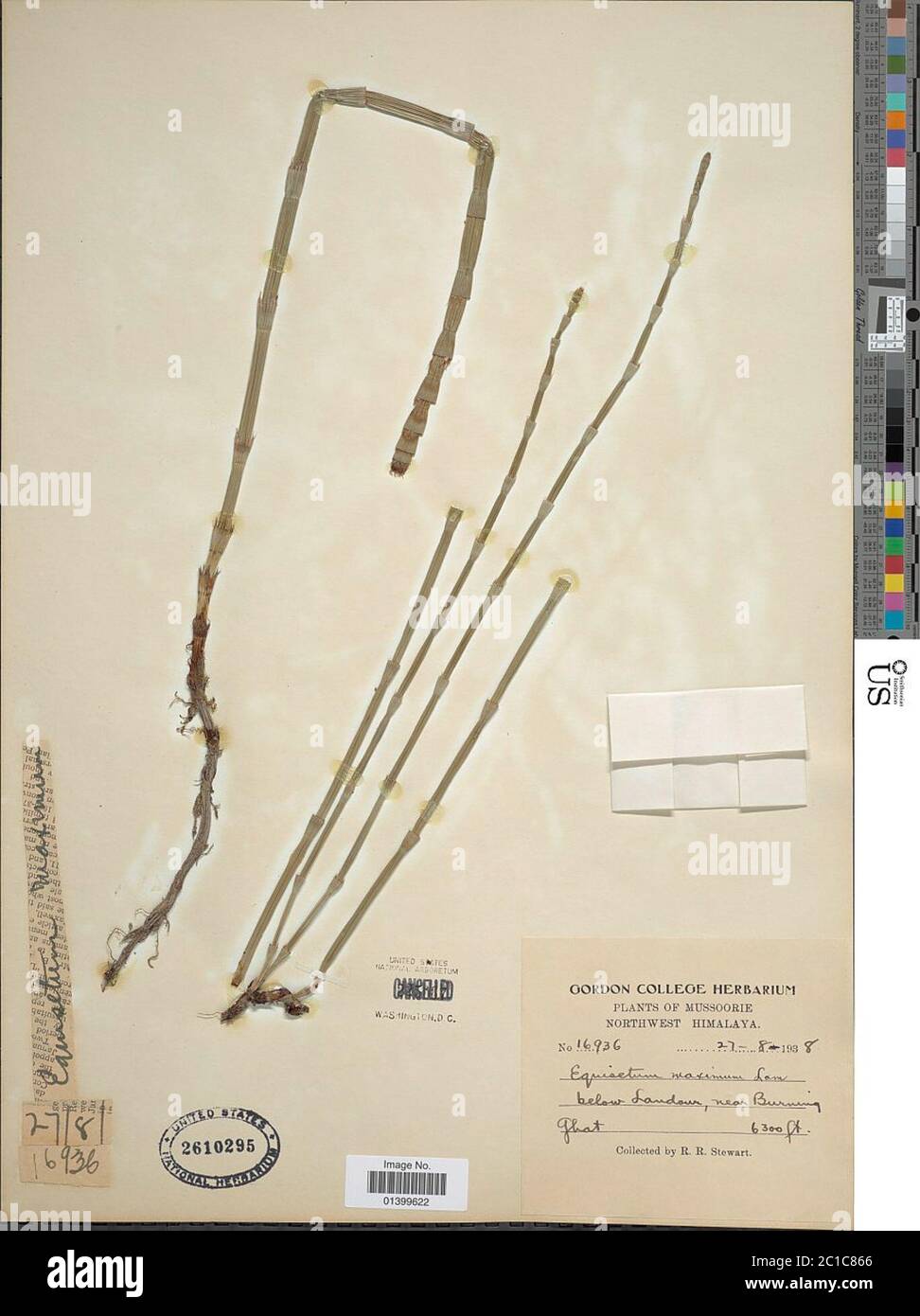 Equisetum sp Equisetum sp. Stock Photohttps://www.alamy.com/image-license-details/?v=1https://www.alamy.com/equisetum-sp-equisetum-sp-image362302254.html
Equisetum sp Equisetum sp. Stock Photohttps://www.alamy.com/image-license-details/?v=1https://www.alamy.com/equisetum-sp-equisetum-sp-image362302254.htmlRM2C1C866–Equisetum sp Equisetum sp.
 . Studies in fossil botany . Paleobotany. THE STEM OF CALAMITES 25 far as anatomy goes, is simply an Equisetum with secondary thickening. In order to carry the comparison further, we must settle one or two points, especially the course of the vascular bundles. In Equisetum itself their course is exceedingly simple: a single vascular bundle enters the stem from each leaf, and. Fig. 7.—Calamitcs, sp. Radial section of a decorticated stem, with fairly thick wood, showing the fistular pith, crossed by diaphragms at the nodes. X 9. From a photo- graph. Phil. Trans., W. and S. Will. Coll. 1937. pass Stock Photohttps://www.alamy.com/image-license-details/?v=1https://www.alamy.com/studies-in-fossil-botany-paleobotany-the-stem-of-calamites-25-far-as-anatomy-goes-is-simply-an-equisetum-with-secondary-thickening-in-order-to-carry-the-comparison-further-we-must-settle-one-or-two-points-especially-the-course-of-the-vascular-bundles-in-equisetum-itself-their-course-is-exceedingly-simple-a-single-vascular-bundle-enters-the-stem-from-each-leaf-and-fig-7calamitcs-sp-radial-section-of-a-decorticated-stem-with-fairly-thick-wood-showing-the-fistular-pith-crossed-by-diaphragms-at-the-nodes-x-9-from-a-photo-graph-phil-trans-w-and-s-will-coll-1937-pass-image231995141.html
. Studies in fossil botany . Paleobotany. THE STEM OF CALAMITES 25 far as anatomy goes, is simply an Equisetum with secondary thickening. In order to carry the comparison further, we must settle one or two points, especially the course of the vascular bundles. In Equisetum itself their course is exceedingly simple: a single vascular bundle enters the stem from each leaf, and. Fig. 7.—Calamitcs, sp. Radial section of a decorticated stem, with fairly thick wood, showing the fistular pith, crossed by diaphragms at the nodes. X 9. From a photo- graph. Phil. Trans., W. and S. Will. Coll. 1937. pass Stock Photohttps://www.alamy.com/image-license-details/?v=1https://www.alamy.com/studies-in-fossil-botany-paleobotany-the-stem-of-calamites-25-far-as-anatomy-goes-is-simply-an-equisetum-with-secondary-thickening-in-order-to-carry-the-comparison-further-we-must-settle-one-or-two-points-especially-the-course-of-the-vascular-bundles-in-equisetum-itself-their-course-is-exceedingly-simple-a-single-vascular-bundle-enters-the-stem-from-each-leaf-and-fig-7calamitcs-sp-radial-section-of-a-decorticated-stem-with-fairly-thick-wood-showing-the-fistular-pith-crossed-by-diaphragms-at-the-nodes-x-9-from-a-photo-graph-phil-trans-w-and-s-will-coll-1937-pass-image231995141.htmlRMRDC84N–. Studies in fossil botany . Paleobotany. THE STEM OF CALAMITES 25 far as anatomy goes, is simply an Equisetum with secondary thickening. In order to carry the comparison further, we must settle one or two points, especially the course of the vascular bundles. In Equisetum itself their course is exceedingly simple: a single vascular bundle enters the stem from each leaf, and. Fig. 7.—Calamitcs, sp. Radial section of a decorticated stem, with fairly thick wood, showing the fistular pith, crossed by diaphragms at the nodes. X 9. From a photo- graph. Phil. Trans., W. and S. Will. Coll. 1937. pass
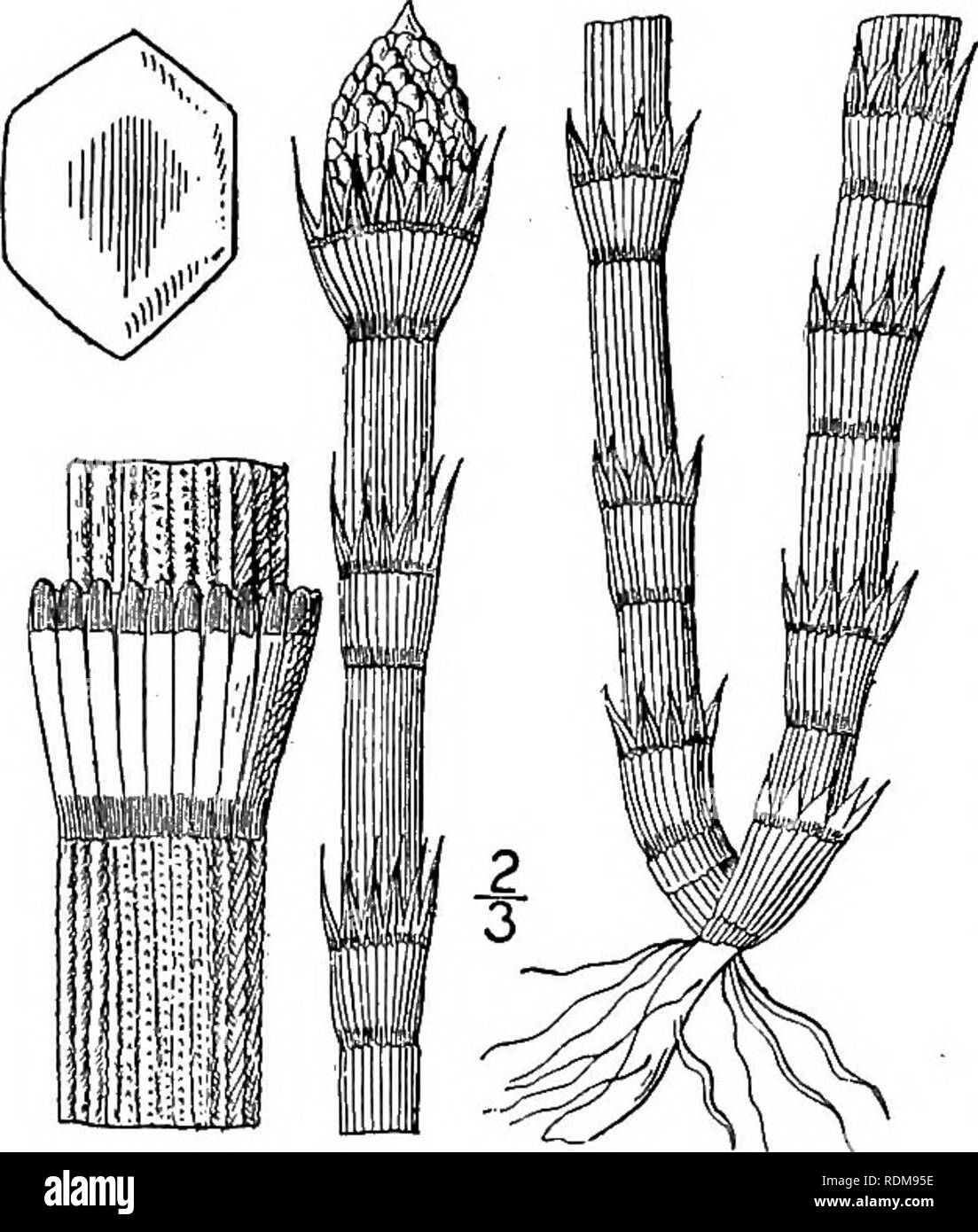 . An illustrated flora of the northern United States, Canada and the British possessions, from Newfoundland to the parallel of the southern boundary of Virginia, and from the Atlantic Ocean westward to the 102d meridian. Botany; Botany. Genus i. HORSETAIL FAMILY. 41 6. Equisetum fluviatile L. Swamp Horsetail. Fig. 94. Equisetum limosum L. Sp. PI. 1062. 1753. Equisetum limosum L. Sp. PI. 1062. 1753. Stems annual, all alike, 2°-4° high, slightly 10-30- furrowed, very smooth, usually producing upright branches after the spores are formed, the stomata scattered. Sheaths appressed with about 18 dar Stock Photohttps://www.alamy.com/image-license-details/?v=1https://www.alamy.com/an-illustrated-flora-of-the-northern-united-states-canada-and-the-british-possessions-from-newfoundland-to-the-parallel-of-the-southern-boundary-of-virginia-and-from-the-atlantic-ocean-westward-to-the-102d-meridian-botany-botany-genus-i-horsetail-family-41-6-equisetum-fluviatile-l-swamp-horsetail-fig-94-equisetum-limosum-l-sp-pi-1062-1753-equisetum-limosum-l-sp-pi-1062-1753-stems-annual-all-alike-2-4-high-slightly-10-30-furrowed-very-smooth-usually-producing-upright-branches-after-the-spores-are-formed-the-stomata-scattered-sheaths-appressed-with-about-18-dar-image232171562.html
. An illustrated flora of the northern United States, Canada and the British possessions, from Newfoundland to the parallel of the southern boundary of Virginia, and from the Atlantic Ocean westward to the 102d meridian. Botany; Botany. Genus i. HORSETAIL FAMILY. 41 6. Equisetum fluviatile L. Swamp Horsetail. Fig. 94. Equisetum limosum L. Sp. PI. 1062. 1753. Equisetum limosum L. Sp. PI. 1062. 1753. Stems annual, all alike, 2°-4° high, slightly 10-30- furrowed, very smooth, usually producing upright branches after the spores are formed, the stomata scattered. Sheaths appressed with about 18 dar Stock Photohttps://www.alamy.com/image-license-details/?v=1https://www.alamy.com/an-illustrated-flora-of-the-northern-united-states-canada-and-the-british-possessions-from-newfoundland-to-the-parallel-of-the-southern-boundary-of-virginia-and-from-the-atlantic-ocean-westward-to-the-102d-meridian-botany-botany-genus-i-horsetail-family-41-6-equisetum-fluviatile-l-swamp-horsetail-fig-94-equisetum-limosum-l-sp-pi-1062-1753-equisetum-limosum-l-sp-pi-1062-1753-stems-annual-all-alike-2-4-high-slightly-10-30-furrowed-very-smooth-usually-producing-upright-branches-after-the-spores-are-formed-the-stomata-scattered-sheaths-appressed-with-about-18-dar-image232171562.htmlRMRDM95E–. An illustrated flora of the northern United States, Canada and the British possessions, from Newfoundland to the parallel of the southern boundary of Virginia, and from the Atlantic Ocean westward to the 102d meridian. Botany; Botany. Genus i. HORSETAIL FAMILY. 41 6. Equisetum fluviatile L. Swamp Horsetail. Fig. 94. Equisetum limosum L. Sp. PI. 1062. 1753. Equisetum limosum L. Sp. PI. 1062. 1753. Stems annual, all alike, 2°-4° high, slightly 10-30- furrowed, very smooth, usually producing upright branches after the spores are formed, the stomata scattered. Sheaths appressed with about 18 dar
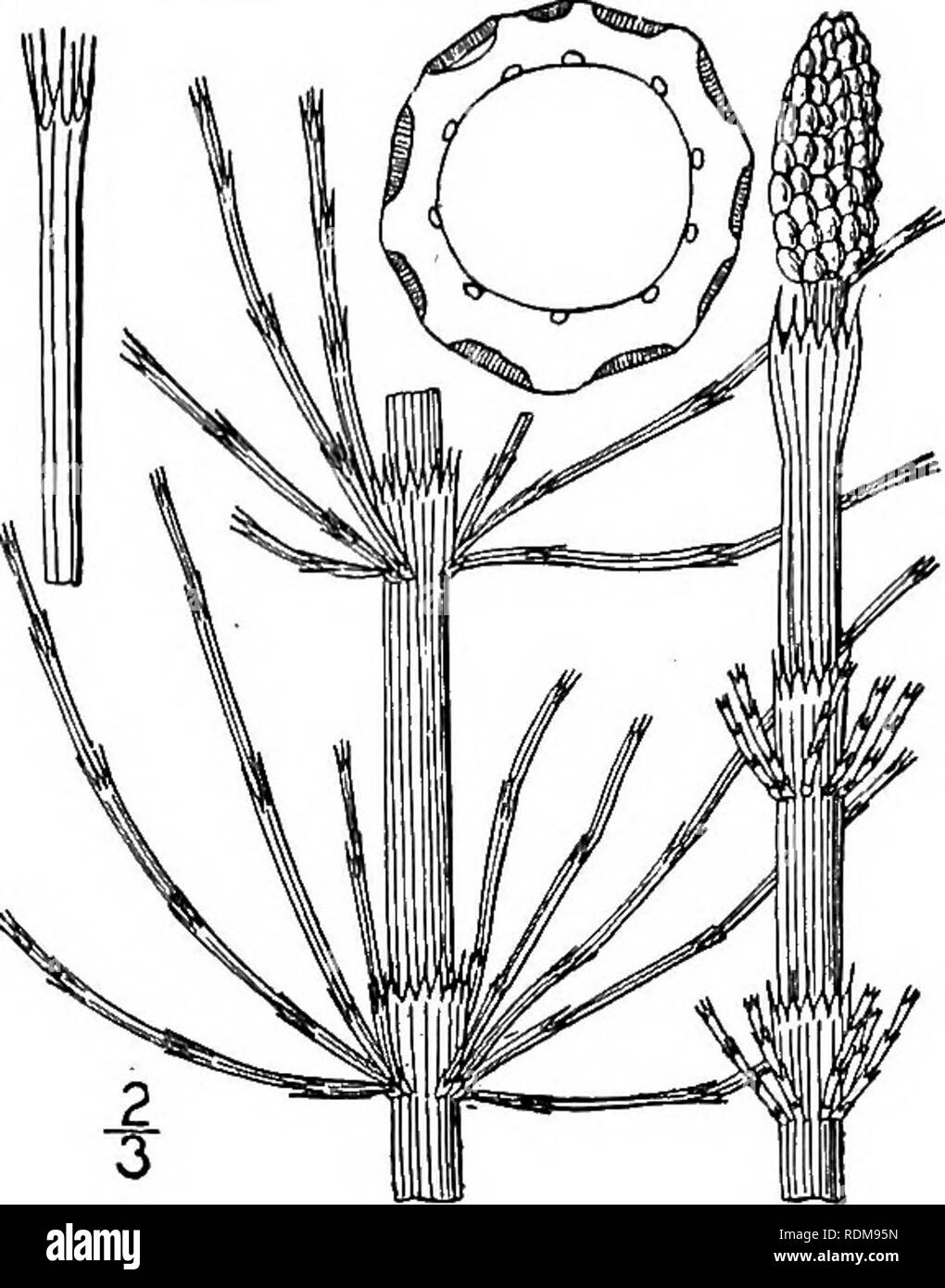 . An illustrated flora of the northern United States, Canada and the British possessions, from Newfoundland to the parallel of the southern boundary of Virginia, and from the Atlantic Ocean westward to the 102d meridian. Botany; Botany. Genus i. HORSETAIL FAMILY. 41 6. Equisetum fluviatile L. Swamp Horsetail. Fig. 94. Equisetum limosum L. Sp. PI. 1062. 1753. Equisetum limosum L. Sp. PI. 1062. 1753. Stems annual, all alike, 2°-4° high, slightly 10-30- furrowed, very smooth, usually producing upright branches after the spores are formed, the stomata scattered. Sheaths appressed with about 18 dar Stock Photohttps://www.alamy.com/image-license-details/?v=1https://www.alamy.com/an-illustrated-flora-of-the-northern-united-states-canada-and-the-british-possessions-from-newfoundland-to-the-parallel-of-the-southern-boundary-of-virginia-and-from-the-atlantic-ocean-westward-to-the-102d-meridian-botany-botany-genus-i-horsetail-family-41-6-equisetum-fluviatile-l-swamp-horsetail-fig-94-equisetum-limosum-l-sp-pi-1062-1753-equisetum-limosum-l-sp-pi-1062-1753-stems-annual-all-alike-2-4-high-slightly-10-30-furrowed-very-smooth-usually-producing-upright-branches-after-the-spores-are-formed-the-stomata-scattered-sheaths-appressed-with-about-18-dar-image232171569.html
. An illustrated flora of the northern United States, Canada and the British possessions, from Newfoundland to the parallel of the southern boundary of Virginia, and from the Atlantic Ocean westward to the 102d meridian. Botany; Botany. Genus i. HORSETAIL FAMILY. 41 6. Equisetum fluviatile L. Swamp Horsetail. Fig. 94. Equisetum limosum L. Sp. PI. 1062. 1753. Equisetum limosum L. Sp. PI. 1062. 1753. Stems annual, all alike, 2°-4° high, slightly 10-30- furrowed, very smooth, usually producing upright branches after the spores are formed, the stomata scattered. Sheaths appressed with about 18 dar Stock Photohttps://www.alamy.com/image-license-details/?v=1https://www.alamy.com/an-illustrated-flora-of-the-northern-united-states-canada-and-the-british-possessions-from-newfoundland-to-the-parallel-of-the-southern-boundary-of-virginia-and-from-the-atlantic-ocean-westward-to-the-102d-meridian-botany-botany-genus-i-horsetail-family-41-6-equisetum-fluviatile-l-swamp-horsetail-fig-94-equisetum-limosum-l-sp-pi-1062-1753-equisetum-limosum-l-sp-pi-1062-1753-stems-annual-all-alike-2-4-high-slightly-10-30-furrowed-very-smooth-usually-producing-upright-branches-after-the-spores-are-formed-the-stomata-scattered-sheaths-appressed-with-about-18-dar-image232171569.htmlRMRDM95N–. An illustrated flora of the northern United States, Canada and the British possessions, from Newfoundland to the parallel of the southern boundary of Virginia, and from the Atlantic Ocean westward to the 102d meridian. Botany; Botany. Genus i. HORSETAIL FAMILY. 41 6. Equisetum fluviatile L. Swamp Horsetail. Fig. 94. Equisetum limosum L. Sp. PI. 1062. 1753. Equisetum limosum L. Sp. PI. 1062. 1753. Stems annual, all alike, 2°-4° high, slightly 10-30- furrowed, very smooth, usually producing upright branches after the spores are formed, the stomata scattered. Sheaths appressed with about 18 dar
 . Abhandlungen der K. K. Zool.-Botan. Gesellschaft in Wien. Botany -- Austria; Zoology -- Austria. 32 Dr. Karl Rudolph. Die mikroskopische Aufarbeitung und Bestimmung ergibt: Viele und schön erhaltene Laubblättchen von Betula nana;^) dünne Zweig- stücke Betula, wohl zweifellos von Betula nana: Wurzelholz von Pimis sp. und von einer Salicacee (S. 104), wahrscheinlich von Salix; Rhizome von Equisetum Umosum L. und E. palustre L.; ferner etwa 3 mm breite Rhizom- i. Aliraum. ^ Jüngerer Moostorf. Jüngerer Waldtorf. > Älterer Moostorf. Älterer Waldtorf (tiitt in natura viel schärfer hervor). Ri Stock Photohttps://www.alamy.com/image-license-details/?v=1https://www.alamy.com/abhandlungen-der-k-k-zool-botan-gesellschaft-in-wien-botany-austria-zoology-austria-32-dr-karl-rudolph-die-mikroskopische-aufarbeitung-und-bestimmung-ergibt-viele-und-schn-erhaltene-laubblttchen-von-betula-nana-dnne-zweig-stcke-betula-wohl-zweifellos-von-betula-nana-wurzelholz-von-pimis-sp-und-von-einer-salicacee-s-104-wahrscheinlich-von-salix-rhizome-von-equisetum-umosum-l-und-e-palustre-l-ferner-etwa-3-mm-breite-rhizom-i-aliraum-jngerer-moostorf-jngerer-waldtorf-gt-lterer-moostorf-lterer-waldtorf-tiitt-in-natura-viel-schrfer-hervor-ri-image238044922.html
. Abhandlungen der K. K. Zool.-Botan. Gesellschaft in Wien. Botany -- Austria; Zoology -- Austria. 32 Dr. Karl Rudolph. Die mikroskopische Aufarbeitung und Bestimmung ergibt: Viele und schön erhaltene Laubblättchen von Betula nana;^) dünne Zweig- stücke Betula, wohl zweifellos von Betula nana: Wurzelholz von Pimis sp. und von einer Salicacee (S. 104), wahrscheinlich von Salix; Rhizome von Equisetum Umosum L. und E. palustre L.; ferner etwa 3 mm breite Rhizom- i. Aliraum. ^ Jüngerer Moostorf. Jüngerer Waldtorf. > Älterer Moostorf. Älterer Waldtorf (tiitt in natura viel schärfer hervor). Ri Stock Photohttps://www.alamy.com/image-license-details/?v=1https://www.alamy.com/abhandlungen-der-k-k-zool-botan-gesellschaft-in-wien-botany-austria-zoology-austria-32-dr-karl-rudolph-die-mikroskopische-aufarbeitung-und-bestimmung-ergibt-viele-und-schn-erhaltene-laubblttchen-von-betula-nana-dnne-zweig-stcke-betula-wohl-zweifellos-von-betula-nana-wurzelholz-von-pimis-sp-und-von-einer-salicacee-s-104-wahrscheinlich-von-salix-rhizome-von-equisetum-umosum-l-und-e-palustre-l-ferner-etwa-3-mm-breite-rhizom-i-aliraum-jngerer-moostorf-jngerer-waldtorf-gt-lterer-moostorf-lterer-waldtorf-tiitt-in-natura-viel-schrfer-hervor-ri-image238044922.htmlRMRR7TMA–. Abhandlungen der K. K. Zool.-Botan. Gesellschaft in Wien. Botany -- Austria; Zoology -- Austria. 32 Dr. Karl Rudolph. Die mikroskopische Aufarbeitung und Bestimmung ergibt: Viele und schön erhaltene Laubblättchen von Betula nana;^) dünne Zweig- stücke Betula, wohl zweifellos von Betula nana: Wurzelholz von Pimis sp. und von einer Salicacee (S. 104), wahrscheinlich von Salix; Rhizome von Equisetum Umosum L. und E. palustre L.; ferner etwa 3 mm breite Rhizom- i. Aliraum. ^ Jüngerer Moostorf. Jüngerer Waldtorf. > Älterer Moostorf. Älterer Waldtorf (tiitt in natura viel schärfer hervor). Ri
![. Ecologically significant wetlands in the North Fork Flathead River watershed . Plant communities; Botany; Rare plants; Plant conservation. Con^ov^on Raik G4/S3 ElBnoit Code CEGL0003S6 EDITION / AUTHOR 99-10-1 Itn ic k Gr.:.? nkc Spmce/ ffdd Horsetafl Forea â PICE A SP. / EQUISETUM ARVENSE Fored similar C ammuniliFS In MDnliinD end iiiabo. Fici^it gliirica ml F'ciii f?'gfl'na/"iii hybnds »n: com rriDn. ibiui^, lumpl au bo Lh iviiec c^ iDfcEhcc bk pTBi:iLcil Fore]BKHiCIciliDn piir]K>5[^ iHnLI jnil Hbiech I9'>T; com Ecrs h JVC picv la [lily bccnpiDupcd 15 F'Cfa iml Con'fiT' in FBdy Stock Photo . Ecologically significant wetlands in the North Fork Flathead River watershed . Plant communities; Botany; Rare plants; Plant conservation. Con^ov^on Raik G4/S3 ElBnoit Code CEGL0003S6 EDITION / AUTHOR 99-10-1 Itn ic k Gr.:.? nkc Spmce/ ffdd Horsetafl Forea â PICE A SP. / EQUISETUM ARVENSE Fored similar C ammuniliFS In MDnliinD end iiiabo. Fici^it gliirica ml F'ciii f?'gfl'na/"iii hybnds »n: com rriDn. ibiui^, lumpl au bo Lh iviiec c^ iDfcEhcc bk pTBi:iLcil Fore]BKHiCIciliDn piir]K>5[^ iHnLI jnil Hbiech I9'>T; com Ecrs h JVC picv la [lily bccnpiDupcd 15 F'Cfa iml Con'fiT' in FBdy Stock Photo](https://c8.alamy.com/comp/RE9NCW/ecologically-significant-wetlands-in-the-north-fork-flathead-river-watershed-plant-communities-botany-rare-plants-plant-conservation-conovon-raik-g4s3-elbnoit-code-cegl0003s6-edition-author-99-10-1-itn-ic-k-gr-nkc-spmce-ffdd-horsetafl-forea-pice-a-sp-equisetum-arvense-fored-similar-c-ammunilifs-in-mdnliind-end-iiiabo-ficiit-gliirica-ml-fciii-fgflnaquotiii-hybnds-n-com-rridn-ibiui-lumpl-au-bo-lh-iviiec-c-idfcehcc-bk-ptbiilcil-fore-bkhicicilidn-piir-kgt5-ihnli-jnil-hbiech-i9gtt-com-ecrs-h-jvc-picv-la-lily-bccnpidupcd-15-fcfa-iml-confit-in-fbdy-RE9NCW.jpg) . Ecologically significant wetlands in the North Fork Flathead River watershed . Plant communities; Botany; Rare plants; Plant conservation. Con^ov^on Raik G4/S3 ElBnoit Code CEGL0003S6 EDITION / AUTHOR 99-10-1 Itn ic k Gr.:.? nkc Spmce/ ffdd Horsetafl Forea â PICE A SP. / EQUISETUM ARVENSE Fored similar C ammuniliFS In MDnliinD end iiiabo. Fici^it gliirica ml F'ciii f?'gfl'na/"iii hybnds »n: com rriDn. ibiui^, lumpl au bo Lh iviiec c^ iDfcEhcc bk pTBi:iLcil Fore]BKHiCIciliDn piir]K>5[^ iHnLI jnil Hbiech I9'>T; com Ecrs h JVC picv la [lily bccnpiDupcd 15 F'Cfa iml Con'fiT' in FBdy Stock Photohttps://www.alamy.com/image-license-details/?v=1https://www.alamy.com/ecologically-significant-wetlands-in-the-north-fork-flathead-river-watershed-plant-communities-botany-rare-plants-plant-conservation-conovon-raik-g4s3-elbnoit-code-cegl0003s6-edition-author-99-10-1-itn-ic-k-gr-nkc-spmce-ffdd-horsetafl-forea-pice-a-sp-equisetum-arvense-fored-similar-c-ammunilifs-in-mdnliind-end-iiiabo-ficiit-gliirica-ml-fciii-fgflnaquotiii-hybnds-n-com-rridn-ibiui-lumpl-au-bo-lh-iviiec-c-idfcehcc-bk-ptbiilcil-fore-bkhicicilidn-piir-kgt5-ihnli-jnil-hbiech-i9gtt-com-ecrs-h-jvc-picv-la-lily-bccnpidupcd-15-fcfa-iml-confit-in-fbdy-image232554361.html
. Ecologically significant wetlands in the North Fork Flathead River watershed . Plant communities; Botany; Rare plants; Plant conservation. Con^ov^on Raik G4/S3 ElBnoit Code CEGL0003S6 EDITION / AUTHOR 99-10-1 Itn ic k Gr.:.? nkc Spmce/ ffdd Horsetafl Forea â PICE A SP. / EQUISETUM ARVENSE Fored similar C ammuniliFS In MDnliinD end iiiabo. Fici^it gliirica ml F'ciii f?'gfl'na/"iii hybnds »n: com rriDn. ibiui^, lumpl au bo Lh iviiec c^ iDfcEhcc bk pTBi:iLcil Fore]BKHiCIciliDn piir]K>5[^ iHnLI jnil Hbiech I9'>T; com Ecrs h JVC picv la [lily bccnpiDupcd 15 F'Cfa iml Con'fiT' in FBdy Stock Photohttps://www.alamy.com/image-license-details/?v=1https://www.alamy.com/ecologically-significant-wetlands-in-the-north-fork-flathead-river-watershed-plant-communities-botany-rare-plants-plant-conservation-conovon-raik-g4s3-elbnoit-code-cegl0003s6-edition-author-99-10-1-itn-ic-k-gr-nkc-spmce-ffdd-horsetafl-forea-pice-a-sp-equisetum-arvense-fored-similar-c-ammunilifs-in-mdnliind-end-iiiabo-ficiit-gliirica-ml-fciii-fgflnaquotiii-hybnds-n-com-rridn-ibiui-lumpl-au-bo-lh-iviiec-c-idfcehcc-bk-ptbiilcil-fore-bkhicicilidn-piir-kgt5-ihnli-jnil-hbiech-i9gtt-com-ecrs-h-jvc-picv-la-lily-bccnpidupcd-15-fcfa-iml-confit-in-fbdy-image232554361.htmlRMRE9NCW–. Ecologically significant wetlands in the North Fork Flathead River watershed . Plant communities; Botany; Rare plants; Plant conservation. Con^ov^on Raik G4/S3 ElBnoit Code CEGL0003S6 EDITION / AUTHOR 99-10-1 Itn ic k Gr.:.? nkc Spmce/ ffdd Horsetafl Forea â PICE A SP. / EQUISETUM ARVENSE Fored similar C ammuniliFS In MDnliinD end iiiabo. Fici^it gliirica ml F'ciii f?'gfl'na/"iii hybnds »n: com rriDn. ibiui^, lumpl au bo Lh iviiec c^ iDfcEhcc bk pTBi:iLcil Fore]BKHiCIciliDn piir]K>5[^ iHnLI jnil Hbiech I9'>T; com Ecrs h JVC picv la [lily bccnpiDupcd 15 F'Cfa iml Con'fiT' in FBdy
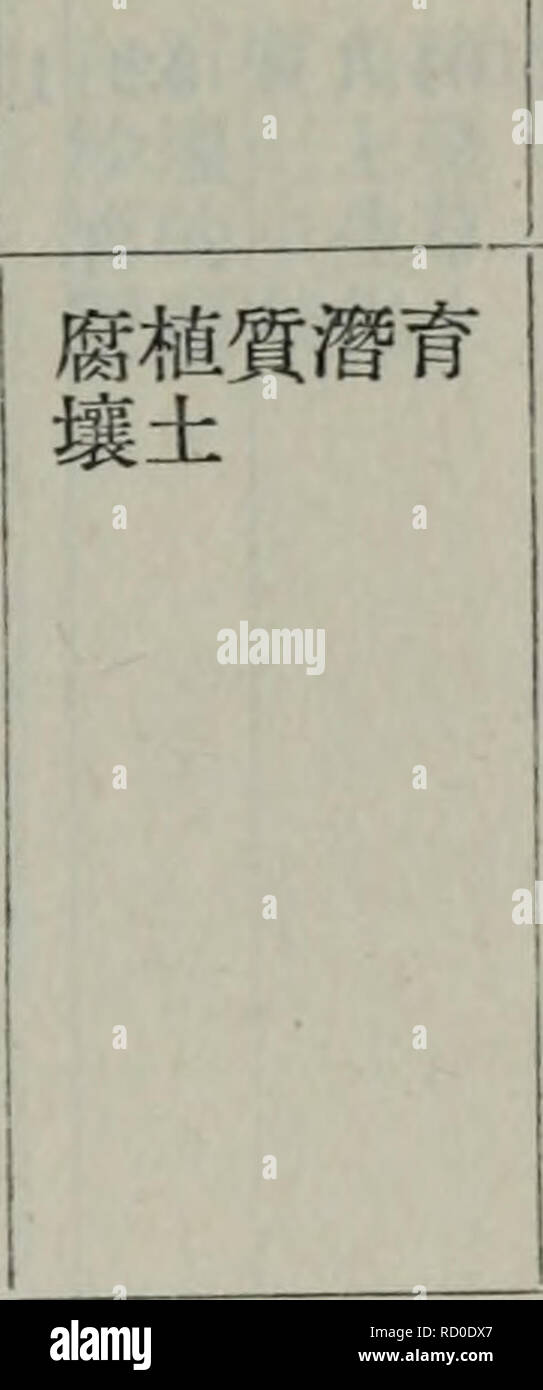 . da xing an ling sen lin zi yuan diao cha bao gao. botany. ????? ????? ????? ???? ???^? ????? ????? ?? ??5?. ????? ????? ????? ??? ?? 2° ????? ????? ????? ???? ???? ????? ?? Adenophora sublata spgr Vicia venosa var baicalensis copr j Anemone sibirica spgr Carex spgr Fragaria orientalis spgr Lathjrrus humilis sp Iris ensata var chinensis cop' gr Convallaria majalis var manshurica Sanquisorba officinalis Calamagrostis Rubus saxatilis Pulsatilla patens salix 15700 Ribes ' 6800 Rosa acicularis HOO Betuia fruticosa 4600 Spiraea sericea Lathyrus humilis Vicia Rubus Equisetum silvaticum Carex Fragar Stock Photohttps://www.alamy.com/image-license-details/?v=1https://www.alamy.com/da-xing-an-ling-sen-lin-zi-yuan-diao-cha-bao-gao-botany-5-2-adenophora-sublata-spgr-vicia-venosa-var-baicalensis-copr-j-anemone-sibirica-spgr-carex-spgr-fragaria-orientalis-spgr-lathjrrus-humilis-sp-iris-ensata-var-chinensis-cop-gr-convallaria-majalis-var-manshurica-sanquisorba-officinalis-calamagrostis-rubus-saxatilis-pulsatilla-patens-salix-15700-ribes-6800-rosa-acicularis-hoo-betuia-fruticosa-4600-spiraea-sericea-lathyrus-humilis-vicia-rubus-equisetum-silvaticum-carex-fragar-image231736239.html
. da xing an ling sen lin zi yuan diao cha bao gao. botany. ????? ????? ????? ???? ???^? ????? ????? ?? ??5?. ????? ????? ????? ??? ?? 2° ????? ????? ????? ???? ???? ????? ?? Adenophora sublata spgr Vicia venosa var baicalensis copr j Anemone sibirica spgr Carex spgr Fragaria orientalis spgr Lathjrrus humilis sp Iris ensata var chinensis cop' gr Convallaria majalis var manshurica Sanquisorba officinalis Calamagrostis Rubus saxatilis Pulsatilla patens salix 15700 Ribes ' 6800 Rosa acicularis HOO Betuia fruticosa 4600 Spiraea sericea Lathyrus humilis Vicia Rubus Equisetum silvaticum Carex Fragar Stock Photohttps://www.alamy.com/image-license-details/?v=1https://www.alamy.com/da-xing-an-ling-sen-lin-zi-yuan-diao-cha-bao-gao-botany-5-2-adenophora-sublata-spgr-vicia-venosa-var-baicalensis-copr-j-anemone-sibirica-spgr-carex-spgr-fragaria-orientalis-spgr-lathjrrus-humilis-sp-iris-ensata-var-chinensis-cop-gr-convallaria-majalis-var-manshurica-sanquisorba-officinalis-calamagrostis-rubus-saxatilis-pulsatilla-patens-salix-15700-ribes-6800-rosa-acicularis-hoo-betuia-fruticosa-4600-spiraea-sericea-lathyrus-humilis-vicia-rubus-equisetum-silvaticum-carex-fragar-image231736239.htmlRMRD0DX7–. da xing an ling sen lin zi yuan diao cha bao gao. botany. ????? ????? ????? ???? ???^? ????? ????? ?? ??5?. ????? ????? ????? ??? ?? 2° ????? ????? ????? ???? ???? ????? ?? Adenophora sublata spgr Vicia venosa var baicalensis copr j Anemone sibirica spgr Carex spgr Fragaria orientalis spgr Lathjrrus humilis sp Iris ensata var chinensis cop' gr Convallaria majalis var manshurica Sanquisorba officinalis Calamagrostis Rubus saxatilis Pulsatilla patens salix 15700 Ribes ' 6800 Rosa acicularis HOO Betuia fruticosa 4600 Spiraea sericea Lathyrus humilis Vicia Rubus Equisetum silvaticum Carex Fragar
 . Die Liasmulde von Markeldendorf bei Einbeck. 45 1. ? Equisetum Gümbeli Schenk sp. 1867. Calamites GiimbeH Schenk. Flora d. Grenzschichten. S. 10. t. 1. f. 8-10. 1869. Equisetum Gümbeli ScHiiiPKit. Traite de Pal. ve'g. S. '269. No. 28. Der Stengel gegliedert, erhaben gerippt. Die Rippen 1^ Mm. breit, einfach. Die bedeutende Grösse unterscheidet diese Species von E. Gmnbeli, sonst stimmt sie sehr gut mit den Abbildungen bei Schenk. Mit dieser kommt eine ungerippte Form vor, deren Ober- fläche mit markirten Linien bedeckt ist, die sehr häufig ana- stomosiren. In den Psilonotenschichten bei Deit Stock Photohttps://www.alamy.com/image-license-details/?v=1https://www.alamy.com/die-liasmulde-von-markeldendorf-bei-einbeck-45-1-equisetum-gmbeli-schenk-sp-1867-calamites-giimbeh-schenk-flora-d-grenzschichten-s-10-t-1-f-8-10-1869-equisetum-gmbeli-schiiipkit-traite-de-pal-veg-s-269-no-28-der-stengel-gegliedert-erhaben-gerippt-die-rippen-1-mm-breit-einfach-die-bedeutende-grsse-unterscheidet-diese-species-von-e-gmnbeli-sonst-stimmt-sie-sehr-gut-mit-den-abbildungen-bei-schenk-mit-dieser-kommt-eine-ungerippte-form-vor-deren-ober-flche-mit-markirten-linien-bedeckt-ist-die-sehr-hufig-ana-stomosiren-in-den-psilonotenschichten-bei-deit-image231508382.html
. Die Liasmulde von Markeldendorf bei Einbeck. 45 1. ? Equisetum Gümbeli Schenk sp. 1867. Calamites GiimbeH Schenk. Flora d. Grenzschichten. S. 10. t. 1. f. 8-10. 1869. Equisetum Gümbeli ScHiiiPKit. Traite de Pal. ve'g. S. '269. No. 28. Der Stengel gegliedert, erhaben gerippt. Die Rippen 1^ Mm. breit, einfach. Die bedeutende Grösse unterscheidet diese Species von E. Gmnbeli, sonst stimmt sie sehr gut mit den Abbildungen bei Schenk. Mit dieser kommt eine ungerippte Form vor, deren Ober- fläche mit markirten Linien bedeckt ist, die sehr häufig ana- stomosiren. In den Psilonotenschichten bei Deit Stock Photohttps://www.alamy.com/image-license-details/?v=1https://www.alamy.com/die-liasmulde-von-markeldendorf-bei-einbeck-45-1-equisetum-gmbeli-schenk-sp-1867-calamites-giimbeh-schenk-flora-d-grenzschichten-s-10-t-1-f-8-10-1869-equisetum-gmbeli-schiiipkit-traite-de-pal-veg-s-269-no-28-der-stengel-gegliedert-erhaben-gerippt-die-rippen-1-mm-breit-einfach-die-bedeutende-grsse-unterscheidet-diese-species-von-e-gmnbeli-sonst-stimmt-sie-sehr-gut-mit-den-abbildungen-bei-schenk-mit-dieser-kommt-eine-ungerippte-form-vor-deren-ober-flche-mit-markirten-linien-bedeckt-ist-die-sehr-hufig-ana-stomosiren-in-den-psilonotenschichten-bei-deit-image231508382.htmlRMRCJ38E–. Die Liasmulde von Markeldendorf bei Einbeck. 45 1. ? Equisetum Gümbeli Schenk sp. 1867. Calamites GiimbeH Schenk. Flora d. Grenzschichten. S. 10. t. 1. f. 8-10. 1869. Equisetum Gümbeli ScHiiiPKit. Traite de Pal. ve'g. S. '269. No. 28. Der Stengel gegliedert, erhaben gerippt. Die Rippen 1^ Mm. breit, einfach. Die bedeutende Grösse unterscheidet diese Species von E. Gmnbeli, sonst stimmt sie sehr gut mit den Abbildungen bei Schenk. Mit dieser kommt eine ungerippte Form vor, deren Ober- fläche mit markirten Linien bedeckt ist, die sehr häufig ana- stomosiren. In den Psilonotenschichten bei Deit
 . Dansk botanisk arkiv. Plants; Plants -- Denmark. 34 Dansk Botanisk Arkiv, Bd. 2. Nr. 5. Dinemasporium graininnm Lév. Paa visne Blade af Luzula pilosa. S. Gelsskov, Aug. 1914. Melanconiales. *Gloeosporium gallaruni Ch. Rich. Paa Galler, frembragt af Dryophanta sp., paa Blade af Quercus robur. S. Hareskov, Aug. 1915. Gloeosporium equiseti Ell. et Ev. Paa Equisetum fluviatile. S. Eske- mosegaard, Aug. 1913. *Gloeosporium mnsarnm Cooke et Mass. var. importatum Laubert. Paa importerede Frugter af Musa. København, Aug. 1912. Konidierne 15—20 x 7—8^; Cooke et Massee angiver for Hoved- arten 10—12 x Stock Photohttps://www.alamy.com/image-license-details/?v=1https://www.alamy.com/dansk-botanisk-arkiv-plants-plants-denmark-34-dansk-botanisk-arkiv-bd-2-nr-5-dinemasporium-graininnm-lv-paa-visne-blade-af-luzula-pilosa-s-gelsskov-aug-1914-melanconiales-gloeosporium-gallaruni-ch-rich-paa-galler-frembragt-af-dryophanta-sp-paa-blade-af-quercus-robur-s-hareskov-aug-1915-gloeosporium-equiseti-ell-et-ev-paa-equisetum-fluviatile-s-eske-mosegaard-aug-1913-gloeosporium-mnsarnm-cooke-et-mass-var-importatum-laubert-paa-importerede-frugter-af-musa-kbenhavn-aug-1912-konidierne-1520-x-78-cooke-et-massee-angiver-for-hoved-arten-1012-x-image231743587.html
. Dansk botanisk arkiv. Plants; Plants -- Denmark. 34 Dansk Botanisk Arkiv, Bd. 2. Nr. 5. Dinemasporium graininnm Lév. Paa visne Blade af Luzula pilosa. S. Gelsskov, Aug. 1914. Melanconiales. *Gloeosporium gallaruni Ch. Rich. Paa Galler, frembragt af Dryophanta sp., paa Blade af Quercus robur. S. Hareskov, Aug. 1915. Gloeosporium equiseti Ell. et Ev. Paa Equisetum fluviatile. S. Eske- mosegaard, Aug. 1913. *Gloeosporium mnsarnm Cooke et Mass. var. importatum Laubert. Paa importerede Frugter af Musa. København, Aug. 1912. Konidierne 15—20 x 7—8^; Cooke et Massee angiver for Hoved- arten 10—12 x Stock Photohttps://www.alamy.com/image-license-details/?v=1https://www.alamy.com/dansk-botanisk-arkiv-plants-plants-denmark-34-dansk-botanisk-arkiv-bd-2-nr-5-dinemasporium-graininnm-lv-paa-visne-blade-af-luzula-pilosa-s-gelsskov-aug-1914-melanconiales-gloeosporium-gallaruni-ch-rich-paa-galler-frembragt-af-dryophanta-sp-paa-blade-af-quercus-robur-s-hareskov-aug-1915-gloeosporium-equiseti-ell-et-ev-paa-equisetum-fluviatile-s-eske-mosegaard-aug-1913-gloeosporium-mnsarnm-cooke-et-mass-var-importatum-laubert-paa-importerede-frugter-af-musa-kbenhavn-aug-1912-konidierne-1520-x-78-cooke-et-massee-angiver-for-hoved-arten-1012-x-image231743587.htmlRMRD0R8K–. Dansk botanisk arkiv. Plants; Plants -- Denmark. 34 Dansk Botanisk Arkiv, Bd. 2. Nr. 5. Dinemasporium graininnm Lév. Paa visne Blade af Luzula pilosa. S. Gelsskov, Aug. 1914. Melanconiales. *Gloeosporium gallaruni Ch. Rich. Paa Galler, frembragt af Dryophanta sp., paa Blade af Quercus robur. S. Hareskov, Aug. 1915. Gloeosporium equiseti Ell. et Ev. Paa Equisetum fluviatile. S. Eske- mosegaard, Aug. 1913. *Gloeosporium mnsarnm Cooke et Mass. var. importatum Laubert. Paa importerede Frugter af Musa. København, Aug. 1912. Konidierne 15—20 x 7—8^; Cooke et Massee angiver for Hoved- arten 10—12 x
![. dong bei yao yong zhi wu zhi. Botany. è±³7éè Equisetum arvonse L. 1. æ¤&çä¸é¨(示ftå-åffiåç1?ã 0ï¼ 2. æ±å-Kæ¤ï¼3.(a)æ±å-åå¼µéçå½çµ²ï¼ (b)»絲港ç¹å¨æ±å- hã ç»8æ¨è³ Equisetnm hyemale L. ]â¢è¢«ç©çä¸é¨ï¼2.^çä¸é¨ï¼ç¤ºæ±å-èçï¼; 3.è^é¢æ¾å¤§(示11ä¸çå°çªèµ·ï¼ï¼ 4.èç«|åã æ¨è³(åç¥æ¬èï¼glj稱:å§è(æ±åï¼,ç¯éª¨è(æ±åï¼ï¼æ¨[1«è(é稱ï¼å8 Equisetum hyemale L. Sp. PI. (1753) 1062; Kom. Fl. Mansh. I (1901) 156ï¼ Kom. et Alis. Key. PI. Far East. Reg. USSR I (1931)100, tab. 21, fig. 4; Iljin in Kom. Fl. URSS I (1934) 110, tab. V, fig. 8aâb; Kitag. Lineam. Fl. Mansh. (1939) 41; 4>Jopa wypMancKoft. Pleas Stock Photo . dong bei yao yong zhi wu zhi. Botany. è±³7éè Equisetum arvonse L. 1. æ¤&çä¸é¨(示ftå-åffiåç1?ã 0ï¼ 2. æ±å-Kæ¤ï¼3.(a)æ±å-åå¼µéçå½çµ²ï¼ (b)»絲港ç¹å¨æ±å- hã ç»8æ¨è³ Equisetnm hyemale L. ]â¢è¢«ç©çä¸é¨ï¼2.^çä¸é¨ï¼ç¤ºæ±å-èçï¼; 3.è^é¢æ¾å¤§(示11ä¸çå°çªèµ·ï¼ï¼ 4.èç«|åã æ¨è³(åç¥æ¬èï¼glj稱:å§è(æ±åï¼,ç¯éª¨è(æ±åï¼ï¼æ¨[1«è(é稱ï¼å8 Equisetum hyemale L. Sp. PI. (1753) 1062; Kom. Fl. Mansh. I (1901) 156ï¼ Kom. et Alis. Key. PI. Far East. Reg. USSR I (1931)100, tab. 21, fig. 4; Iljin in Kom. Fl. URSS I (1934) 110, tab. V, fig. 8aâb; Kitag. Lineam. Fl. Mansh. (1939) 41; 4>Jopa wypMancKoft. Pleas Stock Photo](https://c8.alamy.com/comp/RCB695/dong-bei-yao-yong-zhi-wu-zhi-botany-7-equisetum-arvonse-l-1-ampft-ffi1-0-2-k3a-b-h-8-equisetnm-hyemale-l-2-311-4-glj-18-equisetum-hyemale-l-sp-pi-1753-1062-kom-fl-mansh-i-1901-156-kom-et-alis-key-pi-far-east-reg-ussr-i-1931100-tab-21-fig-4-iljin-in-kom-fl-urss-i-1934-110-tab-v-fig-8ab-kitag-lineam-fl-mansh-1939-41-4gtjopa-wypmanckoft-pleas-RCB695.jpg) . dong bei yao yong zhi wu zhi. Botany. è±³7éè Equisetum arvonse L. 1. æ¤&çä¸é¨(示ftå-åffiåç1?ã 0ï¼ 2. æ±å-Kæ¤ï¼3.(a)æ±å-åå¼µéçå½çµ²ï¼ (b)»絲港ç¹å¨æ±å- hã ç»8æ¨è³ Equisetnm hyemale L. ]â¢è¢«ç©çä¸é¨ï¼2.^çä¸é¨ï¼ç¤ºæ±å-èçï¼; 3.è^é¢æ¾å¤§(示11ä¸çå°çªèµ·ï¼ï¼ 4.èç«|åã æ¨è³(åç¥æ¬èï¼glj稱:å§è(æ±åï¼,ç¯éª¨è(æ±åï¼ï¼æ¨[1«è(é稱ï¼å8 Equisetum hyemale L. Sp. PI. (1753) 1062; Kom. Fl. Mansh. I (1901) 156ï¼ Kom. et Alis. Key. PI. Far East. Reg. USSR I (1931)100, tab. 21, fig. 4; Iljin in Kom. Fl. URSS I (1934) 110, tab. V, fig. 8aâb; Kitag. Lineam. Fl. Mansh. (1939) 41; 4>Jopa wypMancKoft. Pleas Stock Photohttps://www.alamy.com/image-license-details/?v=1https://www.alamy.com/dong-bei-yao-yong-zhi-wu-zhi-botany-7-equisetum-arvonse-l-1-ampft-ffi1-0-2-k3a-b-h-8-equisetnm-hyemale-l-2-311-4-glj-18-equisetum-hyemale-l-sp-pi-1753-1062-kom-fl-mansh-i-1901-156-kom-et-alis-key-pi-far-east-reg-ussr-i-1931100-tab-21-fig-4-iljin-in-kom-fl-urss-i-1934-110-tab-v-fig-8ab-kitag-lineam-fl-mansh-1939-41-4gtjopa-wypmanckoft-pleas-image231357089.html
. dong bei yao yong zhi wu zhi. Botany. è±³7éè Equisetum arvonse L. 1. æ¤&çä¸é¨(示ftå-åffiåç1?ã 0ï¼ 2. æ±å-Kæ¤ï¼3.(a)æ±å-åå¼µéçå½çµ²ï¼ (b)»絲港ç¹å¨æ±å- hã ç»8æ¨è³ Equisetnm hyemale L. ]â¢è¢«ç©çä¸é¨ï¼2.^çä¸é¨ï¼ç¤ºæ±å-èçï¼; 3.è^é¢æ¾å¤§(示11ä¸çå°çªèµ·ï¼ï¼ 4.èç«|åã æ¨è³(åç¥æ¬èï¼glj稱:å§è(æ±åï¼,ç¯éª¨è(æ±åï¼ï¼æ¨[1«è(é稱ï¼å8 Equisetum hyemale L. Sp. PI. (1753) 1062; Kom. Fl. Mansh. I (1901) 156ï¼ Kom. et Alis. Key. PI. Far East. Reg. USSR I (1931)100, tab. 21, fig. 4; Iljin in Kom. Fl. URSS I (1934) 110, tab. V, fig. 8aâb; Kitag. Lineam. Fl. Mansh. (1939) 41; 4>Jopa wypMancKoft. Pleas Stock Photohttps://www.alamy.com/image-license-details/?v=1https://www.alamy.com/dong-bei-yao-yong-zhi-wu-zhi-botany-7-equisetum-arvonse-l-1-ampft-ffi1-0-2-k3a-b-h-8-equisetnm-hyemale-l-2-311-4-glj-18-equisetum-hyemale-l-sp-pi-1753-1062-kom-fl-mansh-i-1901-156-kom-et-alis-key-pi-far-east-reg-ussr-i-1931100-tab-21-fig-4-iljin-in-kom-fl-urss-i-1934-110-tab-v-fig-8ab-kitag-lineam-fl-mansh-1939-41-4gtjopa-wypmanckoft-pleas-image231357089.htmlRMRCB695–. dong bei yao yong zhi wu zhi. Botany. è±³7éè Equisetum arvonse L. 1. æ¤&çä¸é¨(示ftå-åffiåç1?ã 0ï¼ 2. æ±å-Kæ¤ï¼3.(a)æ±å-åå¼µéçå½çµ²ï¼ (b)»絲港ç¹å¨æ±å- hã ç»8æ¨è³ Equisetnm hyemale L. ]â¢è¢«ç©çä¸é¨ï¼2.^çä¸é¨ï¼ç¤ºæ±å-èçï¼; 3.è^é¢æ¾å¤§(示11ä¸çå°çªèµ·ï¼ï¼ 4.èç«|åã æ¨è³(åç¥æ¬èï¼glj稱:å§è(æ±åï¼,ç¯éª¨è(æ±åï¼ï¼æ¨[1«è(é稱ï¼å8 Equisetum hyemale L. Sp. PI. (1753) 1062; Kom. Fl. Mansh. I (1901) 156ï¼ Kom. et Alis. Key. PI. Far East. Reg. USSR I (1931)100, tab. 21, fig. 4; Iljin in Kom. Fl. URSS I (1934) 110, tab. V, fig. 8aâb; Kitag. Lineam. Fl. Mansh. (1939) 41; 4>Jopa wypMancKoft. Pleas
![. dong bei yao yong zhi wu zhi. Botany. è±³7éè Equisetum arvonse L. 1. æ¤&çä¸é¨(示ftå-åffiåç1?ã 0ï¼ 2. æ±å-Kæ¤ï¼3.(a)æ±å-åå¼µéçå½çµ²ï¼ (b)»絲港ç¹å¨æ±å- hã ç»8æ¨è³ Equisetnm hyemale L. ]â¢è¢«ç©çä¸é¨ï¼2.^çä¸é¨ï¼ç¤ºæ±å-èçï¼; 3.è^é¢æ¾å¤§(示11ä¸çå°çªèµ·ï¼ï¼ 4.èç«|åã æ¨è³(åç¥æ¬èï¼glj稱:å§è(æ±åï¼,ç¯éª¨è(æ±åï¼ï¼æ¨[1«è(é稱ï¼å8 Equisetum hyemale L. Sp. PI. (1753) 1062; Kom. Fl. Mansh. I (1901) 156ï¼ Kom. et Alis. Key. PI. Far East. Reg. USSR I (1931)100, tab. 21, fig. 4; Iljin in Kom. Fl. URSS I (1934) 110, tab. V, fig. 8aâb; Kitag. Lineam. Fl. Mansh. (1939) 41; 4>Jopa wypMancKoft. Pleas Stock Photo . dong bei yao yong zhi wu zhi. Botany. è±³7éè Equisetum arvonse L. 1. æ¤&çä¸é¨(示ftå-åffiåç1?ã 0ï¼ 2. æ±å-Kæ¤ï¼3.(a)æ±å-åå¼µéçå½çµ²ï¼ (b)»絲港ç¹å¨æ±å- hã ç»8æ¨è³ Equisetnm hyemale L. ]â¢è¢«ç©çä¸é¨ï¼2.^çä¸é¨ï¼ç¤ºæ±å-èçï¼; 3.è^é¢æ¾å¤§(示11ä¸çå°çªèµ·ï¼ï¼ 4.èç«|åã æ¨è³(åç¥æ¬èï¼glj稱:å§è(æ±åï¼,ç¯éª¨è(æ±åï¼ï¼æ¨[1«è(é稱ï¼å8 Equisetum hyemale L. Sp. PI. (1753) 1062; Kom. Fl. Mansh. I (1901) 156ï¼ Kom. et Alis. Key. PI. Far East. Reg. USSR I (1931)100, tab. 21, fig. 4; Iljin in Kom. Fl. URSS I (1934) 110, tab. V, fig. 8aâb; Kitag. Lineam. Fl. Mansh. (1939) 41; 4>Jopa wypMancKoft. Pleas Stock Photo](https://c8.alamy.com/comp/RCCD8E/dong-bei-yao-yong-zhi-wu-zhi-botany-7-equisetum-arvonse-l-1-ampft-ffi1-0-2-k3a-b-h-8-equisetnm-hyemale-l-2-311-4-glj-18-equisetum-hyemale-l-sp-pi-1753-1062-kom-fl-mansh-i-1901-156-kom-et-alis-key-pi-far-east-reg-ussr-i-1931100-tab-21-fig-4-iljin-in-kom-fl-urss-i-1934-110-tab-v-fig-8ab-kitag-lineam-fl-mansh-1939-41-4gtjopa-wypmanckoft-pleas-RCCD8E.jpg) . dong bei yao yong zhi wu zhi. Botany. è±³7éè Equisetum arvonse L. 1. æ¤&çä¸é¨(示ftå-åffiåç1?ã 0ï¼ 2. æ±å-Kæ¤ï¼3.(a)æ±å-åå¼µéçå½çµ²ï¼ (b)»絲港ç¹å¨æ±å- hã ç»8æ¨è³ Equisetnm hyemale L. ]â¢è¢«ç©çä¸é¨ï¼2.^çä¸é¨ï¼ç¤ºæ±å-èçï¼; 3.è^é¢æ¾å¤§(示11ä¸çå°çªèµ·ï¼ï¼ 4.èç«|åã æ¨è³(åç¥æ¬èï¼glj稱:å§è(æ±åï¼,ç¯éª¨è(æ±åï¼ï¼æ¨[1«è(é稱ï¼å8 Equisetum hyemale L. Sp. PI. (1753) 1062; Kom. Fl. Mansh. I (1901) 156ï¼ Kom. et Alis. Key. PI. Far East. Reg. USSR I (1931)100, tab. 21, fig. 4; Iljin in Kom. Fl. URSS I (1934) 110, tab. V, fig. 8aâb; Kitag. Lineam. Fl. Mansh. (1939) 41; 4>Jopa wypMancKoft. Pleas Stock Photohttps://www.alamy.com/image-license-details/?v=1https://www.alamy.com/dong-bei-yao-yong-zhi-wu-zhi-botany-7-equisetum-arvonse-l-1-ampft-ffi1-0-2-k3a-b-h-8-equisetnm-hyemale-l-2-311-4-glj-18-equisetum-hyemale-l-sp-pi-1753-1062-kom-fl-mansh-i-1901-156-kom-et-alis-key-pi-far-east-reg-ussr-i-1931100-tab-21-fig-4-iljin-in-kom-fl-urss-i-1934-110-tab-v-fig-8ab-kitag-lineam-fl-mansh-1939-41-4gtjopa-wypmanckoft-pleas-image231384510.html
. dong bei yao yong zhi wu zhi. Botany. è±³7éè Equisetum arvonse L. 1. æ¤&çä¸é¨(示ftå-åffiåç1?ã 0ï¼ 2. æ±å-Kæ¤ï¼3.(a)æ±å-åå¼µéçå½çµ²ï¼ (b)»絲港ç¹å¨æ±å- hã ç»8æ¨è³ Equisetnm hyemale L. ]â¢è¢«ç©çä¸é¨ï¼2.^çä¸é¨ï¼ç¤ºæ±å-èçï¼; 3.è^é¢æ¾å¤§(示11ä¸çå°çªèµ·ï¼ï¼ 4.èç«|åã æ¨è³(åç¥æ¬èï¼glj稱:å§è(æ±åï¼,ç¯éª¨è(æ±åï¼ï¼æ¨[1«è(é稱ï¼å8 Equisetum hyemale L. Sp. PI. (1753) 1062; Kom. Fl. Mansh. I (1901) 156ï¼ Kom. et Alis. Key. PI. Far East. Reg. USSR I (1931)100, tab. 21, fig. 4; Iljin in Kom. Fl. URSS I (1934) 110, tab. V, fig. 8aâb; Kitag. Lineam. Fl. Mansh. (1939) 41; 4>Jopa wypMancKoft. Pleas Stock Photohttps://www.alamy.com/image-license-details/?v=1https://www.alamy.com/dong-bei-yao-yong-zhi-wu-zhi-botany-7-equisetum-arvonse-l-1-ampft-ffi1-0-2-k3a-b-h-8-equisetnm-hyemale-l-2-311-4-glj-18-equisetum-hyemale-l-sp-pi-1753-1062-kom-fl-mansh-i-1901-156-kom-et-alis-key-pi-far-east-reg-ussr-i-1931100-tab-21-fig-4-iljin-in-kom-fl-urss-i-1934-110-tab-v-fig-8ab-kitag-lineam-fl-mansh-1939-41-4gtjopa-wypmanckoft-pleas-image231384510.htmlRMRCCD8E–. dong bei yao yong zhi wu zhi. Botany. è±³7éè Equisetum arvonse L. 1. æ¤&çä¸é¨(示ftå-åffiåç1?ã 0ï¼ 2. æ±å-Kæ¤ï¼3.(a)æ±å-åå¼µéçå½çµ²ï¼ (b)»絲港ç¹å¨æ±å- hã ç»8æ¨è³ Equisetnm hyemale L. ]â¢è¢«ç©çä¸é¨ï¼2.^çä¸é¨ï¼ç¤ºæ±å-èçï¼; 3.è^é¢æ¾å¤§(示11ä¸çå°çªèµ·ï¼ï¼ 4.èç«|åã æ¨è³(åç¥æ¬èï¼glj稱:å§è(æ±åï¼,ç¯éª¨è(æ±åï¼ï¼æ¨[1«è(é稱ï¼å8 Equisetum hyemale L. Sp. PI. (1753) 1062; Kom. Fl. Mansh. I (1901) 156ï¼ Kom. et Alis. Key. PI. Far East. Reg. USSR I (1931)100, tab. 21, fig. 4; Iljin in Kom. Fl. URSS I (1934) 110, tab. V, fig. 8aâb; Kitag. Lineam. Fl. Mansh. (1939) 41; 4>Jopa wypMancKoft. Pleas